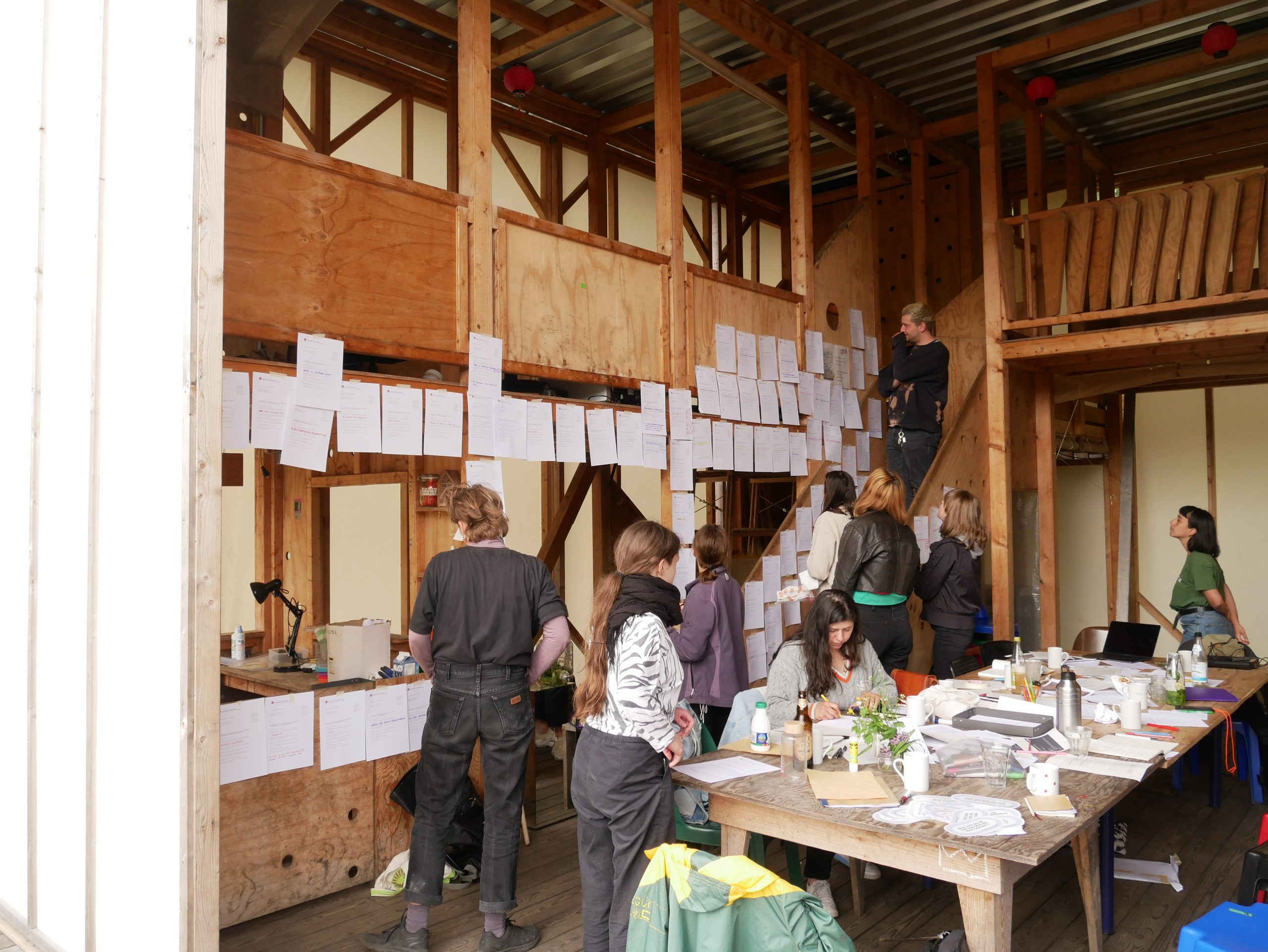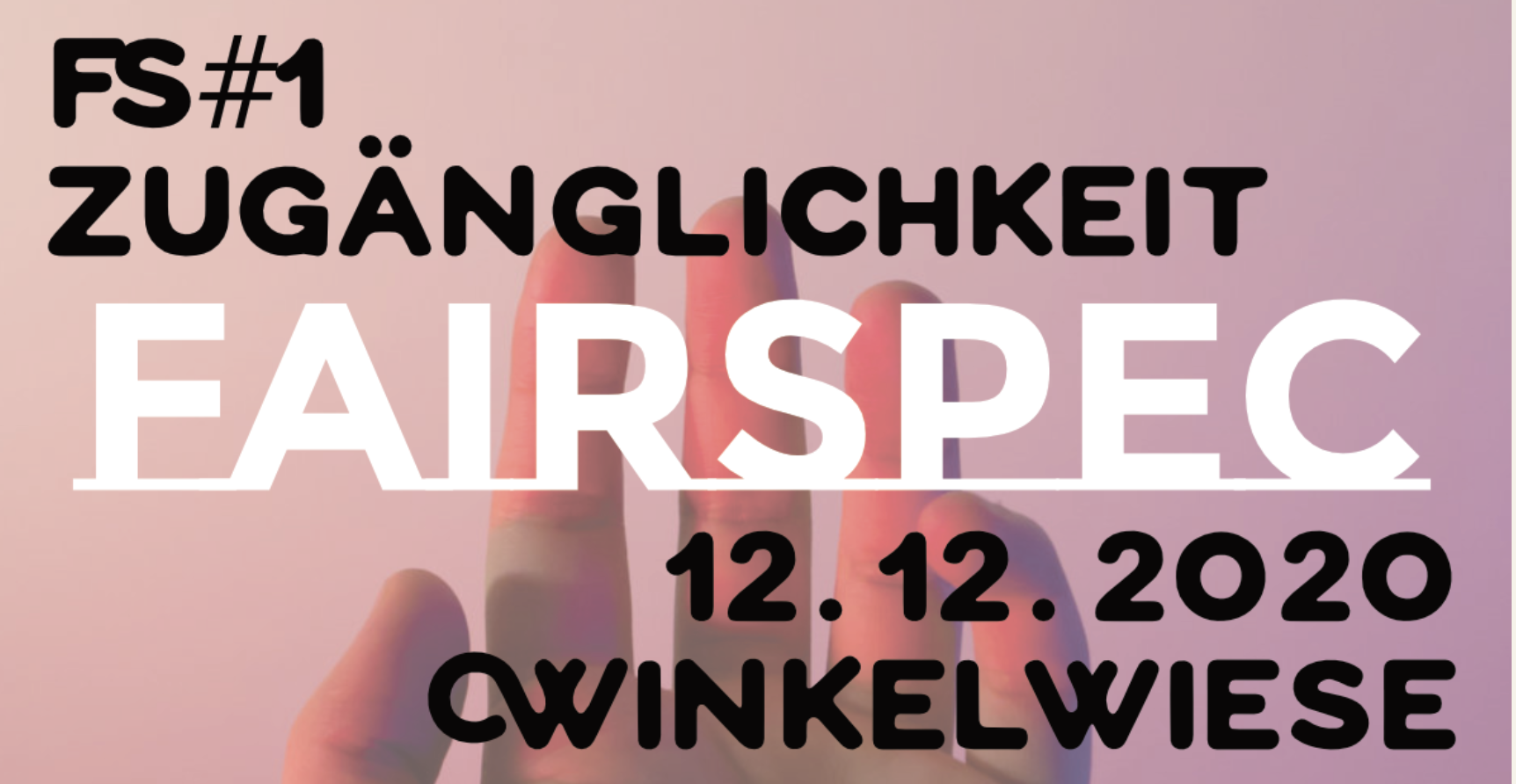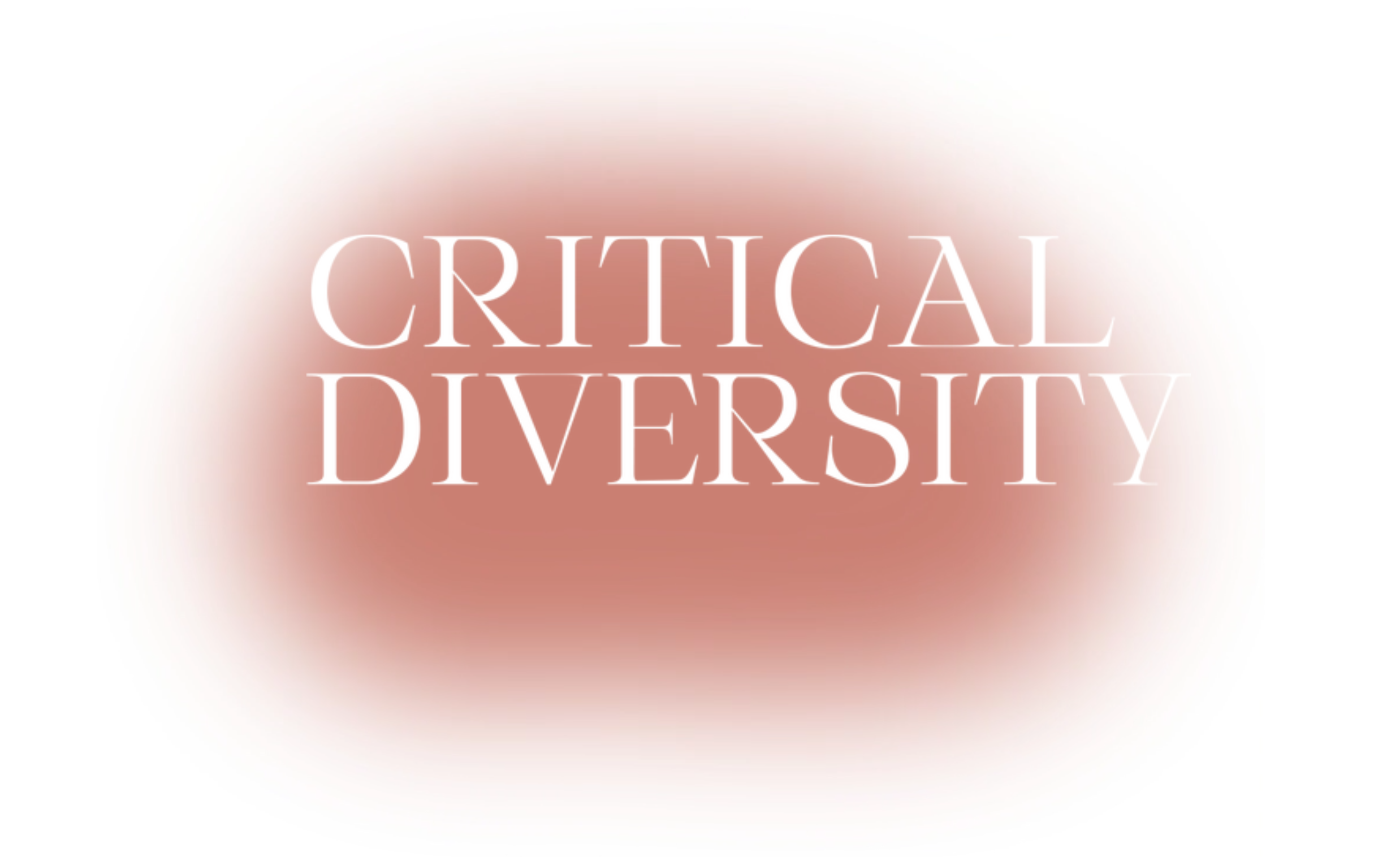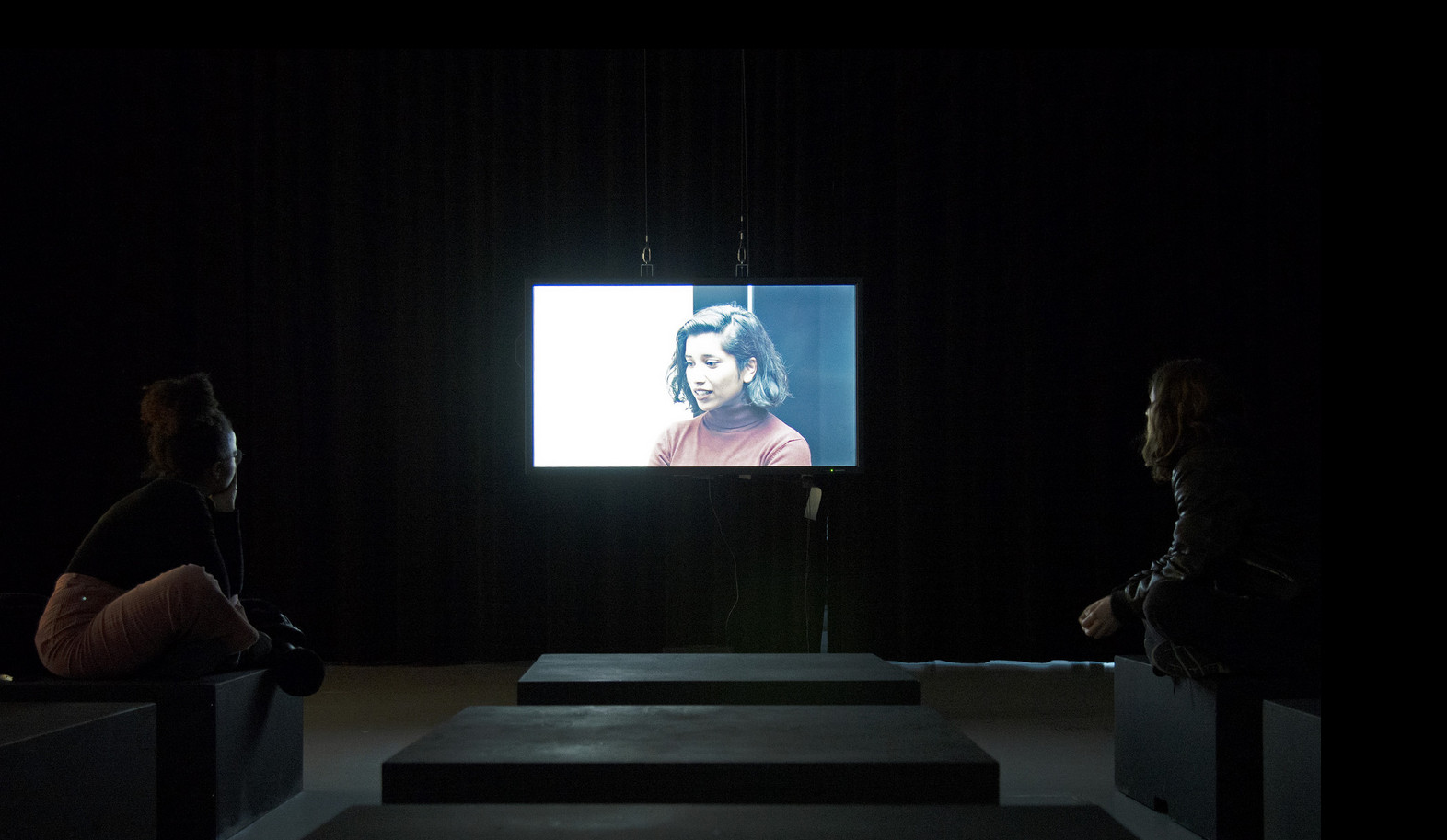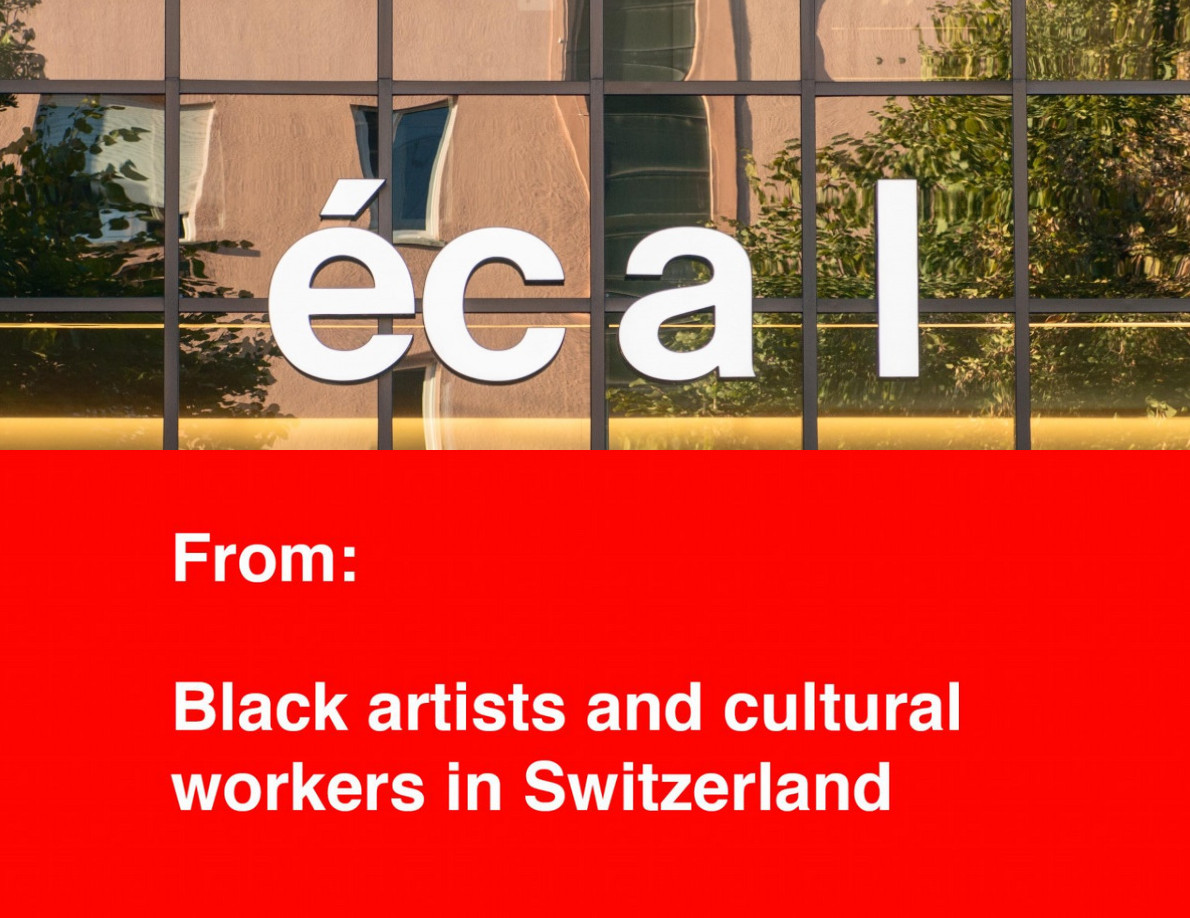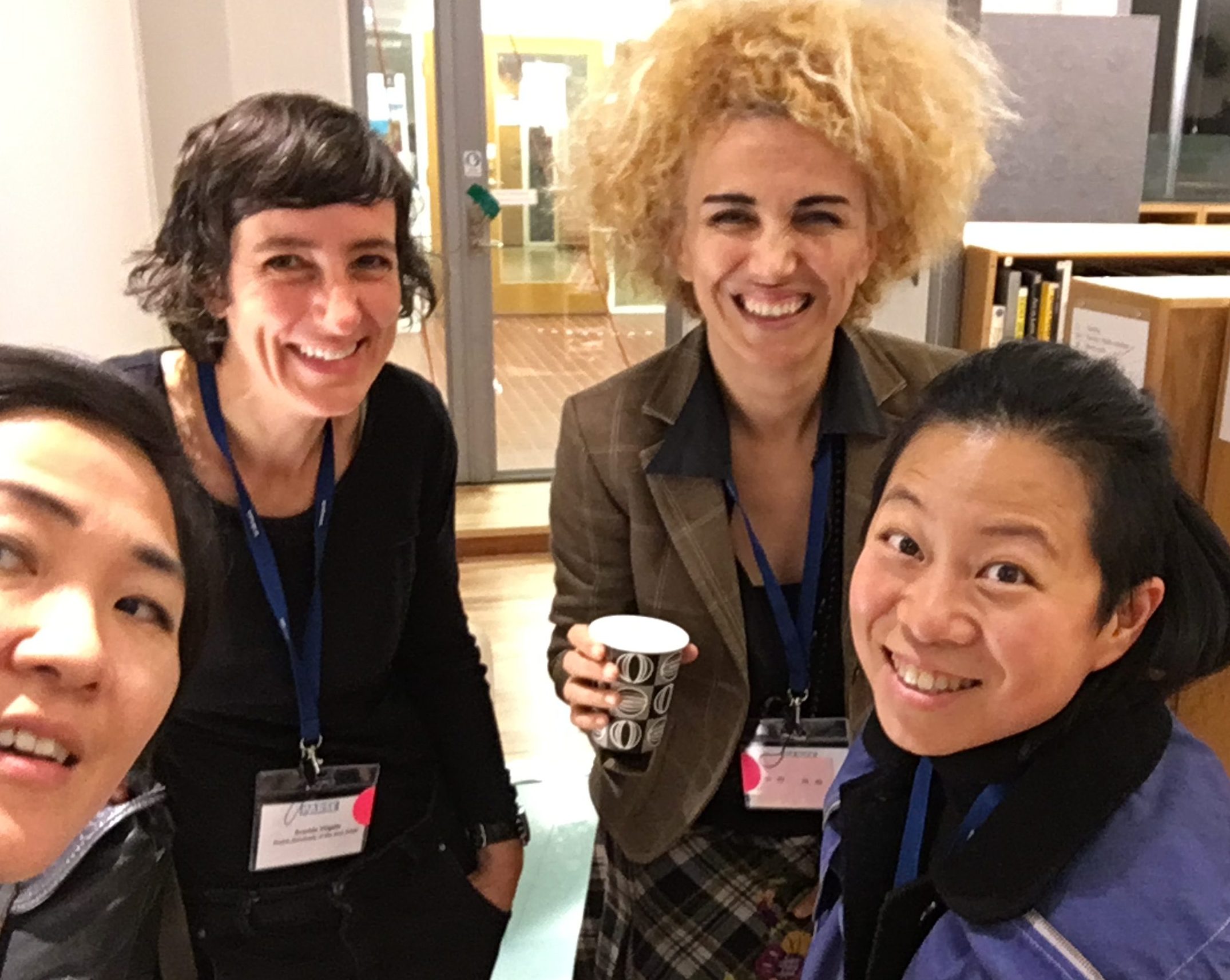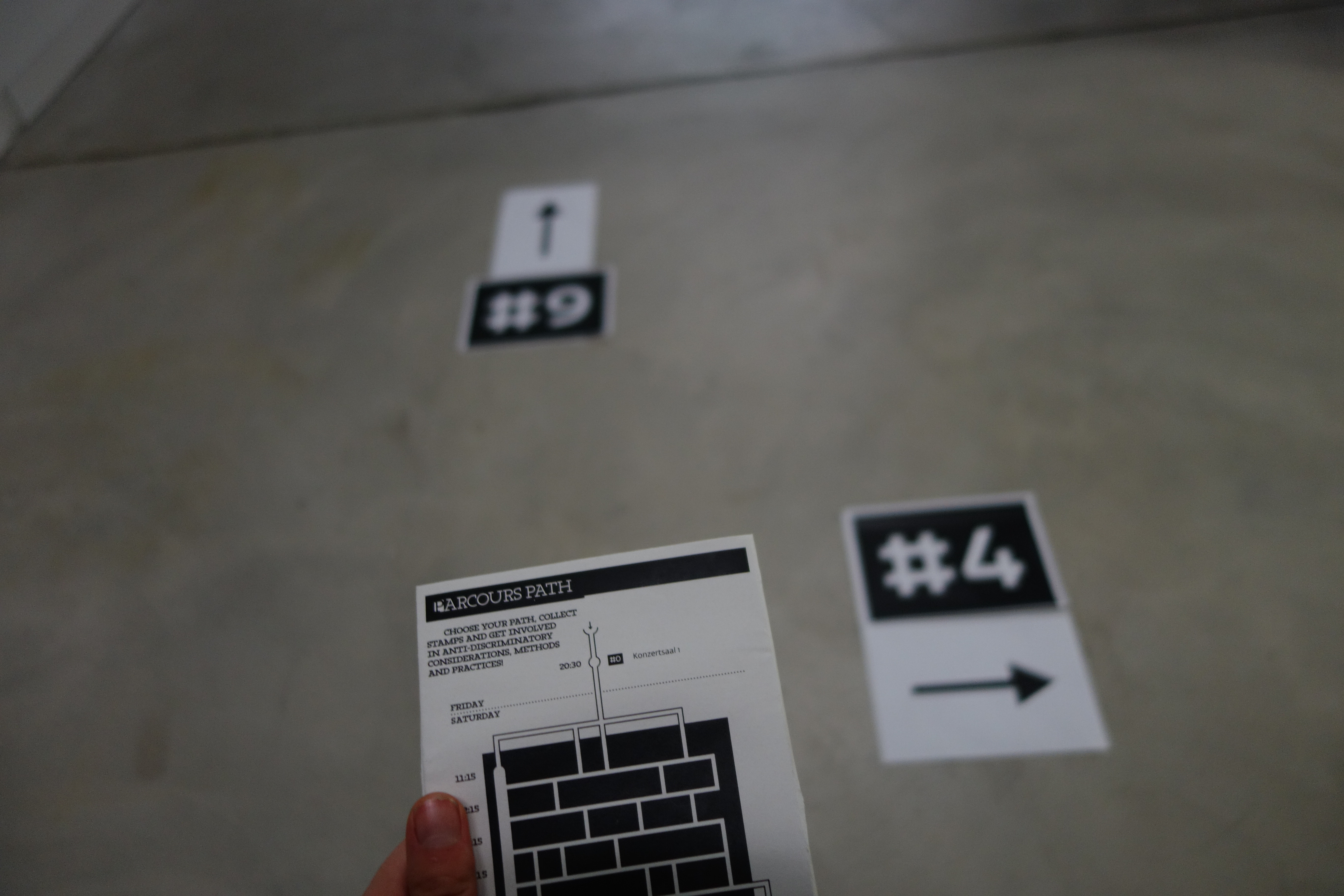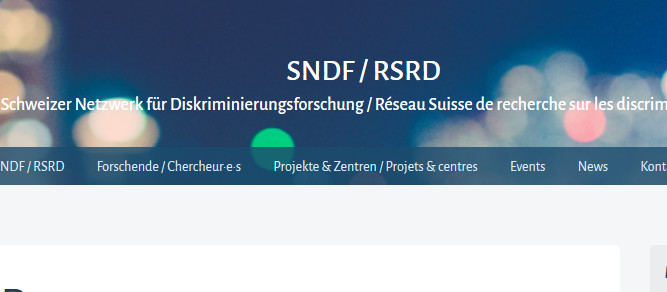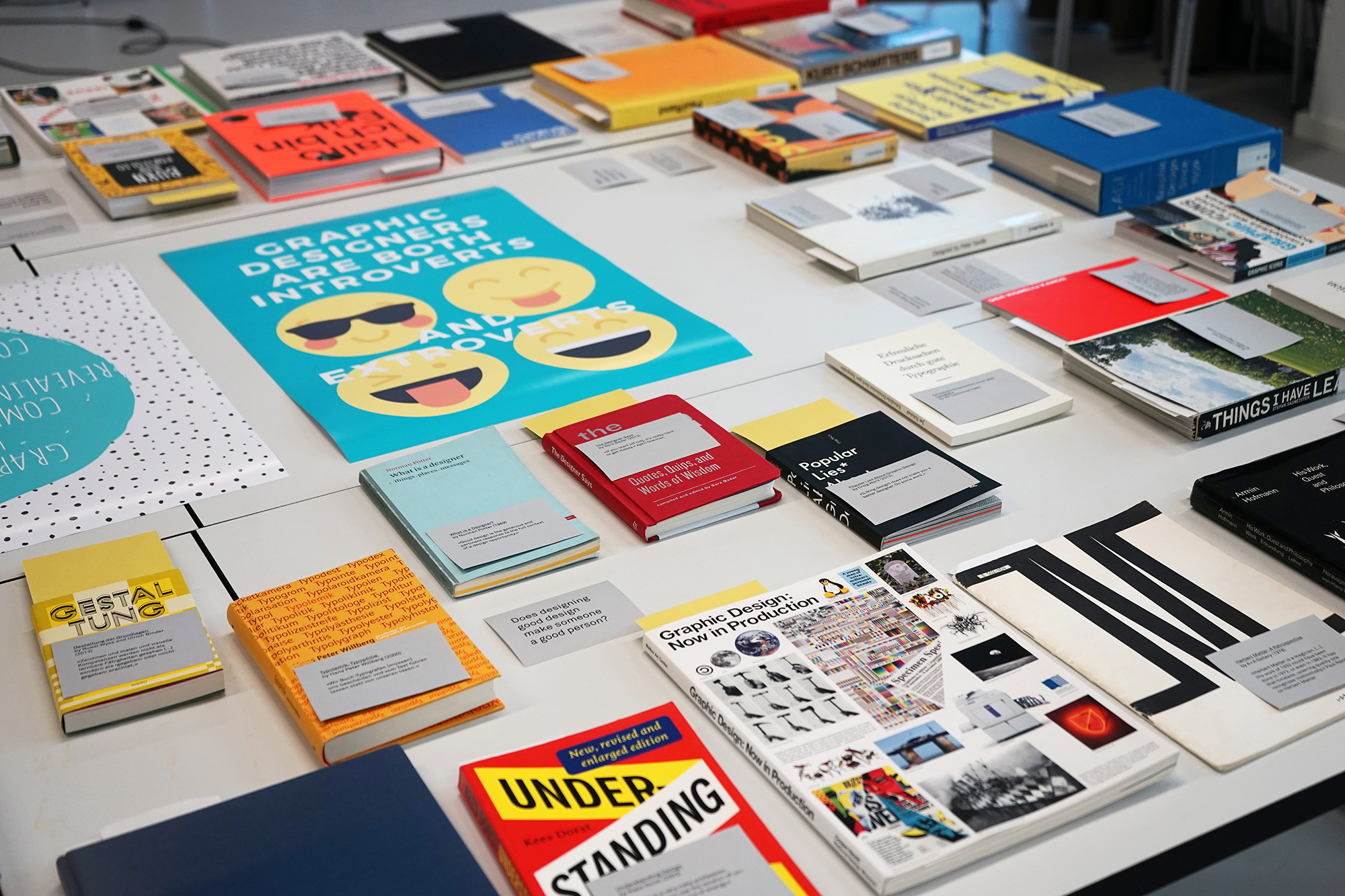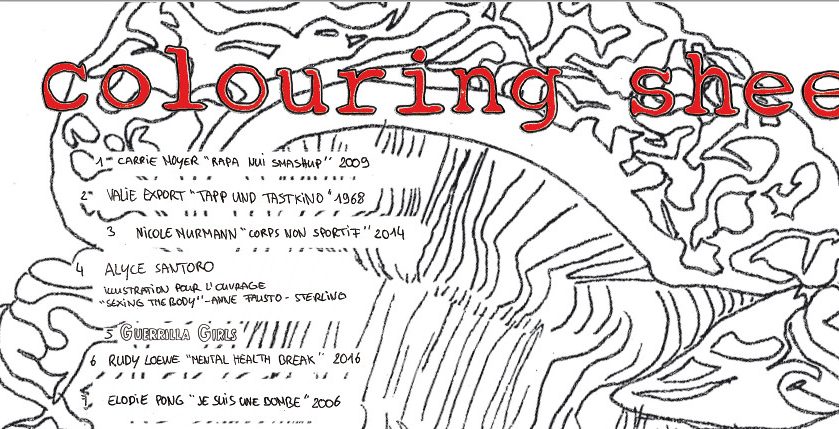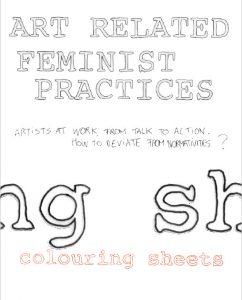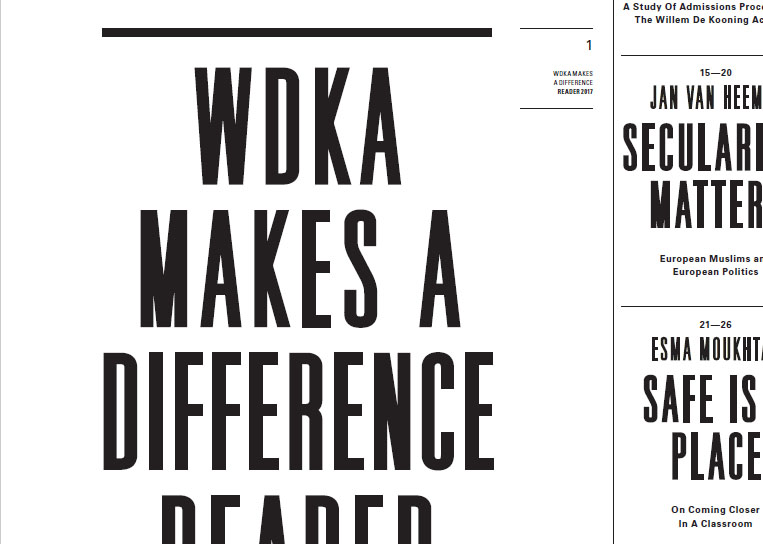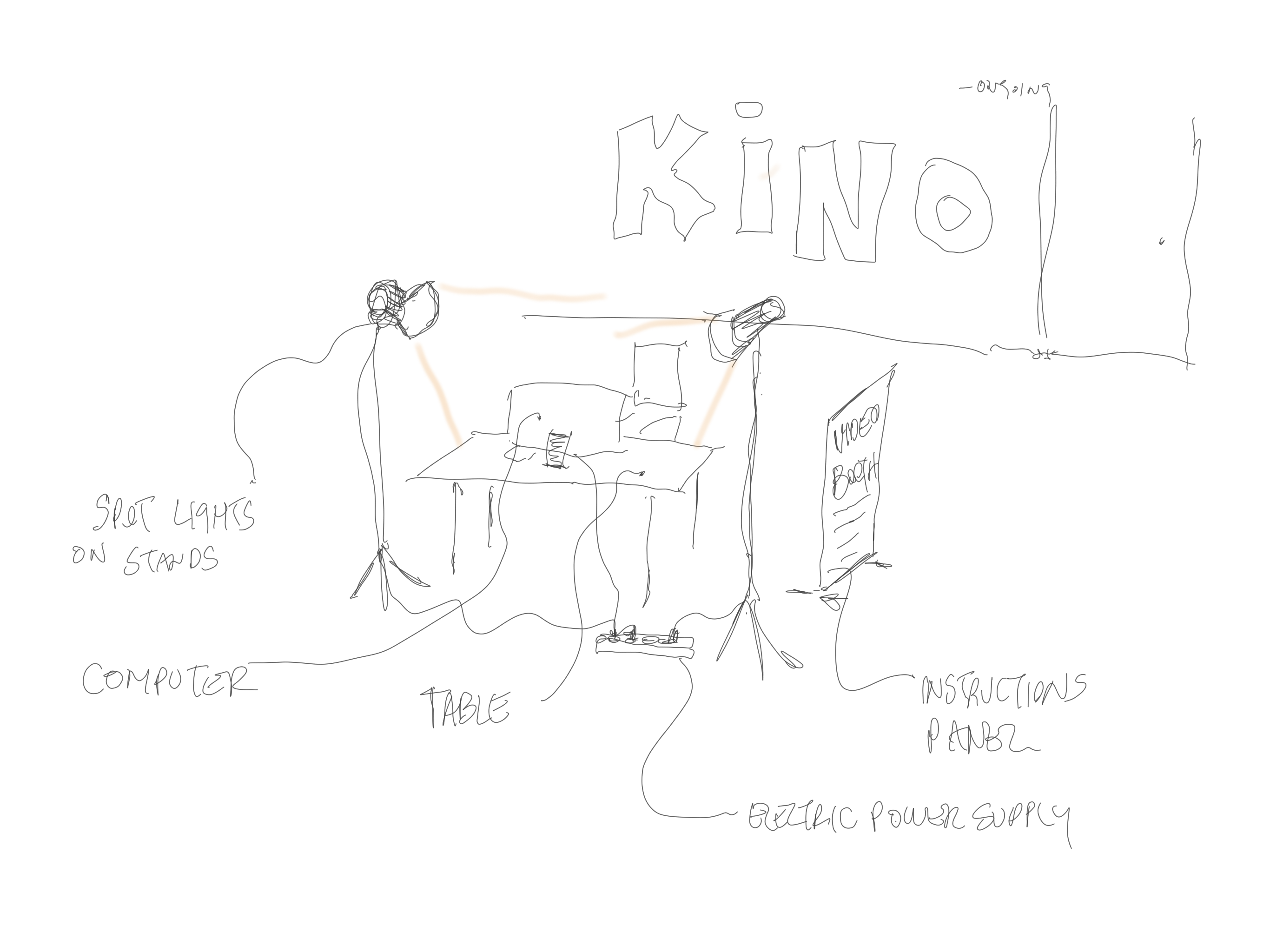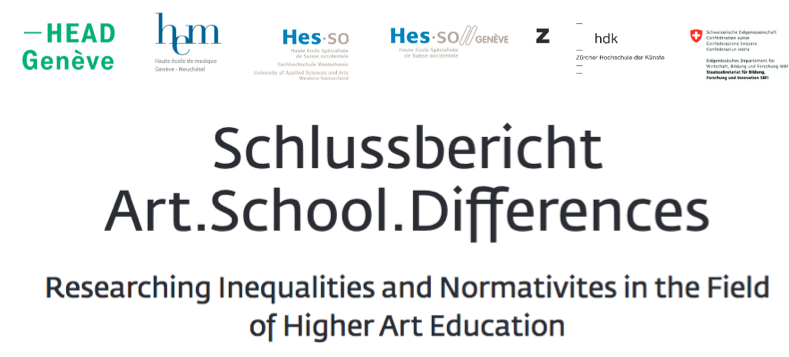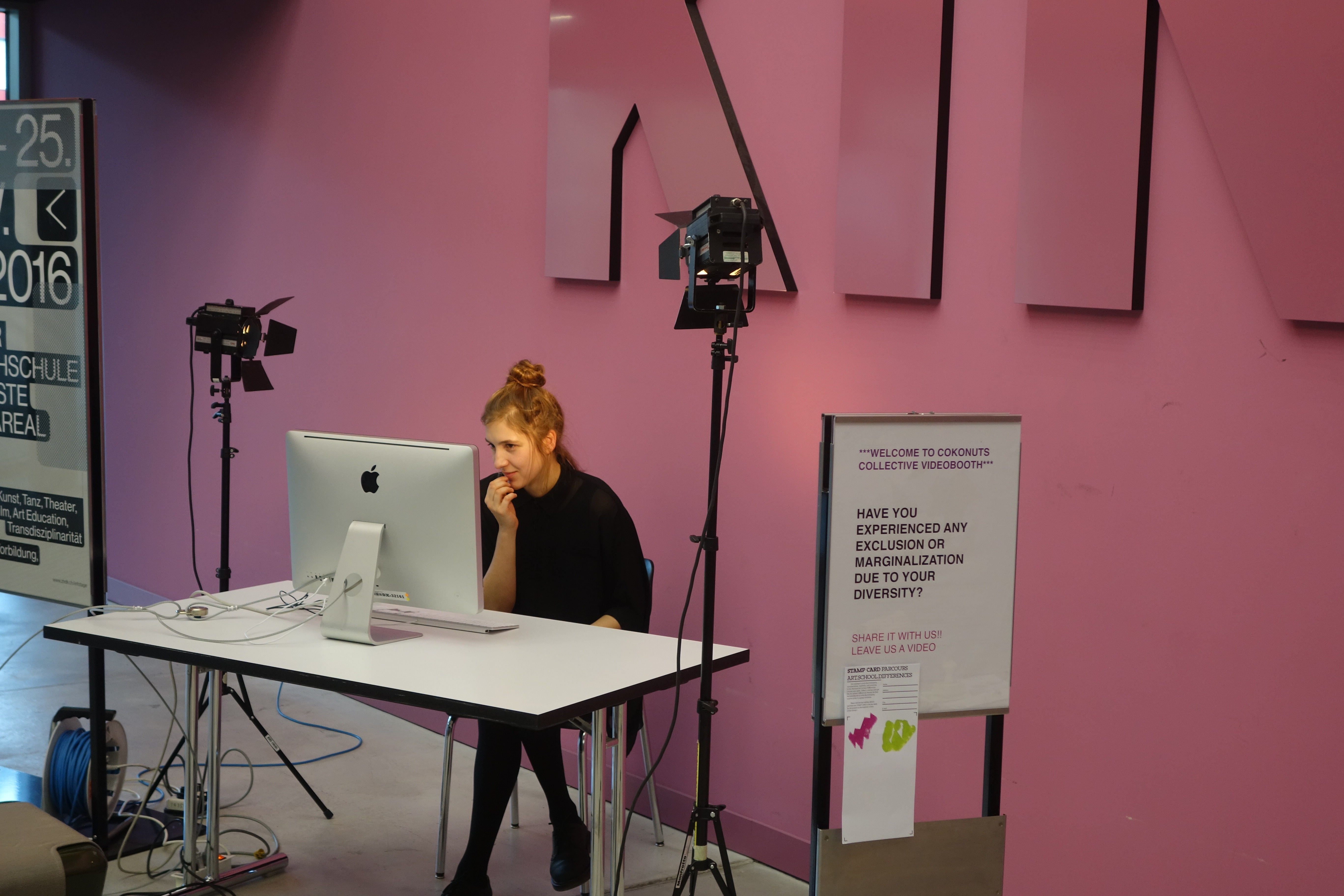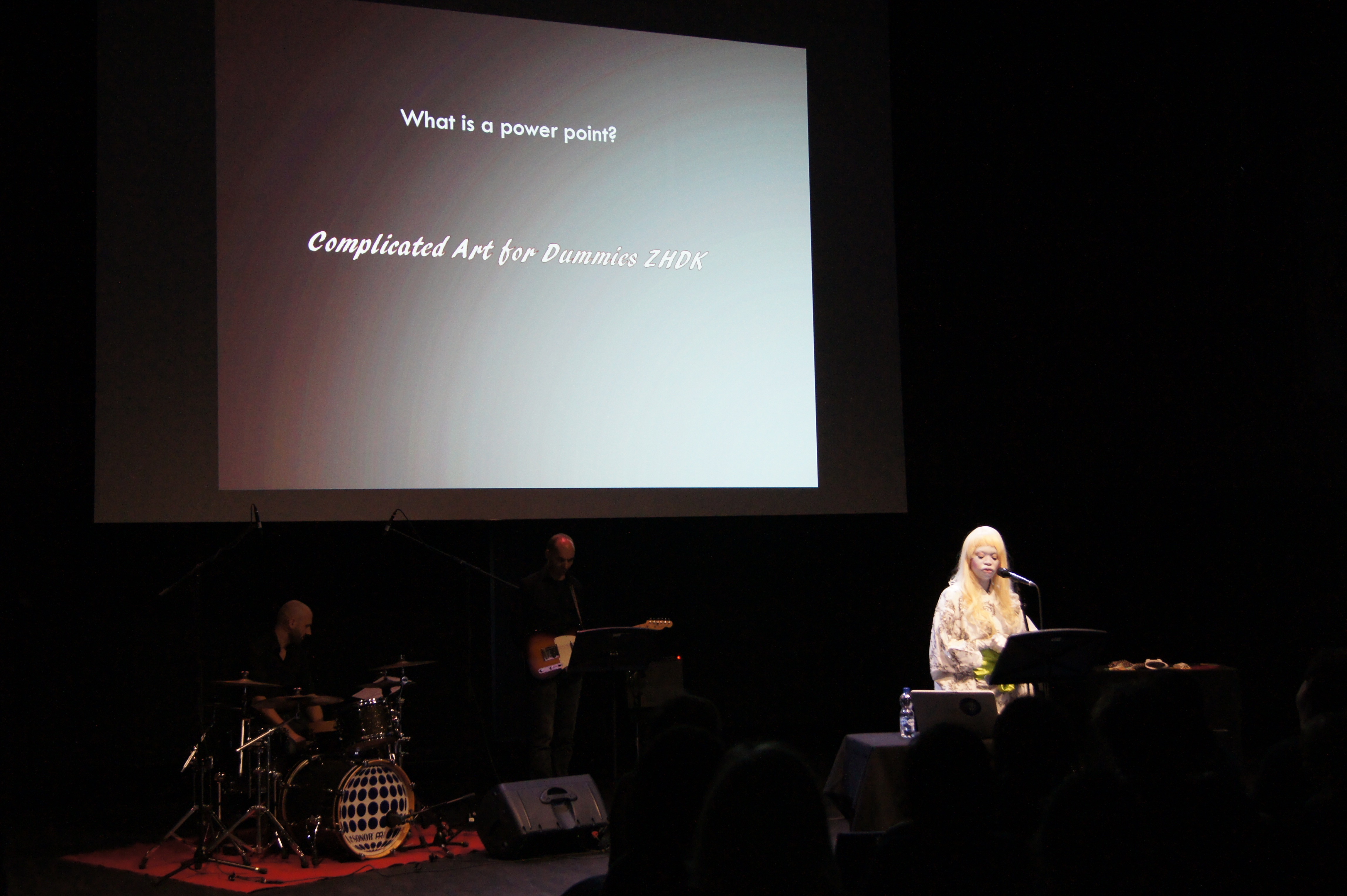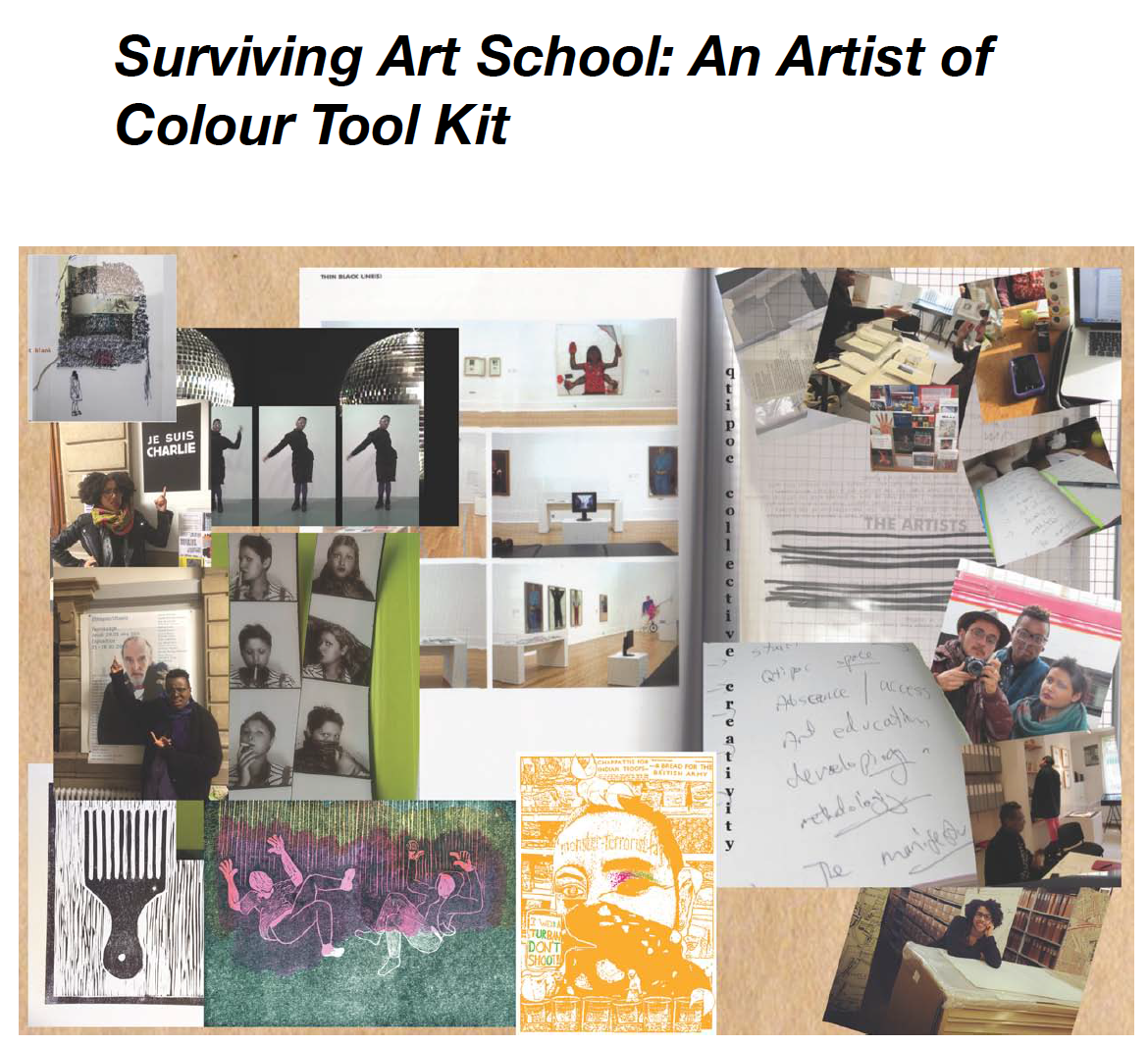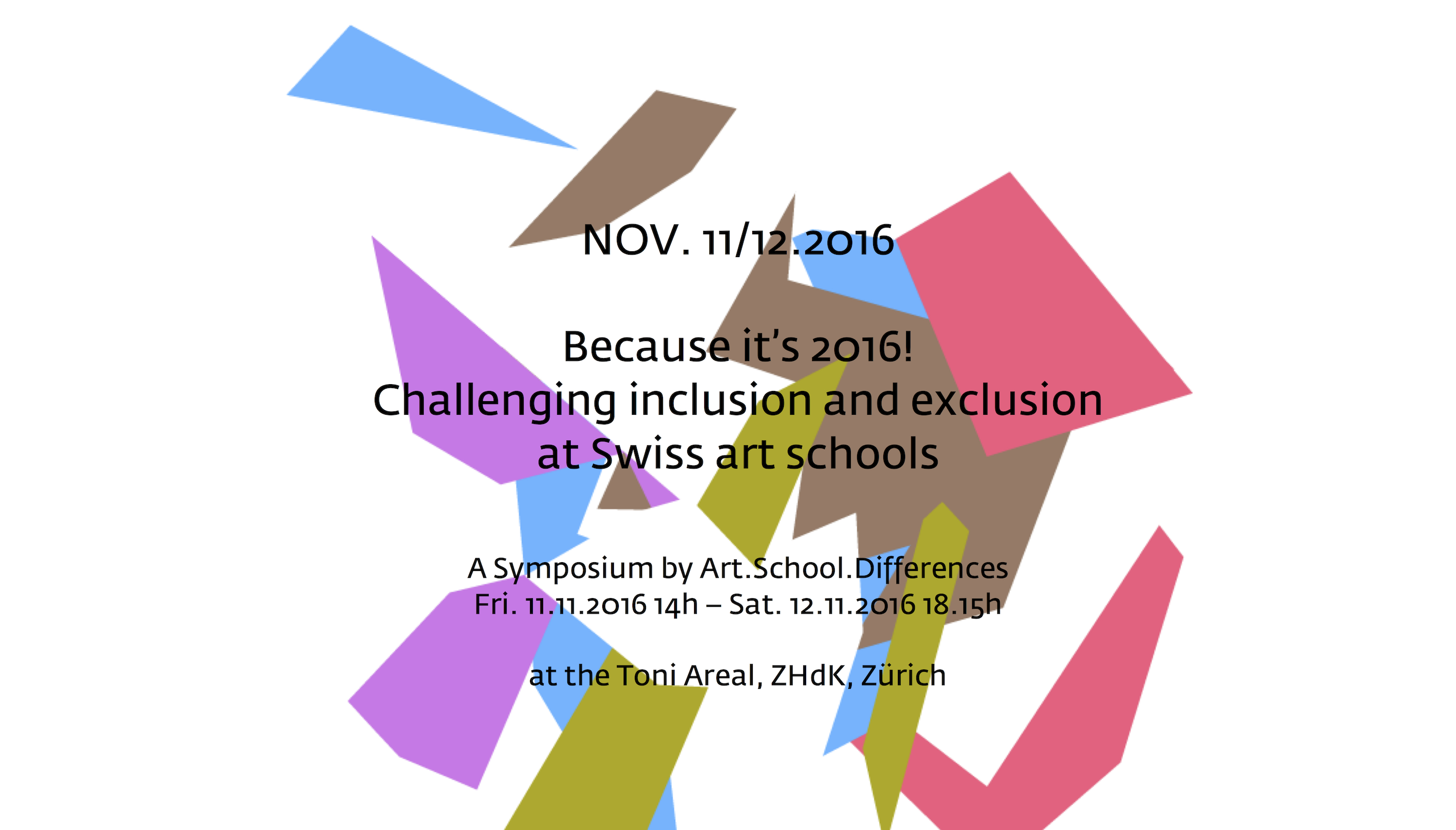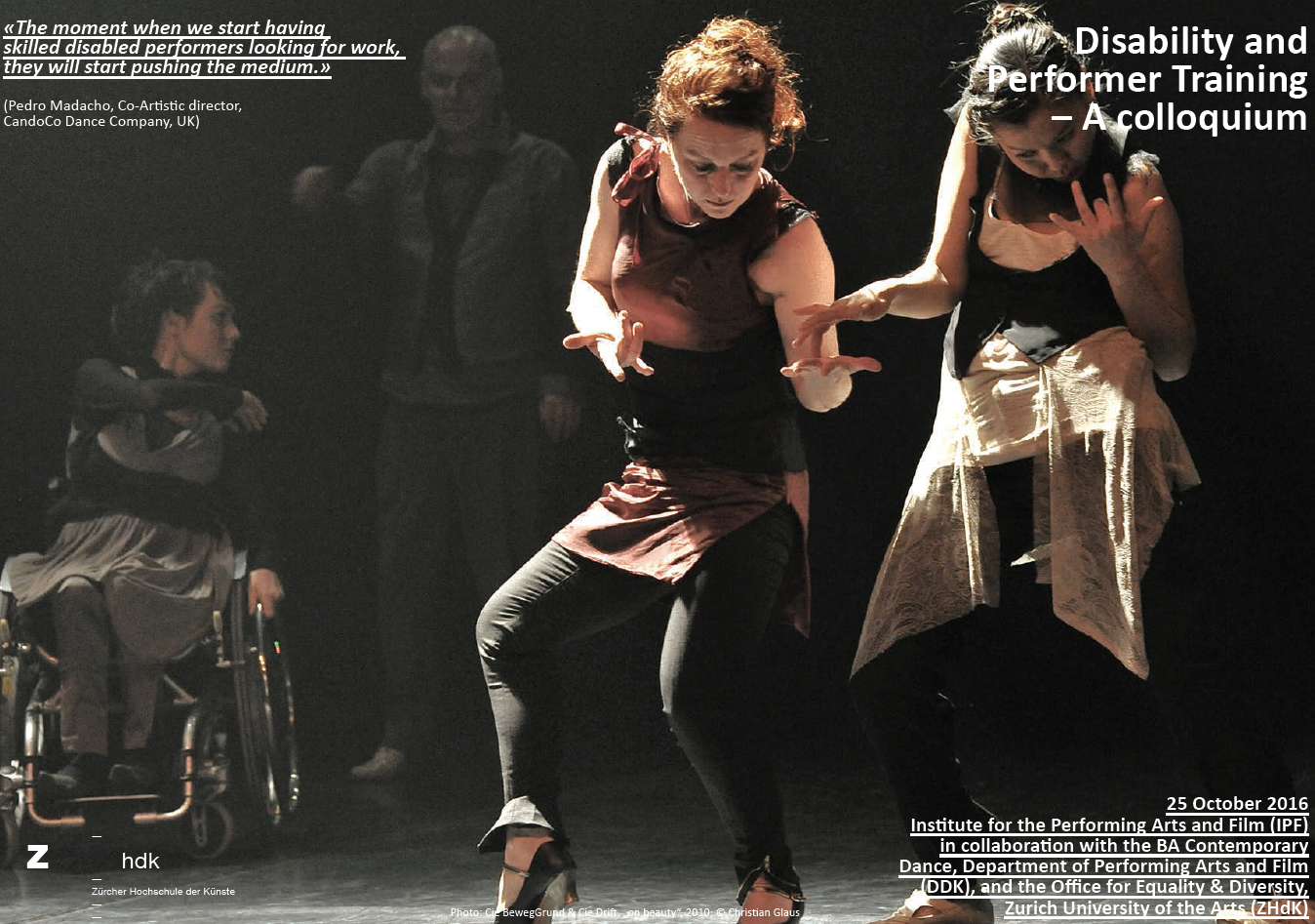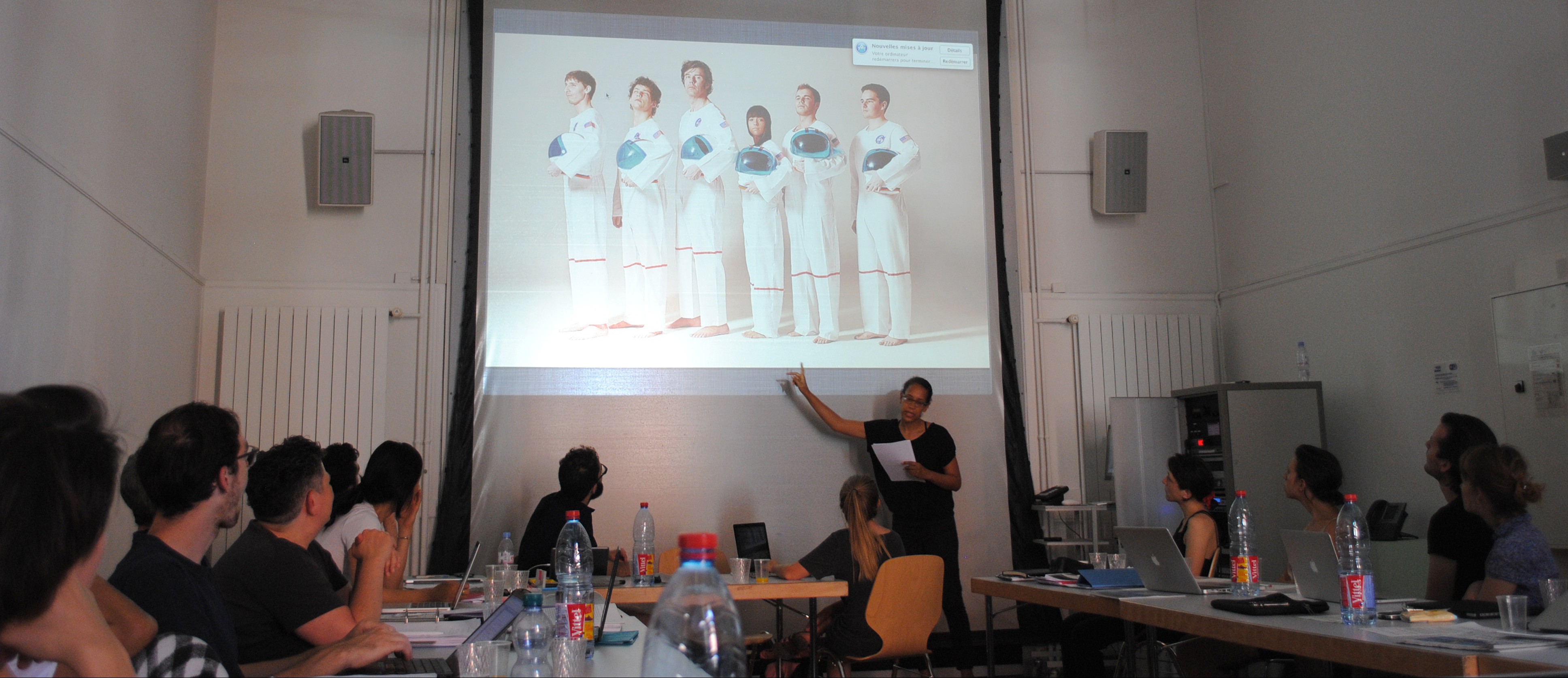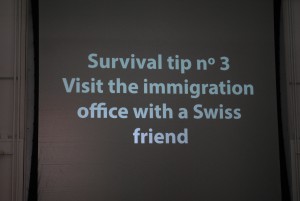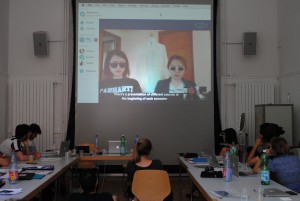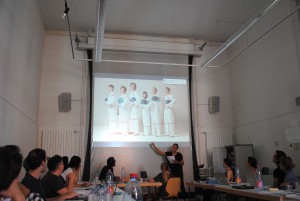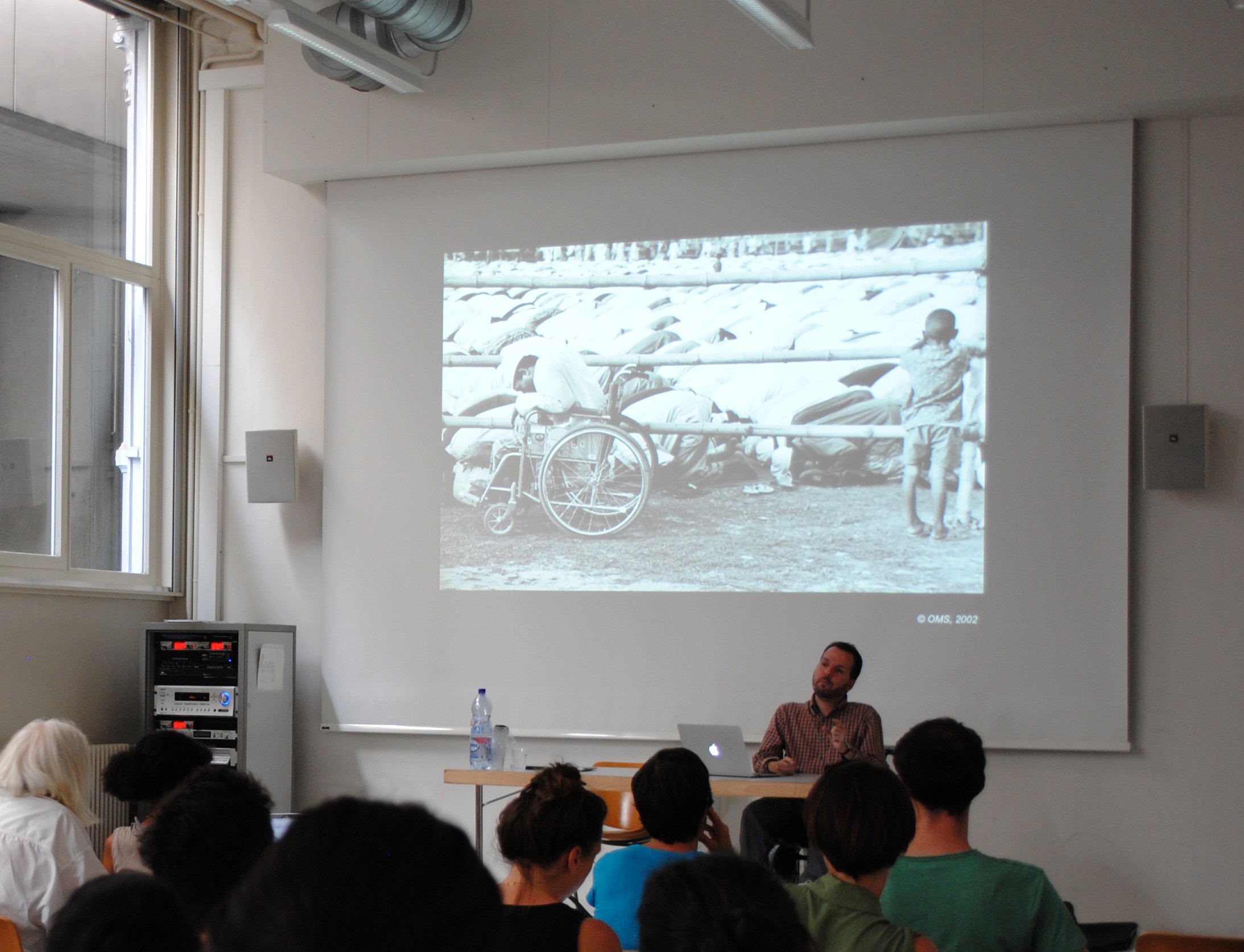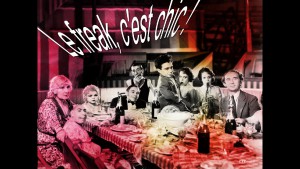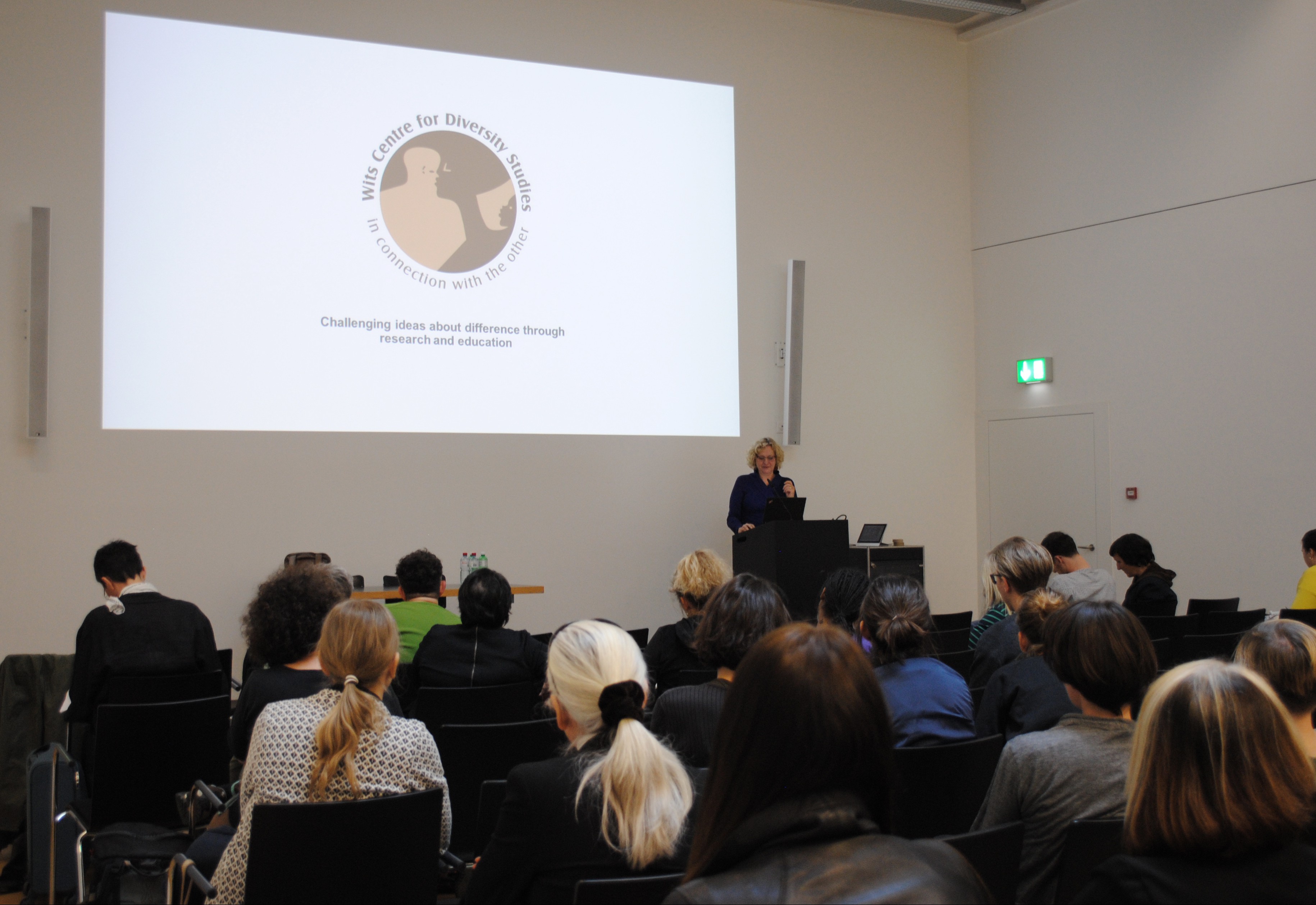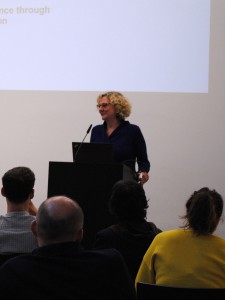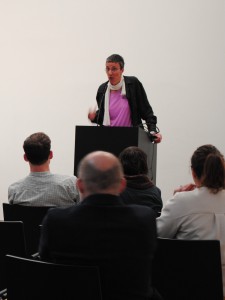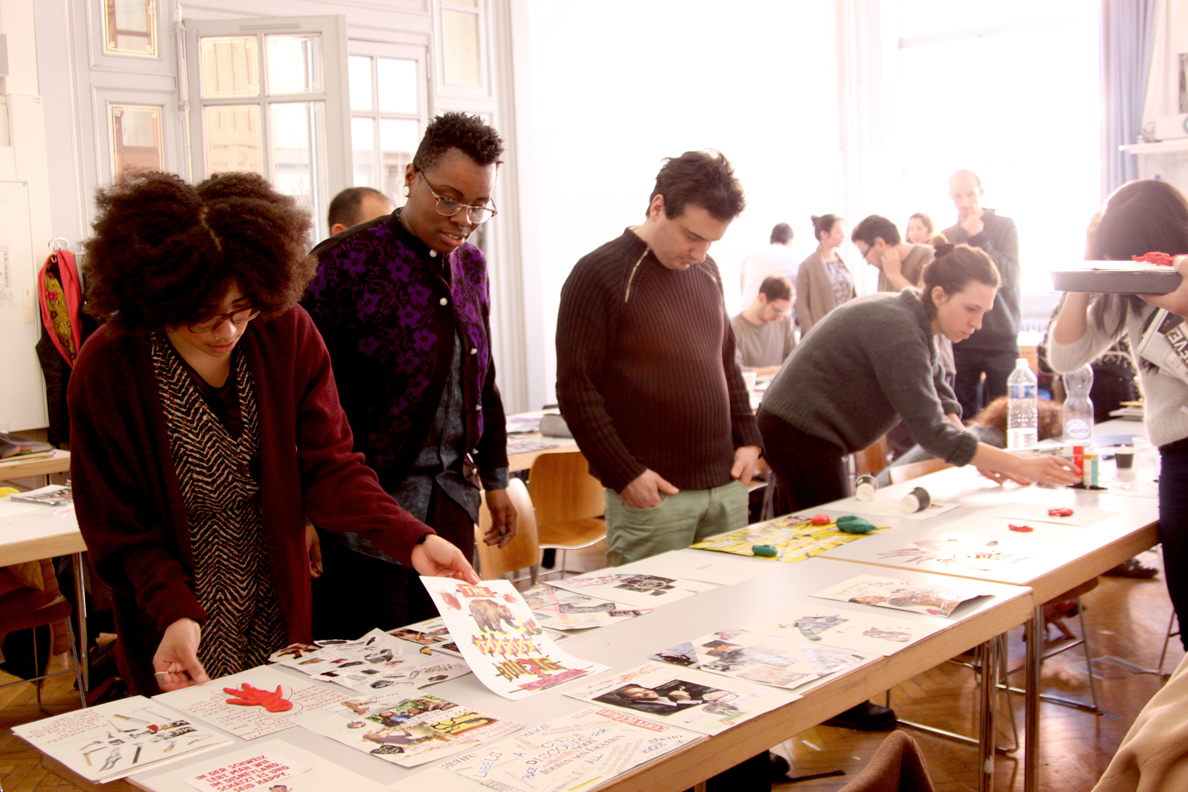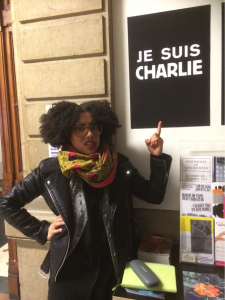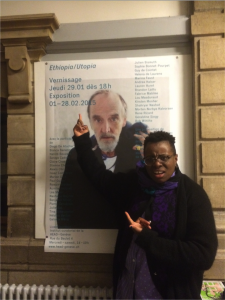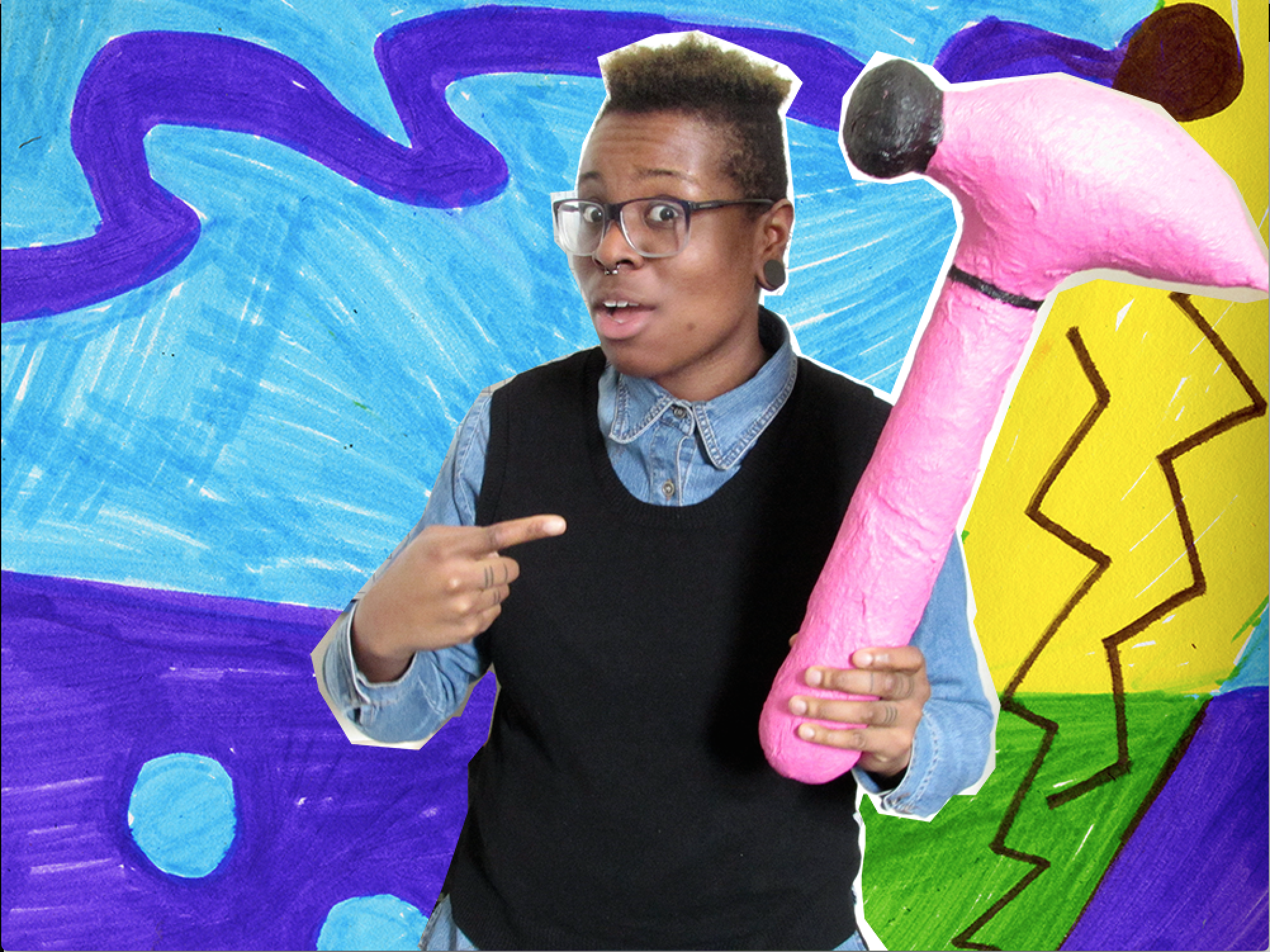Cet article est à disposition qu’en Allemand.
(Deutsch) Aneignungen unserer Institutionen
Désolé, cet article est seulement disponible en Deutsch.
(Deutsch) Demokratisierung der Kunstuniversität: Ein Gespräch an der UdK
(Deutsch) “Let’s talk about race” und “tête noire”
Désolé, cet article est seulement disponible en Deutsch. Continue reading (Deutsch) “Let’s talk about race” und “tête noire”
Lettres ouvertes Black artists in Switzerland et par les étudiants de l’ECAL: Des mesures antiracistes demandées dans des lieux culturels en Suisse
Black Artists and Cultural Workers in Switzerland: Lettre ouverte. https://blackartistsinswitzerland.noblogs.org/
La Matinale / 1 min. / le 3 juillet 2020: https://www.rts.ch/info/culture/11445917-des-mesures-antiracistes-demandees-dans-des-lieux-culturels-en-suisse.html
L’affaire George Floyd a des répercussions dans le monde culturel suisse. Il y a deux semaines, un collectif d’artistes noirs de Suisse a envoyé une lettre à une cinquantaine de lieux culturels pour réclamer des mesures antiracistes. Une démarche similaire est lancée à l’ECAL à Lausanne. Des étudiants de l’Ecole cantonale d’art de Lausanne (ECAL) ont envoyé une lettre ouverte à leur direction et leurs enseignants pour demander des mesures contre les discriminations raciales. Ce collectif, auquel la RTS a pu parler, tient à rester anonyme. Il a publié sa lettre ouverte sur le réseau Instagram et demande à l’ECAL différentes mesures structurelles, comme la transparence sur les sponsors – certains génèrent-ils des fonds provenant d’exploitation coloniale? Mais aussi des mesures incitatives, comme l’invitation d’artistes noirs ou la création de formations obligatoires contre le racisme.
Plus facile d’être homme et blanc
Chercheuse à l’Ecole d’art de Zurich, Sophie Vögele a participé à une étude qui montre qu’en Suisse, les admissions dans les écoles d’art, ainsi que tout le cursus, sont discriminants. Elle soutient la démarche des étudiants de l’ECAL. “Plein de statistiques et de recherches montrent qu’il est beaucoup plus facile d’être un artiste masculin et un artiste blanc dans le monde”, a-t-elle souligné vendredi dans La Matinale. Les écoles font partie de ce champ-là, poursuit-elle. “Dans la lettre, on parle de ‘démanteler les structures du pouvoir blanc’. C’est cela qu’il faut adresser. Comprendre ce qui règne sur notre pensée, ou comment les structures sont imprégnées par une certaine manière de penser, qui est justement très blanche”.
Lettre ouverte des étudiants de l’ECAL [Voir aussi sous le compte Instagram des initiant*es.]“Cher Alexis Georgacopoulos, chers enseignant.e.s, chères personnes au pouvoir, Cette lettre ouverte vise à répondre à notre premier appel en faveur de mesures immédiates que nous pensons que l’ECAL, ainsi que d’autres établissements d’enseignement, ont la responsabilité de mettre en œuvre. La réponse que nous avons reçue du directeur de l’ECAL soutient que notre établissement ne compte prendre aucune mesure particulière pour ouvrir la voie à un changement progressif et durable au sein de l’institution. Étant donné que la réponse de l’ECAL ne répond à aucune des préoccupations que nous avons décrites en détail dans notre première lettre, nous vous demandons une fois de plus de prendre en considération les mesures à long terme proposées contre les discriminations raciales, et en faveur de plus de transparence et d’inclusion. En tant qu’établissement d’enseignement supérieur qui n’a pas de politique, de programme ou de système mis en place afin de lutter contre la racialisation, la symbolisation* et la discrimination des étudiant.e.s, il est extrêmement contestable pour l’ECAL d’affirmer être un établissement précurseur de l’industrie de l’art et du design. Dès lors, revendiquer une notion d’unité et d’ouverture est insuffisant, spécialement en considérant que cette responsabilité nous est remise à nous, étudiant.e.s blanc.h.e s et étudiant.e.s de couleur. En grande majorité, nous sommes déçu.e.s par le manque d’action et de soutien visant à démanteler les structures de pouvoir blanc au sein de l’ECAL, et c’est pourquoi nous vous invitons à mettre en pratique la liste des demandes structurelles** que nous avons décrite dans notre première lettre. Bien que nous prenions en compte la considération que notre lettre a suscitée, nous estimons toujours que la position neutre de l’ECAL est totalement inacceptable dans cette situation. En ce sens, nous ne pensons pas que garder le silence soit une posture légitime, ni en tant qu’entité publique, ni dans un espace interne et structurel. Nous comprenons qu’il s’agit d’un moment critique de questionnement pour les personnes non-touchées par le racisme, et nous invitons la direction de l’ECAL à se joindre au corps étudiant, principalement blanc, afin d’ensemble réfléchir à des questions que nous n’avons pas examinées auparavant. Nous voulons également souligner l’importance d’avoir un dialogue ouvert entre la direction de l’ECAL et ses élèves, afin que nous puissions travailler ensemble vers une école qui reflète nos valeurs. Dans sa réponse, le directeur de l’ECAL a appuyé ses propos sur une citation de Nelson Mandela qui dit que “l’éducation est l’arme la plus puissante que vous pouvez utiliser pour changer le monde”. Nous sommes en accord avec ces mots, et c’est précisément l’une des raisons pour lesquelles beaucoup d’entre nous ont décidé de poursuivre des études supérieures. Cependant, l’ECAL, qui se prévaut d’un enseignement critique, encourage pourtant le corps étudiant à développer cette même éducation selon leur libre arbitre et intérêts personnels. Un établissement qui se positionne comme progressif ne peut pas laisser la responsabilité d’une éducation critique au bon-vouloir de ses étudiant.e.s. Notre système éducatif ne devrait pas se sentir en droit de s’approprier les travaux critiques des élèves à son profit, et ainsi se décharger de la culpabilité de son échec à résoudre les problèmes critiques de race, de classe et de sexe depuis l’intérieur. Nous insisterons à ce sujet jusqu’à ce que des mesures concrètes soient prises. Nous attendons de l’ECAL qu’elle se joigne au mouvement mondial contre le racisme, et agisse contre la complicité institutionnelle d’un système bénéficiant aux personnes blanches. Prenons par exemple le manque de transparence concernant les sponsors et les partisans de l’ECAL: quelles politiques existantes sont mises en place pour garantir que les fonds ne proviennent pas de sources qui profitent directement ou indirectement de l’exploitation des populations noires? Nous attendons un changement radical dans la transparence, et le réexamen des pouvoirs en place. Ce manque d’implication provoque également certains conflits en termes d’attentes académiques: comment l’ECAL peut-elle s’attendre à ce que le travail des élèves soit critique, lorsque l’école n’est pas disposée à dispenser une telle éducation? Comment peut-elle revendiquer le mérite d’un travail étudiant critique, tout en refusant de mettre en place des structures internes activement antiracistes? De quelle manière l’ECAL préconise-t-elle et donne-t-elle de la visibilité aux projets qui remettent en question les structures de pouvoir existantes définies par la race, la classe et le genre? Pour conclure, nous tenons à souligner qu’il est crucial pour l’ECAL (ainsi que d’autres établissements d’enseignement) d’utiliser son pouvoir et son impact dans le monde de l’art en s’exprimant en faveur des préoccupations susmentionnées. Nous attendons de notre université qu’elle offre à ses étudiant.e.s la perspective d’un avenir conforme à nos valeurs : celles qui accordent à tous.tes la possibilité d’évoluer en toute sécurité et dignité, et de prospérer en égalité dans leurs carrières. Le corps étudiant de l’ECAL** Nous vous invitons à mettre promptement en vigueur la liste suivante non exhaustive de demandes structurelles : Transparence sur les sponsors – Qui sont les sponsors / donateurs de l’ECAL, et génèrent-ils de quelque manière que ce soit des fonds provenant d’exploitation coloniale ? – Quelle éthique l’ECAL applique-t-elle lorsqu’il s’agit du choix des sponsors desquels accepter des financements ? – Y’a-t-il des fonds mobilisés pour des causes inclusives, que ce soit sous forme de dons à des organisations ou en interne sous forme de bourses ? Transparence sur toute éventuelle différence salariale – Y a-t-il des différences salariales en fonction de la couleur de peau ou du genre ? Si oui, pouvez-vous y remédier ? Transparence concernant l’emploi de personnel noir, tout en leur fournissant un environnement de travail sûr – Les cachets pour le travail d’artistes noir.e.s sont-ils les mêmes que pour le travail d’artistes blanc.he.s ? – Quelles mesures l’ECAL prend-elle pour offrir un environnement de travail sûr aux personnes noires et de couleur ? – Y’a-t-il un système en place qui assure un moyen digne de signaler les cas de racialisation, de discrimination et de symbolisation** ? – L’ECAL prend-elle des mesures spécifiques afin de fournir un environnement de travail sécurisé aux artistes racisé.e.s qui sont invité.e.s à donner des workshops /conférences ? Si oui, de quelle manière ? – Quelles sont les mesures prises par l’ECAL pour offrir un environnement de travail sûr aux personnes noires et aux personnes de couleur ? – Les enseignant.e.s sont-ielles invité.e.s et encouragé.e.s à s’informer activement sur un ensemble d’artistes, de curateur.trice.s et de galeries plus inclusives ? Invitez activement les enseignant.e.s à se renseigner sur les artistes, les curateur.tric.x.e.s et les galeries noires – Les artistes noir.x.e.s sont-ils pris en compte au même degré sans avoir à forcément devoir travailler sur des questions raciales ? – Dans quelles mesures les opinions coloniales sont-elles sérieusement remises en question en ce qui concerne l’art et la culture qui sont discutés au sein de l’institution ? – Comment l’ECAL garantit-elle une formation critique à ses employé.e.s ? Invitez des artistes racisé.e.s à organiser des conférences et des ateliers, tout en veillant à leur fournir un environnement de travail sûr Workshops obligatoires contre le racisme – Supposer et éloger l’union ne suffit pas. Que faites-vous pour démanteler la suprématie blanche dans votre établissement ? – Votre personnel est-il informé des préjugés suprémacistes blancs qui sont ancrés dans la société, la culture et la politique suisse et occidentale ?” – Accueillez-vous les plaintes des étudiant.e.s et les rapports sur les mauvais comportements des autres étudiants, des membres du personnel et des enseignants, et faites-vous en sorte que les étudiants qui les signalent se sentent en sécurité ? – Pouvez-vous régulièrement effectuer des sondages périodiques (démonstratifs des notions d’égalité et de diversité) qui recueillent les opinions et la satisfaction des étudiant.e.s concernant le corps des enseignants, des intervenant.e.s et le contenu de cours ? L’éducation extracurriculaire – Puisque l’ECAL encourage les étudiant.e.s à poursuivre une éducation critique en dehors du programme d’études, quelles mesures ont été prises par l’établissement pour fournir l’infrastructure, les outils et les ressources nécessaires? Ce point est particulièrement important puisque dans le dernier mail (10/06/20), l’ECAL y encouragerait les étudiant.e.s à développer un point de vue critique en dehors du cadre éducatif de l’école. * Symbolisation Le terme symbolisation a été utilisé en l’absence d’un terme français équivalent au terme anglais tokenisation, c’est-à-dire l’acte de faire un geste vers l’inclusion des membres de groupes minoritaires, destiné à créer une apparence d’inclusivité pour s’écarter des allégations de discrimination.
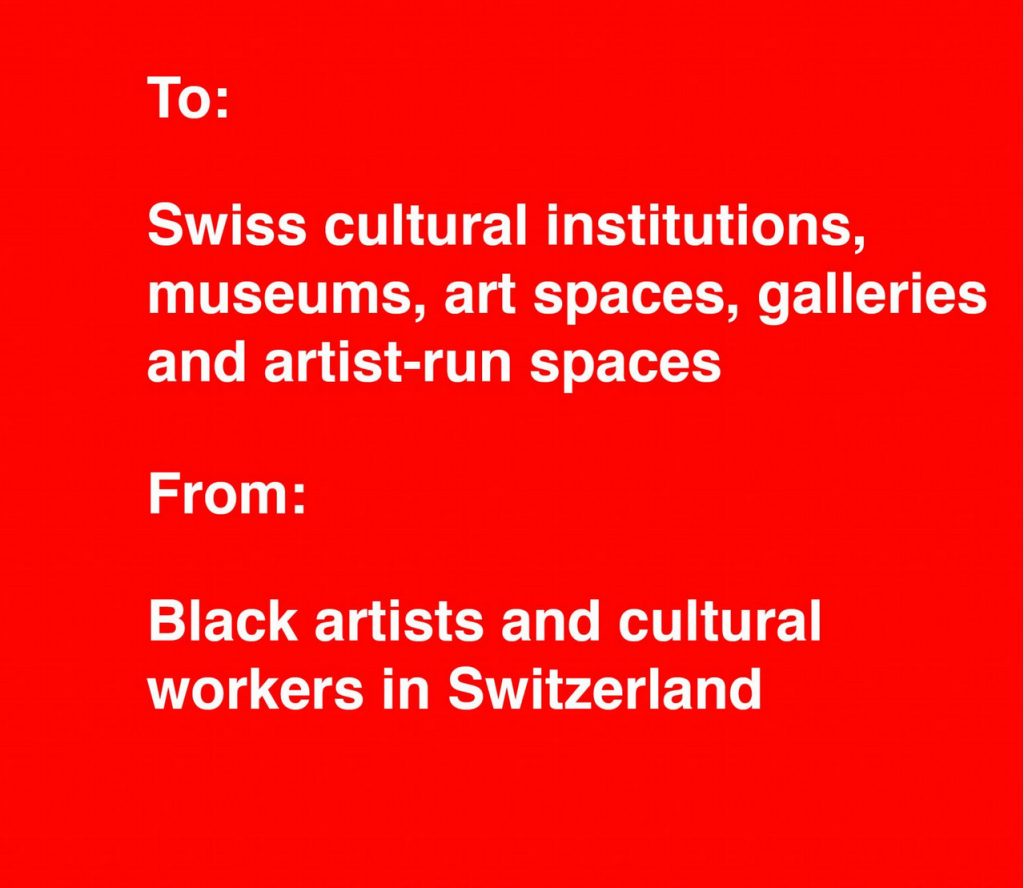
PARSE conference 2017 EXCLUSION
The 2017 biennal PARSE conference on EXCLUSION tackled very current questions of inequality, neocoloniality and legitimacy as they are expressed and produced through culture and cultures of artistic education.
November 15–17, 2017. Venue: Faculty of Fine, Applied and Performing Arts, Gothenburg, Sweden.
copyright of photo: Minjeong Ko, Globala Tanter at PARSE Gothenburg, 2017
The conference was structured in 6 strands:
Indigeneity is for many a politically enabling construct in resisting ongoing colonialisms, expropriations, and associated epistemic violence. It is also marked by multiple exclusions: conceptually, as irredeemably rooted in essentialism, primordialism and primitivism; strategically, as counter-productively factionalising and exoticising; juridically and pragmatically, as untenable within the various regimes of globalisation.
Educational exclusion addresses mono-cultural aspects of arts education as well as proposes how education in the arts can be fundamentally reshaped to become more accountable to manifold embodied knowledge practices.
Colonisation and Decolonisation addresses colonial and master paradigms in the arts as well as institutional, communal and collective perspectives and looks to strategies for a new arts and humanities that embraces epistemic and disciplinary disobedience, non-capitalist, pluri-national institutions and modes of aesthetic production.
Geographies of Exclusion addresses how social, cultural, political and economic barriers produce and sustain public spaces, public spheres, public memory, borders and migrants and their experiences of movement through the logic of circulation managed, controlled, and regulated by state authorities, public institutions, NGOs and private firms. It also addresses how such dominating modes of productions can be transgressed through civil counter-actions and independent self-organised practices.
Vocabularies of Exclusion focuses on forms of exclusion produced through language as well as embodied and discursive practices. Reflecting on the terms and conditions of artistic and political work in cross-disciplinary contexts, it explores and interrogates languages of inclusion, separation, and participation as they are produced and enacted in the present moment in the field of cultural production and its context in wider socio-political arenas.
Participation as Exclusion deals with the fact that “participatory turn” in cultural production, urban development, and so forth is now a dominant theme in Western art and design discourses and practices as well municipal governance, where it has moved from a marginalised area of community practice into the mainstream. This consideration inquires who the subjects of participation are and how and from where they were selected. It addresses questions such as Why are certain people seen to be in greater need of receiving participatory “support”? How, if at all, is power and decision-making redistributed?
Art.School.Differences was present in the Educational Exclusion strand with a presentation about: Exclusion from inside out: The intersectional working of class in artistic education. Refer to the web for the abstract. See the powerpoint presentation Exclusion inside out for download.
To watch the conference keynotes online, please refer to PARSE conference Afterwards. Meanwhile the Parse Journal “Exclusion”, Issue 8 Autumn 2018 with conference contributions has been published.
For an action plan to curb ongoing exlusion of minority groups, refer to the list proposed by Craig Wilkins during his talk that he made available for our blog.
Refer also to the Manifesto launched at PARSE Exclusion Conference November 2017. The Manifesto is the result of a two-day Learning Lab inspired by the self-organising work of the Restad Gård Support Group Network at Akademin Valand, Göteborgs Universitetet (see also Kultur i Väst). The Manifesto author’s shared aim is to highlight the current realities of social and cultural segregation effecting asylum-seekers and refugee communities living in Gothenburg and to make improvements to this situation. The Manifesto has been collectively drafted by members of the Restad Gård Self-Support Group Network, representatives from Valand Academy, Outgrain, Counterpoints Arts and individuals from a range of arts and educational organisations in Gothenburg in the surrounding Västra Göteland region.
We are inviting organisations regionally, nationally and internationally to sign up to the Manifesto. Please contact Adndan Abdul Ghani or Denise Langridge Mellion by e-mail: Adnan.Abdul.Ghani@rb.se or denise.mellion@akademinvaland.gu.se.
A double-quoted world
Blog entry on Art.School.Differences: bit.ly/a_s_d; 31.10.2017
Paola De Martin,
—
“I really don‘t like words like ‘artist’, or ‘integrity’ or ‘courage’ or ‘nobility’. I have a kind of distrust of all these words, because I don’t really know what they mean, any more than I really know what such words as ‘democracy’ or ‘peace’ or ‘pace-loving’ or ‘warlike’ or ‘integration’ mean. […] The terrible thing is that the reality behind these words depends ultimately on what the human being (meaning every single one of us) believes to be real. The terrible thing is that the reality behind all these words depends on choices one has got to make, for ever and ever and ever, every day.” (James Baldwin)
—
Introduction
In November 2016 I was invited to hold a workshop (for the description refer to PARCOURS) for the Final Symposium of Art.School.Differences Because it’s 2016. Challenging inclusion and exclusion at Swiss art schools. I presented and worked with material from my ongoing PhD-research (run-time: Sept. 2014–2019). For this workshop I emphazised the epistemic phenomenon I call “a double-quoted world”. The title of my PhD-research is Give us a break! On the taste-biography of designers featuring a working class background in metropolitan Zurich (1970–2010). Interviews with designers are the primary oral sources of my work – designers form different subfields of design, born between the late 1940s and the early 1990s. Some have the Swiss passport, some don’t, but that’s not the main question here, neither the difference made by sex, gender and race. Although my intersectional analysis does take different axes of discrimination into account, my interest focuses on what the interviewees have in common: a pronounced social upward mobility from the lower classes of society into the field of design. I combine the oral sources with visual material mentioned in the interviews or handed out to me by the interviewees. The centre of my interest is the question: What does it mean to become a designer, when socialized in the working classes during the era of neo-liberalism in Zurich? This includes also asking: what does this mean to me – since I feature this “background” too – ? I put “background” between double-quotes, because I actually don’t like to use the term in my context so much anymore. As I realized during the research process and will show below, former working class cultures and spaces are an important source of inspiration for designers, and for this reason working class attitudes morphed into a stunning present of our designed “foreground”. How can you possibly get along within this transformation when moving upward form the working classes? In what ways can you possibly move upward? How can these possibilities be described objectively, i.e. without mystifying these paths?
In my analysis, the collected oral histories function like special lenses that allow us to answer these questions and to understand the overwhelming aesthetic impact of social life. The phenomenon of “a double-quoted world” shows how designers with working class background deconstruct categories of aesthetic quality, such as “formalism”, “reductionism”, “functionalism”, etc. The common sense of good taste takes these categories as universal, and not as socially bound ones. Two dimensions of my analytical compass turned out to be useful, when arguing against the common sense of universalism in good taste. First, the historical, diachronic dimension, i.e. the continuities and discontinuities in the relationship between the milieus of the working classes and the field of design. Second, the sociological, synchronous dimension: i.e. the quality of this relationship in our post-modern, neoliberal or globalized present. Both dimensions are also interwoven in this blog entry. Now, before addressing the topic of my workshop, I will first provide an outline of my research in which it is situated.
Neo-liberalism, the working classes and the field of design in Zurich
Since the late 1970s Zurich’s social structure has undergone a massive change. In this respect, Zurich, the hot spot of my local case study, is comparable to other cities. When presenting my research in an international context, I often hear similar stories like the ones I present here, from London, Izmir, Copenhagen, Toronto, Warsaw, New York or even Ahmedabad and Saigon. What characterizes the change is first the decline of huge productive infrastructures of material labour – in Zurich for example the machine construction industries in the neighbourhood of Zurich-Oerlikon, the industrial milk production factories, the turbine and the detergent industries in the Zurich Industriequartier, the textile industry in Zurich Altstetten, the huge beer industry at Zurich’s riverside of the Limmat, the industrial paper mills at Zurich’s riverside of the Sihl – and second the gentrification of these areas, their social cleansing and takeover by what is called “immaterial labour” (Lazzarato, 1996). Zurich, coined “Rotes Zurich” – meaning the “red city” of the interwar period, a former socialist city with a strong worker’s presence and representation rooted in the socialist movement – is now well known as a centre for finance, higher education, insurance, IT and art & design with international reputation. Social democrats and the green party are representing the majority of the voters in the city’s executive, but their red-green rule is almost completely middle class based today. In the meantime, also the student body of the art & design school has changed. The former Kunstgewerbeschule deliberately attracted worker’s and craftsmen’s sons during the interwar period (not so much daughters, then) – I thereby think of iconic figures like Gottfried Honegger or Richard Paul Lohse. During the Cold War and the golden decades of Keynesian welfare, the school was still quite open to descendants of the skilled workers or craftsmen, such as Willy Guhl or Franco Clivio, for example. Today, due to Bologna reforms and the academization of the Zurich University of the Arts (ZHdK) – merger of the major branches of the Zurich educational art institutions since 2007 – the student body of the design department has become similar to the one of the humanities in Swiss universities, such as the University of Zurich. It is dominated by middle or upper middle class adherents, whose parents are well appointed with cultural capital. The loss of talent and potential on the paths from lower classes to higher education is diagnosed by social historians and sociologists as the effect of manifold practices of discrimination that upward-movers must encounter along their way; the metaphor of a “leaky pipeline” is used to illustrate this. There is quite a wide range of scholarly work about this effect. In Switzerland, especially Margrit Stamm’s research stands out (Stamm 2016). None of the studies, whatsoever, look closer at the field of design in Switzerland, with the outstanding exception of the Art.School.Differences project.
And what does it mean to become a designer, when socialized in a working class that has almost disappeared? What did it mean for me? When studying textile design in the 1990s at the Schule für Gestaltung Zurich (today: ZHdK) and even more when being a practitioner, I was first overwhelmed by the way my professors and my peers embraced the new empty post-industrial spaces, by how they turned them quickly and enthusiastically into studios, party locations, art spaces and lofts. Born 1965, I rank among a generation that still can recur to the memory of tattoos, soccer, boxing, bodybuilding, big cars, bling-bling, pop-music, precarious work, physical production inside industrial spaces, transgressive styles and sexually overemphasized attitudes as solely belonging to the lower classes. This radically changed during the late 1980s and early 1990s. I was electrified by the general playfulness and productivity in adopting former modes of lifestyle from the workers, be it in a more sublime or in a more carnivalesque way.
But I also was irritated: Why where designers making fun of the poor? Why where they making poor cultures more sublime, as if poor peoples were the raw material for the real virtue of style? What was so great about this dirty emptiness, this sudden silence of the machine age? What would all the unskilled people do for a living, when all these industries disappeared? So, very soon, my bewilderment mutated into confusion, and confusion into an intangible shame about my real worker’s child past. The French intellectual and sociologist Didier Eribon, in his wonderful sociological self-analysis Retour à Reims calls this kind of shame “social shame” because of its rather political than psychological implications. Being a worker’s child himself and gay, Eribon highlights the fact that in the era of neo-liberalism it was so much easier for him to reject in public the imposition of his sexual than of his “social shame” (Eribon 2016, 19–20). Both deal with the limitations of normativity, one with the heterosexual and the other with the middle class normativity, but the latter is so much less discussed and debated – maybe because it is a new phenomenon we still have to reflect? I can say for sure that in Zurich from the late 1970s on I began to feel my lower class past becoming the loser’s past. But this was an incredibly quick and complex transformation, too tricky to keep up consciously since I was merely a child and teenager then. Talking with Karl Marx, I was „alienated“ from the historical context that shaped my shame (Marx 1957ff., vol. 3, 72 and vol. 40, 512). To survive the changes I displaced the consciousness for being conceived as a neoliberal loser. I displaced the same consciousness for my parents and their friends, and the children of their friends. That was not as bad as it may sound, alienation can be very dazzling. In fact, only today I can see clearly that I was yet very much attracted by the dazzling field of design because of its alienating, illusionary and ahistorical aura.
“Illusio” and other useful terms – a brief excurse into sociology and Zurich’s design scene
The terms “rupture“, “habitus”, “illusio“ etc., that I like to use, are sociological terms, coined first by Pierre Bourdieu and adapted from other scholars ever since, to whom I owe my greatest respect. They helped me to understand the deep political and historical implication of my “social shame” in the design field. A short explanation of these terms situated in the context of Zurich might help the readers, too.
“Illusio“ after Pierre Bourdieu means the faith in the reality of the game you are playing in a very specific professional “field”. Every “field”, e.g. “the field of education”, “the field of the arts”, “the field of science” or the “field of economy” etc., creates its own “illusio”. “Illusio” therefore is the faith or belief that the inputs and outputs of what is at stake are of value (Bourdieu 1996, especially 330–336). For the field of design – or, more precisely, the subfield of design in the greater field of the arts – the “illusio” creates the deep belief that what talented designers really do are beautiful, meaningful and functioning things, and that it is really worth putting all your skills and ambitions to reach this aim. Bourdieu’s concept of “illusio” is helpful to investigate the sober facts behind it. Only then you see how the social structure of inequality within the field is being shaped – beyond the veil, so to speak, of all agents. Inside the field of design and beyond the veil of its “illusio” lies the sober fact that what talented designers do are status objects – and status knowledge of Swiss society is therefore the crucial knowledge for a successful designer in Zurich.
Because the recognition of this factual reality behind the veil would somehow spoil the “illusio”, it must be displaced. But how is this displacement working, and why is it working so well? On a general level, these questions were the driving force behind all endeavours of Bourdieu’s sociology. One of my students once said, after reading Bourdieu in my class, that talking explicitly about the making of status with designers is like talking about what you do while you are seducing somebody. Following her striking remark, one could say that designers are trained to make status differences look sexy. To understand how and why the displacement of status knowledge is working so well, and in Zurich’s design scene it is working extremely well, the concept of “habitus” is helpful. “Habitus” is a set of practices and judgements that are conceived by the common sense to be quite natural. For example, one of the experts of the field, I also interviewed, said that it seems quite natural that a working class child would never become a designer. This naturalization is the effect of a forgotten history under the practical shortage of everyday life, a history that is full of status angst, social struggles and power games. Instead of being outspoken and part of the common design narration in Zurich, these histories are embodied, passed over by attitudes and judgements, performed and re-enacted by the uses of language and by institutional rules from generation to generation – without reflection.
A “rupture“ or “break” in sociological terms defines a moment in life, when specific strategies that you have internalized as a child and teenager in your milieu – your quasi-natural “habitus” – all of a sudden become disfunctional under other circumstances. This “rupture” can be caused by a change of the milieu and/or by a historical change of the social structure as a whole. My interviewees experience both. In fact, I found that they are “rupture” experts after making the effort to understand their statements hidden behind the narrow social limits of their speech. A “rupture” or “break” in this context doesn’t mean a physical or psychological trauma, but rather an epistemic shock. The social world doesn’t make sense in a natural way anymore, it becomes, as the title of my workshop indicates, “a double-quoted world”. It is within these “ruptures” that the forgotten histories of the social struggles in the field of design come to the surface. Some of them are very old, and date back to imperialism of free trade in the 19th century and to World War I. Some of them are younger, they relate our conflicts today to the Great Depression of the 1930s, to World War II, to the Cold War or to the economic crisis of the 1970s. I go into more detail in my dissertation and try to unveil the strong impact that these conflicts have had inside the field of design when it comes to its relationship to the working classes.
It is important to highlight that experiencing an epistemic “rupture” or “break” per se isn’t necessarily a negative experience. Social movements explicitly induce epistemic “breaks”. The feminist critique of “phallo-centrism“, the queer critique of “hetero-normativity“, the postcolonial critique of “euro-centrism“ and “white normativity” – in a very powerful and politically public manner – deconstruct the “illusio” of a naturalized social order. By doing so, they upset the deep faith of the patriarchal, heterosexual, white and western hegemony in culture. But how about class in culture, especially in the design culture of Zurich?
Seeking for appeasement – believing in design
To experience the shock of a “rupture” in a productive way it takes, first of all, reflexivity and then the support of peer groups, for this reason I call my dissertation project Give us a break! It is the attempt to regain the lost public space and the lost public terms of social thinking. I lost my peer group during the late 1970s and the 1980s when I went to high school, the first one in my family since generations and the only one of my whole working class neighbourhood. I also lost reflexivity because of the tensions that were threatening my parents, my sister and my whole milieu during the structural changes in Zurich, as I mentioned above. Today, I can clearly see that I wanted to believe in the “illusio” of the design world because it looked to me as if it was a safe realm – completely untouched by social tensions. I desperately wanted to escape from the harsh violence of the ongoing changes, and my skills and diligence allowed me to enter the world of creativity, of constructive talent and beauty as it was displayed to me in the design school: a wonderful, unspoiled, eternal and magic sphere. Religious connotations are obvious here. I believed in the universal embrace of good taste, in the complete modesty of modernist reductionism, in the unlimited longevity of sustainable design, in the ideologically boundless release given by post-modern irony, in the total approval of transgression by trash, in the socially infinite inclusion of kitsch by its campy sophistication, in craft as the truly unspoiled reference for industrious creativity, in the absolute rule of talent as the only legitimate means for success – and by doing so I learned in an absent-minded way to disdain my former working class self. But that is not all I did. In the context of neo-liberalism and postmodernism it is important to say that I also adapted myself unconsciously to a new symbolic competitiveness and scooped a most valuable resource to make ends meet: my insight into the intimate dreams of the wannabes. I did my part to provide the former industrial spaces with commodified phantoms of my own recent past.
Of course I felt that on the long run something was going terribly wrong, but I displaced this knowledge to keep going. After all, I had put so much time, energy and money to get there. Under these circumstances, being a design student with a strong connection to friends and families of my working class milieu, and even more being a practitioner was a long intensifying nightmare. A nightmare, speaking with Sigmund Freud, is not so much a horrible dream because of its horrible content, in fact, it is a horrible dream because the dream-work does not work and the truth about your wishes cannot be displaced and distorted anymore in order to keep sleeping (Freud, 1999, 578–592 and 688). Finally, this truth came through and made me wake up from somnambulism – it showed its naked face to the conscious mind, sometime around 2001: I had wanted to believe the “illusio” to stay inside the field, I had desperately embodied the role of the wannabe to stay inside, at any price – be it social self-disdain, be it economical and symbolic self-exploitation.
Waking up caused a severe epistemic and social “break” with the realm of design. The years before I had been back and forth in the process of awareness building about the “illusio” of the design scene, but once I allowed myself to see and reflect it, the whole design scene was definitely disenchanted. The universality of good taste became a double-quoted “universality“, modernist reductionism became only “so to speak modest“, sustainable design “pseudo long-lived“ and so on, but most important: the absolute rule of talent as the only legitimate means for success became a very relative and arbitrary rule. In other words, my new sobriety opened the view to highly distinctive, but seemingly invisible class-bound practices and class-bound judgements inside the design field.
This sober gaze was first a shock and became only fruitful with the further steps I took: my studies in economic and social history and art history at the University of Zurich and my dissertation supported by the ETH Zurich. When talking to the designers that are still in the field I am very much aware that my outside position is a now privileged one. Due to my distance as a scholar and to my sense for the special sound of the former worker’s dreams and nightmares inside the design field, I can crystalize class limits that insiders often cannot, even if they wanted. I am confronted with reflexion as well as with the limits of reflexion in the interviews, limits that may seem individually motivated. When considering the existential threat that a disenchanted awareness of the game can be for these agents, I see the limits of speech as manifestations of the narrow limits of open debates about class boundaries inside the field. Thus, I would follow Pierre Bourdieu who says that the practical, physical sense for social borders lends itself to the oblivion of limits (Bourdieu 2010, and 1987, 734). He is pointing out the fact that worker’s children eliminate themselves from highly skilled professions, because they don’t even think that these professions could be suitable for them. All my interviewees talk about the time it took them to overcome this inner gap. Numbers and statistics clearly show the quantitative surface of this habitual self-limitation in Zurich’s design field (Seefranz and Saner 2012; Saner, Vögele, and Vessely 2016). But what happens when you succeed in trespassing the line, despite of everything?
Disappearing behind the middle class mask
The practical sense of one’s place in society makes it seem quite natural that a working class child would not become a designer, like a cat, quite naturally, would not want to swim. So, once you made it nevertheless, things get very tricky. The practical, physical sense for social borders lends itself to the oblivion of limits – but only as long as you stay within the milieus of the working class and reproduce the status of your milieu in your own path. Trespassing the lines therefore means two things. First, that the oblivion is suddenly toothless and you start feeling the limitations offhand, struggling with an unknown sense of morbid strangeness. Second, that you experience the annihilating power of a middle class normativity: you do feel clearly out of place but realize that this out-placed position of yours, in the mind of everybody else accessing the field, does not exist. What does not exist cannot be recognised. This lack of recognition is the external contribution that completes the overall oblivion that trespassers overcome involuntarily. The lack of recognition from inside the field is another interesting thing. Here, once again, one could think that it is a personal attitude of some individuals that are just intellectually too lazy or not emphatic enough. Again, I rather suggest that it is a manifest articulation of the narrow limits of open debates about class boundaries, one coming from inside the field. By reading these articulations against the grain, the objective limits can be named and crystalized. Actually, a chapter of my dissertation is dedicated to the limitations in understanding my research by those who cannot possibly see the middle class normativity from within, like a fish cannot possibly feel the water, or: their own naturalized “middle class habitus” within a “middle class field”.
The denial of the existence of class boundaries inside the design field leads to a complex situation: an embedded loneliness of the “space intruders”, as Sara Ahmed calls social trespassers of all kinds (Ahmed, 2004). What is striking in all my interviews, is the fact that the interviewees are, simultaneously, completely fascinated by the “illusio” of the field, as much as they are forced to experience a “rupture” or “break” with the “illusio” that nobody else must. All of them use at some point the metaphor of a “dry sponge absorbing water” of the design world. And all of them tell me about their isolation, sometimes using positive visualizations such as “floating island”, “martian”, “hermit” or a James Bond-like “secret agent”, sometimes recurring to rather violent connotations such as “prisoner” or “hostage”. In their pronounced isolation it becomes clear that the working class intruders into Zurich’s design field cannot recognize so easily who is also wearing a middle class mask. This isolation is a hardship that some of my interviewees are even able to enjoy, but it is not the only hardship. On top of that lie discriminatory practices and humiliating judgments about their families and peers. The middle class mask is therefore a most ambivalent one: it makes it possible to resist discrimination alone by adopting a middle class “habitus”, but this implies the indignity of your working class self, and the impossibility to be recognized by others and unite in a common struggle against class discriminatory practices.
What a limitation is, after all
In my workshop I opened the reflexive space for discussions about class in design cultures. We did so by listening to the sound of sociological and historical “ruptures” I extracted from my interview transcripts. The examples were always related to very specific, visual and material objects of the Zurich design scene that I cannot display here. It was a great opportunity for me to explain the quality of inequality in Zurich to an international audience and to work with the participants through the oral surface of the quotes, trying to objectify the specificity of the empirical material.
How is it then that designers and social upward movers deconstruct the normativity of aesthetic categories today? I ask back – deriving the leitmotifs from the rich quotes provided by the interviewees, from their stream of unconscious and conscious social critique, from their attitude of rejection and approval of the design world – with the following questionnaire:
• At what point is the postulation for so called “good taste” opening a forum for debates, and when is it – on the contrary – “an aesthetic euphemism for social arrogance“?
• At what point is so called “talent” honored as an aesthetic potential for social revision, and when – on the contrary – is the ritualized regress to talent “an excuse for social reproduction through the similarity between the well-established and the newcomers“?
• At what point are so called “social media” really social in distributing cultural capital, and when – on the contrary – are social media “making a difference that gets bigger and bigger in a very attractive way“?
• At what point is so called “reductionism” a tool for democratic design, and when – on the contrary – “a modernist mannerism completely detached from its economical implication”?
• At what point is so called “inspiration drawn from the working class milieus” an economic acknowledgement of the creativity of the unskilled, and when – on the contrary – is it “a re-edition of slumming practices from Victorian age“?
• At what point is so called “sustainability” a value that works also for the poorest, and when – on the contrary – “an escapist and neurotic cocooning of the worried wealthy with no political grip“?
• At what point is so called “postmodernist irony” a true chance to evade paternalism in aesthetics, and when – on the contrary – “an aesthetically controlled joke at the cost of the underprivileged“?
• At what point does the so called “academization” of design schools help our students to reflect the diverse hierarchies within the design world, and when – on the contrary – is it an „intimidating curricular set of bourgeois attitudes“?
This provisional, incomplete questionnaire is here to consider what an invisible social limit is, after all: a very fine addition of very fine points that the struggle for a better life, at the end of the day, sums up to a great divergence. Further, and inspired by James Baldwin’s opening quotation, I would say that these points in my context are “choices one has got to make, for ever and ever and ever, every day“. Behind these choices lies the “terrible reality”, which is the true cost of what you believe to be real. No wonder Baldwin, in another essay uses quotes when asking: “Who can afford to ‘improvise’, at these prices?” (Baldwin 2010, 41 and 121). I echo this quote by asking who can afford to be “creative” at these prices – in Zurich and elsewhere?
As teachers, supervisors and mentors of the future generations of working class students in design, and as curators, critics, historians and sociologists of design, we should keep in mind the specific hardship of all upward movers into the field. The structure of my questionnaire, far more than its historically contingent content, therefore, is a concrete proposal of an epistemic tool for the gate-keepers and the door-openers of the field. We can use it to recalibrate our practices and judgements when it comes to class in design culture.
References
Opening Quotation
Baldwin, James. 2010. The Artist’s Struggle for Integrity, in: The Cross of Redemption. Uncollected Writings, New York/Toronto: Pantheon Books, p. 41.
Bibliography
Ahmed, Sara. 2004. Space Invaders. Race, Gender and Bodies Out of Space. Oxford/New York: Berg.
Baldwin, James. 2010. The Cross of Redemption. Uncollected Writings, New York/Toronto: Pantheon Books.
Bourdieu, Pierre. 1987. Die Feinen Unterschiede. Kritik der gesellschaftlichen Urteilskraft, transl. by Berndt Schwibs and Achim Russer, Frankfurt a. M.: Suhrkamp.
Bourdieu, Pierre. 2010. Distinction. A social critique on the judgement of taste, transl. by Richard Nice, with a new introduction by Tony Bennett, London: Routledge Classics.
Bourdieu, Pierre. 1996. The Rules of Art. Genesis and Structure of the Literary Field, transl. by Susan Emanuel, Maldon: Polity Press.
Eribon, Didier. 2016. Rückkehr nach Reims, transl. by Tobias Haberkorn, Berlin: Suhrkamp.
Freud, Sigmund. 1999. Die Traumdeutung. Frankfurt. a. M.: Fischer Taschenbuch.
Marx-Engels Werke. 1957ff. Vol. 1–42, Berlin/DDR: Dietz.
Lazzarato, Maurizio. 1996. Immaterial Labour, in: Virno, Paolo, Michael Hardt, Radical Thought in Italy. A Potential Politics, Minneapolis: University of Minnesota, pp. 133–147.
Saner, Philippe, Sophie Vögele, and Pauline Vessely. 2016. Schlussbericht Art.School.Differences. Researching Inequalities and Normativities in the Field of Higher Art Education. Zurich: Institute for Art Education, online: https://blog.zhdk.ch/artschooldifferences/schlussbericht/ (last access: 17.10.2017).
Seefranz, Catrin, and Philippe Saner. 2012. Making Differences: Schweizer Kunsthochschulen. Explorative Vorstudie. Zurich: Institute for Art Education, online: https://blog.zhdk.ch/artschooldifferences/files/2013/11/Making_Differences_Vorstudie_Endversion.pdf (last access: 17.10.2017).
Stamm, Margrit. 2016. Arbeiterkinder an die Hochschulen! Hintergründe ihrer Aufstiegsangst, Dossier 16/2. Fribourg: Swiss Education, online: margritstamm.ch/images/Arbeiterkinder%20an%20die%20Hochschulen!.pdf (last access: 17.10.2017).
Mise en ligne du nouveau site web: Réseau Suisse de recherche sur les discriminations
Nouveau SITE WEB du SNDF/RSRD. Vous trouverez ici des informations concernant la recherche sur les discriminations en Suisse.
Le RSRD met en contact des chercheuses et chercheurs qui travaillent en Suisse sur les discriminations dans différentes disciplines. Les buts du réseau sont:
– le renforcement d’échanges inter-disciplinaires sur la recherche en discriminations,
– le développement de projets de recherche,
– l’organisation de congrès et de colloques, et
– la diffusion d’informations sur des projets de recherche en Suisse.
Are You Good Enough? The Notion of «Good Design»
THE NOTION OF «Good Design» AND ITS ROLE IN DESIGN EDUCATION
Sarah Owens
The workshop «Are You Good Enough?», held at the final Art.School.Differences Symposium (for the workshop description see PARCOURS) in November 2016, intended to galvanise questions and preliminary insights that emerged during co-research in the field of graphic design education. This research was based on the premise that the term «good design» has recently made a comeback and is becoming increasingly evident in design discourse. Good design – and by extension, the good designer – are said to possess certain characteristics that are used to explain a very diverse set of aspects ranging from aesthetic qualities to market success. The good designer is true to form, to content, and to herself or himself. Historically, the idea of good design is likely rooted in the notion of «good form», which brought with it connotations of universalism and the assumption that there is a right solution to every problem. In the more recent guise of social design, good design suggests that even economic, social and political problems may be solved through design.
The workshop was centred around an installation of books and posters highlighting statements that allude to «goodness» within the graphic design discourse, either as a marker of quality of work, of morality and behaviour, or of social engagement. It identified problematic narratives that repeatedly form the basis of life stories or anecdotes about graphic designers, condensed in types such as the «Rebel» (a designer who breaks all the rules), the «Tomboy» (a woman who becomes successful by being «one of the boys») or the «Pioneer» (a designer who «conquers» new graphic design «territory»). It also considered how graphic designers in various time periods were portrayed by others or how they portrayed themselves – for instance Peter Saville, who stated: «Graphic Design was where I wanted to belong. I wanted to be cool», in effect rendering graphic design a desirable lifestyle in which aloofness and non-mainstream savviness can contribute to being considered competent. Remarkable are also those instances in which specific personality traits are ascribed to those who are seen as good designers, as in this statement by Hans Wichmann about the Swiss designer Armin Hofmann: «His quality as a designer and teacher stems from that rare combination of deep understanding of formative aesthetic values, [and] uncompromising honesty, patience, kindness.»
Whenever a field lacks strong counter-narratives that are able to provide alternative descriptions and explanations, statements such as the above consolidate normative assumptions. In graphic design, they are able to influence ideas about who can be considered qualified or skilled, about what constitutes relevant or outstanding design, as well as impacting on notions of how design students should be educated. Such statements may become imperatives, in that they set tight boundaries as to what can be considered appropriate behaviour. They also provide a comfortable basis for categorisation and judgement as long as they remain undisputed.
A particular focus within the installation lay on the way in which the graphic design curriculum normalises certain attitudes, values and beliefs. Quotes from books on design education were juxtaposed with statements from students who reflected on entering a field that sets questionable conditions («It seems the ideal graphic design student is one who is extraordinarily ambitious, hard-working and single-minded in the sense that she or he lives for design») and positions that surface on the part of educators in situations of appraisal, for example in admissions exams («The ideal graphic design student is a blank slate, and is ready to be shaped by design education»). The resulting dialogue illustrated how graphic design students grapple with the expectations of conformance directed towards them, and revealed the pervasive (and obviously persuasive) nature of normative messages within educational settings.
The workshop aimed to leave its attendees with more questions than answers. The lively discussion surrounding the presented statements furthermore indicated that there are numerous issues demanding a more in-depth inquiry. Such inquiry can provide design educators with a basis for re-evaluating criteria and assumptions concerning good design, and hopefully will inspire graphic design history and theory to recognise alternative voices and knowledge.
Zine Art Related Feminist Practices
ART RELATED FEMINIST PRACTICES COLOURING SHEETS.
Artists at Work from Talk to Action. How to Deviate from Normativities?
Maëlle Cornut, Marie-Antoinette Chiarenza
The ART RELATED FEMINIST PRACTICES COLOURING SHEETS resulted out of the Workshop offered at the Symposium (see PARCOURS for the workshop description). It re-staged a work situation in a fictional studio inspired by the studios of existing artists. A fifteen-minute document was played twice; the first time, as an audio file and the second time as a video file to enable a multi-layered understanding of a specific topic. Using this approach, questions such as: what are the references that we are using? How do artists research a specific issue? And what do we bring from the brain to the hands and vice versa? were collectively addressed.
WdKA makes a Difference Reader 2017
Research Project WdKA makes a Difference
WdK A makes a Difference is an action based research project interested in the possibilities of decolonial approaches within the Willem de Kooning Academy, which was conducted from
January 2015 till December 2016.
Principle investigator: Nana Adusei-Poku
Co-researchers: Teana Boston-Mammah, Jan van Heemst
Contributors: Marleen van Arendonk, Rudi Enny, Esma Moukhtar, Mark Mulder, Remko van de Pluijm, Reinaart Vanhoe
WdKA makes a Difference READER 2017
WdK makes a Difference WEBSITE
Swiss Art School Jungle
How to Survive in the Swiss Art School Jungle?
The daily micro-practices of discrimination of international students at art schools
by Coko Nuts Collective (represented by Daniel Zea, Hyunji Lee, & Andrea Nucamendi)
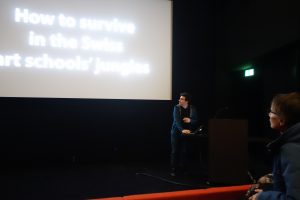
Inspired by several activist artists and collectives, as well as other art projects, the Coko Nuts collective uses real-life testimonies and a lot of humour to address inequities within art institutions and society in general. Coko Nuts questions, what are successful strategies by non-European students to deal with inequities encountered at their schools? How can these strategies be depicted in art projects? And how can a more equitable treatment of non-European students lead to a more successful internationalisation of Swiss art schools? They present a series of video interviews with foreign students who have faced exclusion, in one way or another, during their student life in Geneva’s Art Schools (HEAD – Genève & HEM Genève – Neuchâtel) in order to provide some answers and raise new questions (see also CO-RESEARCH).
During the final symposium’s PARCOURS the testimonies were shown in the Toni Kino and a VIDEO BOOTH INSTALLATION allowed people to share their own videos with the Coko Nuts Collective.
Have you experienced any exclusion or marginalization due to your diversity?
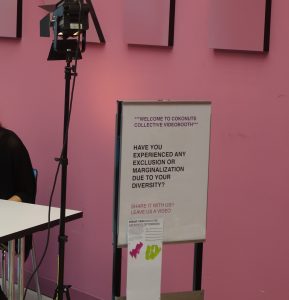
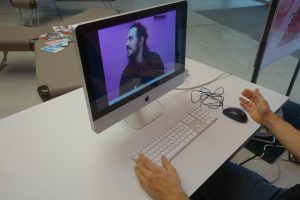
Art.School.Differences final report and statements
Le rapport final Art.School.Differences, les prises de positions des écoles partenaires et la meta-prise de position à leur sujet du comité scientifique international sont en ligne sous rapport final et prises de position.
Le chapitre 9 synthétise les conclusions, chapitre 10 rassemble les champs d’action identifées pour parvenir à une école d’art plus inclusive.
Disability inclusion
REPORT ON THE FINAL ART.SCHOOL.DIFFERENCES SYMPOSIUM by Nina Mühlemann*
I attended the Symposium ‘Because it’s 2016! Challenging inclusion and exclusion at Swiss art schools’ as someone with a strong interest both in the performing arts and in disability inclusion. Growing up as a wheelchair user in Zurich and studying English and German literature in Basel, a critical analysis of disability or its representation was never part of the curriculum alongside gender, race or sexuality, even though I longed for theoretical frameworks that included disability. Once I discovered Disability Studies and realised that this was an emerging field in the UK and the USA, I decided to pursue a Master’s degree in the UK. Currently I am writing my doctoral thesis at King’s College London about the vibrancy of disability arts in the UK. When I arrived to do my master’s degree in London in 2010, I was amazed and delighted to discover the high professional standard of disabled artists in the UK in all art fields. Often, this work gives profound insight into different ways of being in the world and how we, as a society, value them.
I was very curious to hear at the Symposium what the situation is like in Switzerland for young disabled people who are keen to become professional artists. Where do Swiss art schools stand at the moment when it comes to inclusion? What are the barriers, and how can they be removed? What kind of insight can experts give who have been working in the field or art school inclusions all over the world? What can we learn from their experiences? This report will be written from a perspective that focuses on how disability was addressed during the Symposium, and I will attempt to insert disability into some of the questions or issues that were raised during those two days.
The day at ZHdK started off with Sophie Vögele, Philippe Saner, Pauline Vessely and Carmen Mörsch presenting their research on social differences in the admission process at Swiss art schools. The participating schools were the Zurich University of the Arts (ZHdK), the Haute école d’art et de design – Genève (HEAD – Genève) and the Haute école de musique Genève – Neuchâtel (HEM).
The researchers took a report from the UK as a starting point, Jackie McManus’ study ‘Art for a Few’, which stated that art schools are for the privileged, people who are white and middle-class. The researchers were then interested to find out how art schools in Switzerland recruit, evaluate and select their candidates – what is the ‘ideal student’ in this process, and furthermore, how do students cope with the idea of this ‘ideal student’? Are there any mechanisms that effect the exclusion of very specific social groups? In their results, they found, for example, that more and more students of artistic disciplines have at least one parent with a university degree and come from culturally privileged families.
When it came to presenting fields of tensions within the selection process at art schools, the group stated that the criteria this process is based on is often very vague, which in theory could open up a space for the unexpected, for students who are ‘other’ – yet, this was not what the researchers found, on the contrary, a normative identity seems to remain a requirement.
When it comes to disability, in particular, one finding was difficult to swallow: During the open days at ZHdK for the degrees in theatre and dance, it has been stated very openly by the art school that a normative physicality and mental wellbeing is a requirement for admission. This requirement is stated publicly, which perhaps shows that discrimination of disabled people is still something that happens very openly in Switzerland. In other parts of the assessment it is also made clear that it is a requirement to be in full physical and mental health to be able to do this degree. Why is this still acceptable? The title of the evening was after all ‘Because it’s 2016!’, and that such open discrimination in 2016 is still possible made me feel furious. It also made me feel extremely grateful that this research project and the rigorous work of the researchers was there to uncover this discrimination, put it on the table and offer it up for discussion.
Many of the rigorous requirements in traditional arts training are tied to able-bodiedness – Can students practice day and night? Can they mould their bodies for their artform in a way that makes their identity disappear? Can they adapt themselves and their artwork to whatever ideal their teachers or the market demands from them? All forms of perceived difference that deviate from a fabricated normative ideal are seen automatically as lesser, as not good enough.
Not demanding compulsory able-bodiedness from students would mean to let them mould the artform so that it suits their bodies and competences, not the other way around. As disabled artists in the US and in the UK have shown repeatedly, opening up art forms – dance, theatre, visual arts, performance – to disabled bodies can enrich these art forms and release new creative possibilities. This does not mean that whole curricula have to be changed, but it does demand a more flexible approach towards assessing students’ competences and a willingness to imagine a potential that goes beyond the already familiar from teachers and admission officers. It requires a willingness of teachers to be taught by their students sometimes, too.
The researchers then gave us a little preview of the reader, which will be available from early 2017. It was created based on the findings of their research, and texts in English, German and French. The reader will have five volumes and one of them focuses on disability inclusion. The reader was created as a tool and resource for teaching, but also as a support for negotiations that happen within the sector of higher education.
After this first insight, we heard the first two keynotes, which were both fantastic. First on was Rubén Gaztambide-Fernández, with a talk entitled ‘Creation, Participation, and the Political Life of Cultural Production’. It centred around the idea of cultural production, and how it can be used. Within this rhetoric, artistic forms are understood as processes, taking material conditions, cultural contexts and social circumstances into account. What cultural production is currently granted the status of ‘the arts’? Gaztambide-Fernández explored how particular conditions are needed to achieve this status, and he wondered whether it was possible for us, as a society, to relocate or resignify what we mean by the arts and to destabilise the hierarchy that often structures what is seen as arts and what is not.
Gaztambide-Fernández explained that traditionally, but also in a neoliberal context specifically, the arts are often framed as a substance or medicine that can be injected and has transformative qualities, as a tool to civilise citizens and especially young people. As a result, what we understand as ‘the arts’ becomes trapped by its own rhetoric, being seen as something that maintains ‘European civilization’, or in other words, European cultural supremacy.
Although Gaztambide-Fernández did not mention this, the injection of arts as ‘medicine’ is highly visible within a disability context where art is often seen as a form of rehabilitation or therapy. While art of course can be therapeutic, in these contexts the produced art is often seen as of little value, simply because it was produced as a means of therapy.
The second keynote was by Nana Adusei-Poku, entitled ‘Everyone Has to Learn Everything!’. She was talking about her own experience as a researcher and teacher within higher education at Rotterdam University of Applied Science. She explained that while the general population of Rotterdam consists of 55% people of colour and 45% white people, she does not see this population reflected in her class rooms. Adusei-Poku introduced me to the concept of racial time with the example that up until some decades ago, books were first given to white schools and then handed down to black schools. This delay produced a knowledge gap. Currently, there is another knowledge gap produced by racial time at schools, as the core curriculum is always based on white history, while black history is deemed ‘elective’ and absent in the canon. Adusei-Poku sees her work as decolonising work and acknowledged that this work is uncomfortable as it is destabilizing hierarchies, and as such is often met with resistance.
Adusei-Poku further talked about her experience of caring for her white students as a black educator and the emotional labour that comes from discussing whiteness with white people. This kind of emotional work that educators take on themselves is extremely necessary and, at the same time, under-appreciated and devalued.
While Adusei-Poku voiced some frustrations about her role, as most often she can only reach those who are already willing to listen, her talk also showed how important it is for inclusion not only to happen on a student level, but also on a staff level, in order to provide an inclusive and stimulating environment to all students. To see some of the work Adusei-Poku has done and what she has achieved together with her students and allies was extremely inspiring and left me feeling very positive.
What followed after these two wonderful keynotes was somewhat disheartening and also a clear example of the resistance Adusei-Poku mentioned that her work towards inclusion is often met with.
It was now time for three directorate-members of the art schools participating in the study to respond to the findings of the report. Hartmut Wickert of ZHdK, Lysianne Léchot Hirt of HEAD – Genève and Xavier Bouvier of HEM Genève-Neuchatel started the discussion on a defiant note, with Bouvier stating that everything he was going to say would get deconstructed anyway as he was seen as ‘the voice of power’. Wickert expressed that he found the fields of action identified in the report disappointing and unsatisfying, as the school had to adhere to strict frameworks already given and that enacting change would be difficult. Léchot Hirt was prepared to claim more responsibility for the findings of the study in her answer, saying that results came as a shock to her as the institution considers itself as innovative, and the study proved a rigidity and a predictability of the institution that she did not realize was there.
In their responses, all three educators repeatedly brought up the marketplace and the standard the market expects from absolvents of art schools, suggesting implicitly that the market demands certain kinds of people, especially ones that are already privileged. Some statements also made it seem as if rigid policies implemented on a cantonal and national level made it next to impossible for the schools themselves to evoke change. The three educators also questioned the methodology of the study, which seemed to serve as a distraction to respond to the real issues the report had pointed out. As the discussion progressed it became clear that many in the audience, myself included, were dismayed by the reaction of the gatekeepers of these three institutions.
I appreciate the gatekeeper’s presence at the discussion, because this is not something that can be taken for granted, and it shows a readiness to listen. Léchot Hirt also stayed for most of the 2-day symposium, which shows a willingness to learn about the issues discussed and openness for change. I am also aware that there well may be instances where a lack of funding or rigidly imposed frameworks make it difficult for the schools to enact change. However, as I mentioned at the beginning of the post, when it comes to disability there has been the case of such discouragement towards disabled students that has come from the ZHdK itself that I know there are profound misunderstandings and shortcomings which need to be addressed urgently.
In the discussion Wickert brought up DisAbility on Stage as an example where a step towards inclusion had already been taken, a research project at ZHdK which “aims to foster a discourse on dis/ability within Swiss Art Schools and universities by questioning models of dis/ability in theoretical reflection, performing practice and education. It brings together a unique team with members from national universities, art schools, dance and theater companies, and festivals, by including the three major Swiss language regions.” I am very excited about this project, but also dubious whether it is enough to readdress the systematic exclusions of disabled performers that have been happening for decades at Swiss art schools. DisAbility on Stage aims to bring disabled artists and art students together to foster understanding and collaboration, but it does not change the fact that disabled students are discouraged to apply to ZHdK.
I voiced this concern in the discussion and was told that the curricula of the art programmes at ZHdK could not be changed overnight and yet again that the art schools depend on applicants who the market has a demand for. Several people furiously spoke out against this response – as someone pointed out, justifying your exclusions and ableism with the fact that the same thing is happening on ‘the market’ is not good enough, especially as other countries such as the UK have shown that a) including disabled students does not require a complete change of the curricula and b) there is a market for disabled artists.
Once the discussion round was over I felt angry and disappointed, but also hopeful and, once again grateful for the people who did this research and organized this symposium to address the inequalities their research brought to light. A very energetic performance by Ntando Cele finished the day on a quite provocative note – Ntando slipped into different roles and the show encompassed a monologue chock-full of dark humour and punk songs performed live on stage, all the while addressing the systemic racism present in the art world, but also in Switzerland generally.
This full-on day left me quite exhausted for the 9am start on Saturday, but the two keynotes were once again fascinating: Cornelia Bartsch talked about the gendered and queer spaces she found in the music of Bach, and the music included in her presentation felt wonderfully soothing after the highly emotional experiences on the day before. Rena Onat and Bahareh Sharifi discussed the current situation in Germany, where a recent political decision to let refugees into the country was accompanied with funding of cultural education for those refugees, even though a further art school education is most of the time not a possibility for them. Furthermore, they brought in examples of artists in Germany and elsewhere who have experienced racism and used these experiences to think through structures of support.
After the two keynotes, there was a parcours where different rooms invited us to engage further with some of the questions and issues raised in the keynotes and presentations. While I enjoyed the two rooms I visited, I really needed the time to properly digest all the input from the two days, and more importantly, to connect with other people who attended the symposium. This was one of the most gratifying insights from the symposium: It opened up a room where alliances could be voiced and built. Fields that work with identity can sometimes be a little inward looking. In disability studies, we sometimes think about disability without taking other markers of difference or intersectionality into account when in reality, it can be so productive to look outwards, to share our insights and to listen to the insights of others.
In the afternoon, Melissa Steyn gave the final keynote about the important decolonizing work she has done within education in South Africa, and then Adusei-Poku, Jackie McManus, Olivier Moeschler, Ruth Sonderegger, Melissa Steyn and Ulf Wuggenig in their capacities as International Advisory Board members did a conference wrap-up. They highlighted again how important this work of the report is, and that the resistance that was shown towards it showed how necessary it was to get the ball rolling. I was very glad that I attended the symposium, even if it was upsetting for me to be confronted with the findings of the report. I left the symposium on a hopeful note, feeling inspired about all the fascinating research I heard about, especially as I think it will have an impact on the way I approach the classrooms I am teaching in. I am very excited for the readers to be published and hope that this research has been an important milestone which will evoke change at Swiss art schools and beyond.
*Nina Mühlemann is a doctoral student and Teaching Assistant at King’s College London at the Department for English Literature. Her focus is to analyse works of disabled artists and compare them to mainstream representations of disability. The title of her thesis is ‘Beyond the Superhuman: Performing Disability Arts Around London 2012’.
I’M HERE AND I’M BLACK, BUT I’M NOT HERE TO BE BLACK
ART.SCHOOL.DIFFERENCES: REPORT ON THE FINAL SYMPOSIUM by Quentin Delval*
Arriving at the Toni Areal after a long day and a longish train ride, I wasn’t in top form when I entered the Hörsaal 1 around 7:15pm. But the setting instantly refreshed me. Attendees were engaged in an intense discussion. “So you’re basically saying you can’t improve living conditions of minority students because that’s not what the market wants, even though you’re part of what creates that market?” was an attendee asking, the microphone in her hands. An art school representative sitting on stage had just explained to the audience that schools depend on what the “market” wants, in terms of student output. “The reality is that we depend on that”, he said, “so it is a bit more complex than just changing curriculum and practices”. He wouldn’t get away with such a “chicken and egg” contradictory stance. I heard someone whisper “so we don’t end colonialist thinking because it expects us not to?”. I raised an eyebrow. Art.School.Differences, you had my attention.
The conversation revolving around how to circumvent institutional inertia (“of course we need to change things, and of course we can’t wait until society’s ready, but we need to do it the smart way”, i.e. not now, not radically) was brought to a halt by the categorical imperative of the clock. But it was only to give us time to attend the next part of the evening, a performance that would show exactly why Art is a necessary part of thinking and changing (minds about) inequalities. Half part prejudice-triggering show, half part Fanon-based concert, the performance was a real chance for one to burst their little own racist bubble. Emphasizing that “I’m here and I’m black, but I’m not here to be black”, the artist also reminded us that “black people can write (books) too” and we should read them. How many books have you read, this year, that have been written by black authors?
Refreshed by the scent of smart, radical questioning emanating from this first evening, I went to sleep with a feeling of impatience for the next day.
TRANSFORMING THE GAZE
It wasn’t just out of personal need for academic brainstorming and entertainment that I appreciated this start of the week-end. One of the main challenges of equality in Universities of Applied Sciences in Switzerland today lies in the need to make contact with and convince the ones who need to be. Transforming the gaze of the people operating at key positions of the power structures. Extend the talk beyond the inner circle of the people already working in the field of equal opportunity and/or social justice. How do you convince people who, most of the time, won’t even hear the words you have to say, won’t share your definitions, perceptions of reality, and immediate interests? The second day of Art.School.Differences’ final symposium would provide ample choice of answers.
The keynotes, to start with, highlighted what certainly are major aspects of how domination is maintained, namely the illusion that it comes from a rhetoric construction one would just have to debunk in order to see equality advance, and the illusion that theoria is how you rebalance the access to the power structures of society. The focus of the talks therefore opened room for a materialist understanding of domination (in Delphy’s sense) coupled with the need of praxis spaces: the sexist and racist theories and distribution of power are the symptom of a power structure that also has to be addressed by granting access to a praxis, a collective experience, interaction, even at a local level, which empowers the individuals with more than words, and potentially changes the minds.
DECENTRALIZE YOUR ASS
And coherently enough, this is what the parcours was all about. Five hours of workshops, interactive performances, questioning discussions – and walking around the building, here getting a glimpse of ballet dancers practicing, there being caught by the red sound of a trumpet – all served the purpose of bringing your senses to your attention. Inequality is not (only) staged in the conscious mind, it is performed by all senses, by all forms of attention, and they all need their time of deconstruction and reconstruction. “What is this?” asks a performer, holding coffee beans in her hands, standing in a dark room in which selective lighting directs your attention, “what is this?”. Someone says “coffee beans” and she reacts “really? Really?”. It is true that we could have said “the direct consequence of a collusion between colonialist structures of power and neoliberal economy” (ah, are those different?), which are also alive in the other items on that table, chocolate, tea, bananas…. It is true we should decentralize our perspective if we were to understand the fabric of the worlds, both objective and subjective. It is true that what we have to decentralize is not only our minds, granting us with the comfortable feeling of having “understood” exclusion or privilege, but it is our very ass that needs to move aside. It is true we have a responsibility in giving birth to the freedom of our perception. That we have to remove our mask and stop expecting others to put one on.
Maybe it is my background in philosophy (or, as one workshop organizer emphasized, aren’t backgrounds rather foregrounds? I had spent the week reading about students with “Migrationshintergund” and that remark hit the right spot), but I found these phenomenological experiences quite on point. They were asking us to think with more than the theoretical bits we had acquired through the years, they were actually asking what thinking really was about. In another workshop, art-related feminist practices were “offered” to the attendees. One could listen to a video by Judith Butler and/or draw and/or look around the room for feminist manifestos and/or take interest in national statistics on gender inequality and/or do nothing. Which was a good revelator of our relative incapacity to seize our curiosity and be an active part of our “decentralization” – most of us were just expecting to be told about this passage from talk to action. But it was ours to build.
HOLDING POWER STRUCTURES ACCOUNTABLE
Another very important part of the symposium had to do with discussing the institutional obstacles to social justice in art schools: often through a clever mobilization of bourdieusian sociology, attendees were invited to reflect upon the conditions of possibility of failure and success in an art school – which, of course, bears important similarities with the rest of the educational landscape. What kind of capital(s) do you need to get in? And once you’re in, how is the institution allowing you to adapt to its contradictory, ambiguous demands of normalization? How do you become this original artist (teacher standard) who still has to evolve in a school standardized to fit the global market (institution standard)? How do you reconcile being asked to develop your own style, your individuality, when diversity is not allowed structurally? How do you deal with being judged solely on your own individual work within one individual class, while at the same time being supposed to be ready for a job market in which you’ll be requested to work in groups on different disciplinary tasks at the same time? How can you succeed when the teachers’ set of skills does not include diversity training, and they confuse your working-class critical perspective on mass-produced aesthetics with a lack of (established) taste? How do you survive never being sure of where you are and why?
The symposium also offered great opportunities to deal with those realities (and I am intentionally not using the word “questions” here), providing some tools to start creating our own synthesis. Art schools can try to “fix the women” and “fix the minorities” by injecting them with skills, resources, networks and access to the established competition. But that won’t serve any other purpose than perpetuating the inherently flawed social logic of the said competition. Art schools have to fix themselves, and have to be held accountable for their involvement in the solidification of discriminating power structures.
This mirrors the priorities of higher education at large today. Whether it is about horizontal (access to the training) or vertical (progression in the structures of power) discrimination, words are not enough, and it is not the minorities who solely “need help”. Educational institutions need to help themselves, educate themselves too. Open praxis spaces, decentralize their perceptions, think of how they can rebuild those on critical grounds, and implement changes – at least those were, among others, leads discussed over the week-end.
And maybe this can start with a simple question, which was also generously given to us in the conclusion to the symposium: to whom do the schools belong? To whom do the schools belong?
*Quentin Delval is working with the development services of Human Resources and diversity at the French University of applied science HES-SO. The team he works with is responsible to coordinate actions for the equality and diversity – and to intitate new ideas – within all the schools affiliated to the structures of Universities of Applied Sciences in the French speaking part of Switzerland (Romandie). In his doctoral thesis in philosophy at the Uiversité de Louvain-la-Neuve in Belgium he wrote about how scientific expertise ultimately generates the exclusion of the groups it claimed to represent or protect.
Surviving Art School. An Artist of Colour Tool Kit
We would like to draw your attention to a publication Surviving Art School. An Artist of Colour Tool Kit created by Collective Creativity, which came out of a workshop and lecture at Nottingham Contemporary; discussing race and politics in art schools today. It is accessible via this link.
A further publication key words devised by artist Evan Ifekoye and produced in collaboration with Schools and Teachers Tate London Learning is available via this link.
About Collective Creativity: Collective Creativitiy is an intentional informal non-hierachical collective space created to share ideas to reflect on texts/films/art (and more) in a group setting, that inspire, interest or provoke us and/or our practice. Collective Creativity is a group formed out of necessity, to carve collaborative space outside of the institutional framework where a specific Black QTIPOC (queer/trans* people of colour) voice and experience could be nurtured. Collective Creativity are Evan Ifekoya, Raisa Kabir, Rudy Loewe and Raju Rage. For more information please refer to their website.
A Symposium by Art.School.Differences
Venue: Toni Areal, Zürich on 11 & 12. November 2016
Times: FRI 14-21.15h; SAT 9-18.15h
Please register (free admission): a_s_d.eventbrite.com and indicate if you need special accommodation
A year ago, when asked “why it is so important to have a gender balanced cabinet,” the newly elected Prime Minister of Canada Justin Trudeau replied, “because it’s 2015!” It is fitting then, in 2016, to renew a collective commitment. Through our research and collaborations in Art.School.Differences we question social inequality in art schools and examine how exclusion interweaves with gender, the body, class, diversity, and internationality, as well as interrogate the structural implications this has on perceptions of the ‘ideal art student.’ It is our goal to understand processes of inclusion and exclusion at work in higher art education in order to challenge, counter, and eventually overturn them. By striving for more equality, plurality, and heterogeneity among the institutions’ students, staff, and curricula we would like to encourage Swiss art schools to become globally inclusive in 2016.
Now, as the research project comes to a close, we would like to encourage further research, initiatives, and interventions to challenge inclusion and exclusion in higher (art) education. Because it’s 2016!
We look very much forward to welcome you to this event, enabling various discussions around inclusionary and exclusionary processes, engaging with anti-discriminatory practices and looking beyond insights acquired through Art.School.Differences!
Disability and Performer Training – a colloquium, Tuesday 25th of october
“The moment when we start having skilled disabled performers lokking for work, they will start pushing the medium.” (Pedro Madacho, Co-Artistic director, CandoCo Dance Company, UK)
With a critical comment provided by Art.School.Differences in the plenary afternoon-discussion. Flyer
Save the date, November 11./12.2016: Challenging Exclusion 2016!
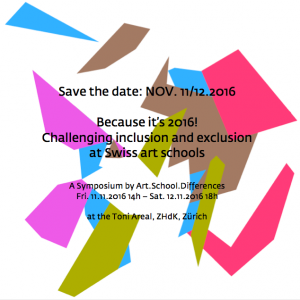 SAVE THE DATE: November 11/12.2016 at the Toni Areal, ZHdK, Zürich
SAVE THE DATE: November 11/12.2016 at the Toni Areal, ZHdK, Zürich
Join us for a final symposium by Art.School.Differences
→ Find out about the main findings of the research
→ Listen to keynotes by Nana Adusei-Poku (Rotterdam), Cornelia Bartsch (Hamburg), Rubén Gaztambide-Fernàndez (Toronto), Bahareh Sharifi with Rena Onat (Berlin), and Melissa Steyn (Johannesburg)
→ Support us for the book launch of the Art.School.Differences Reader
→ Attend a panel with the deans of the participating schools (HEAD – Genève, HEM – Genève, ZHdK)
→ Enjoy a performance by Ntando Cele (Bern)
PLAY and WIN in an anti-discriminatory parcours to engage with
→ The daily micro-practices of discrimination of international students at art schools.
→ The notion of good design and its role in design education: “Are you ‘good’ enough?”
→ Reflections on decolonizing the curricula at art schools: Everyone has to learn everything.
→ Making Differences through solfège.
→ Double-quoted world: how designers with working class background deconstruct universal categories of aesthetics.
→ Mentoring and practices of collective supervision.
→ Challenging power structures in the arts – «the master’s tools will never dismantle the master’s house» (Audre Lorde).
→ Vage Vorstellung vom eigenen Ausdruck in Kunst und Unterricht.
→ Art related Feminist practices: How to deviate from normativities? Artists at work, from talk to actions.
→ Perceptions of the student’s curriculum at a design school: Resistance, assimilation, dissimulation, confrontation and autonomy.
With: Nana Adusei-Poku, Patricio André, Lorenz Bachofner, Claire Bonnet, Marie-Antoinette Chiarenza, Victor Cordero, Maëlle Cornut, Fabio Fernandes Da Cruz, Laura Ferrara, NIC Kay, Julia Kuster, Paola de Martin, Andrea Nucamendi, Sarah Owens, Romy Rüegger, Nora Schiedt, Micha Seidenberg, Daniel Zea, and others
The conference language will be mainly English with some parcours contributions in German and French.
Conference convenors: Carmen Mörsch, Sophie Vögele, Dora Borer, Philippe Saner with Maja Renn.
For inquiries please contact: Sophie Vögele (sophie.voegele@zhdk.ch)
Summaries of Co-Research Projects
HEAD Projects
How to survive in the Swiss art school jungle
The project of Daniel Zea, Hyunji Lee and Andrea Nucamendi is concerned with the inequalities faced by non-European students at Swiss art schools. The research group that understands itself as a collective has identified several administrative and everyday challenges structuring the marginalization of non-European students at HEAD such as money and paperwork, language, artistic and conceptual references, or the lack of courses that transmit basic technical skills. While focusing on the students’ lived experiences, their survival strategies, and their everyday and artistic responses to discrimination, the collective is also asking how a more just treatment of non-European students could contribute to a more successful internationalisation of the art school. These questions will be addressed through the creation of a web-series in which non-European students and teachers speak about their experiences and (strategic) responses to discriminations (see https://vimeo.com/search?q=coKo+nuts for first videos). This video documentation seeks to (1) make visible and raise consciousness about mechanisms of exclusion, (2) to equip non-European students with tools to perceive of (and cope) with discrimination, and (3) to think about the ways in which art schools could enhance their process of internationalisation, notably by making reflection on structural inequalities an integral part of the curriculum.
Alterity put into center
Martine Anderfuhren, Patricio André, Claire Bonnet, Fabio Fernandes Da Cruz and Ivan Gulizia from HEAD’s department of visual communication seek to initiate a series of events that stresses the ways in which students differ from the school’s assumed norm. In a first step of preliminary inquiry, the research team has identified strategies which students deploy to tame and curtail their “alterity” over the course of their study. They developed a definition of “alterity” and found five dynamics – assimilation, concealment, confrontation, resistance, and autonomy – which were tested with the help of a self-administrated questionnaire. The team’s initial concern with the tools students and lecturers may seize in order to call attention to the art school’s internal “others” has increasingly given way to the question of how an informal networking and mentoring system could be developed, whereby different students god-mother_father each other. The first event they have planned for shall be announced by a “fire alarm” signalling the urgency of questioning institutional norms and its processes suppressing difference. It is the requisite initial event from which further unannounced events shall follow, sparking off exchange and conversations on the (existing) diversity within the student and teaching body. The aim is to make “alterity” a functioning principle that is conscious and present throughout institutional processes. In this way and along the events, the project shall grow and eventually spread to other departments of the school and be taken up by further student cohorts.
HEM Projects
The socio-cultural & socio-economic backgrounds of non-European students
Patrik Dasen and Soojin Lee conduct an ethnographic study that investigates the socio-cultural and socio-economic backgrounds of non-European students at the HEM-Genève. They are particularly interested in their musical trajectories and their lived experiences in Geneva. The study is based on semi-structured narrative interviews that focus on a broad range of issues such as the students’ family backgrounds, their current financial situation in Geneva or their relationship to the school’s and the Swiss federal administration (regarding visa issues ect). A preliminary analysis of these in-depth conversations complicates generalized notions about the assumed comfortable, upper-class status and the privileged position of international music students. While evaluating their everyday needs and intense institutional struggles in Switzerland, the researchers also aim at valorising the socio-cultural potential non-European students represent for the school. Further, interested in student-teacher interaction, they are also interviewing teaching staff. The data generated allows for the sensitisation and the opening up of critical debates among and between students, teachers and administrative staff, concerning the processes of discrimination at the heart of the institution.
Solfège – a universal language?
Victor Cordero, Bernardo Di Marco and Micha Seidenberg suggest that solfège (ear training), as it is currently understood and taught at Swiss music academies needs to be profoundly rethought. Contrary to popular notions about the universality of music theory, the theoretical premises of solfège are far from being universal. Rather, there is a variety of underestimated non-western pedagogic traditions that theorize musical processes in ways that have not made it into higher education. Based on qualitative interviews with students, professors, and executives and on the analysis of statistics by HEM-Genève, the group explores the structural exclusions of (mostly) non-European music students who were not socialized into the inherently Euro-American solfège tradition – hence who have not been trained to read or rewrite a score after hearing music. While solfège plays a decisive role in the admission process at Swiss music academies, its testing demands competences acquired prior to entering higher education. By assessing (universal) cognitive competences according to a regional tradition, music academies are prone to overlook much artistic potential. Given that HEM-Genève wishes to attract and integrate “international” students, thus students, whose cognitive ear training may differ from the way in which solfège has been constructed by Euro-American art schools, the conflicts emerge that are the object of this study.
ZHdK Projects
The notion of “good design” in higher design education
The project of Sarah Owens, Tingshan Cavelti and Allaina Venema interrogates the figure of the “good designer“ and the seemingly universal nature of “good design“ with its implicit claim to moral integrity. Starting from the BA course in Visual Communication at ZHdK, they ask how the “good designer“ is constructed within professional discourses and within the logic of tertiary education. A preliminary analysis of design journals and conversations with students shows that the most celebrated designers tend to be able-bodied, white men who represented as “design mavericks” or “design service providers”. In as much as these figures function as role models at German Swiss design schools, it needs to be asked how they shape and homogenize students’ professional identities, and to what extent their construction works to perpetuate the internationally recognized “Swiss style.”
The project thus aims at questioning and interrupting this seemingly natural, reproductive cycle. This will be done by examining curricula and teaching materials, and by instigating critical conversations among students and teachers over unspoken understandings of “good design” and related key terms such as “good taste,” “talent,“ or “creativity”. Finally, the norms constructed within admission procedures, presentation of final works, employment strategies, or criteria for course self-evaluation shall be discussed and, while always considering the school’s institutional framework, possibly modified.
Notions of one’s “own expression” in grammar school art education
Julia Kuster, Laura Ferrara, Lorenz Bachofner, and Nora Schiedt interrogate how grammar school art educators understand the phrase “own expression” (“eigener Ausdruck”) in art education, as well as related key terms such as individuality, autonomy, or authenticity. They are concerned with the in- and exclusions produced by these understandings. Based on their own experiences as former grammar pupils, as MA students of Art Education at ZhdK and as future grammar school art educators, the group sees itself positioned at an interface where aesthetic tastes, norms and values have been reproduced without thorough reflection.
Their preliminary analysis shows that finding one’s “own expression” amounts to more than a learning target. Inscribed in grammar school curricula, this phrase reflects ideas about artist originality that hail from the project of enlightenment. In practice, expression is equated with originality and contrasted with imitation, e.g. when teachers mention a pupil’s manga-style drawings as an example for lacking “own expression”. The group has been collecting, visualizing, and mapping thoughts, questions, pictures and teaching materials; this “mapping” serves as a guide for further interviews (at Kantonsschule Küsnacht) and is continually extended by the examples art educators contribute from their own teaching practice. Based on this mapping, the group envisions the production and dissemination of digital and analogue leaflets, are aimed at sensitizing art instructors at different institutions.
Inclusion und Exclusion through mentoring in artist education
Romy Rüegger and Yvonne Wilhelm are examining the mentoring format in the BA program in Art and Media and the MA in Fine Arts at ZHdK. Mentoring consists of a series of one-on-one conversations between teacher and student or, possibly, artist group: An experienced artist accompanies a prospective artist (group) in developing their practice and recommends references, work methods, decision-making tools ect. Inevitably, these conversations are shaped by differences in artistic socialization and professionalization that foster mutual preferences, discriminations, in- and exclusions. Given that mentoring has been a tool to sustain cultural differences, to perpetuate the existing canon and to reproduce exclusive and excluding relationships within the field of art, the project addresses the (potential) “bonds” and the power relations at the heart of the intimate mentoring situation.
Due to different personal and institutional positions, Romy Rüegger (as an assistant and BA tutor) and Yvonne Wilhelm (as a lecturer in the MA program) follow slightly different approaches. From the outset, they have been documenting their mentoring experiences and research strategies on a semi-public blog. Their sporadic exchange with mentored, co-researching students will be continued and the research results of mentors and students shared on a second, semi-public blog. Further, in spring 2016 a workshop on the mentoring format will be developed and offered; as an artistic outcome, performative presentations on artistic research are being contemplated.
All of you: Thanks for your amazing work!
Serena O. Dankwa.
Disability, ableism and the body in art schools
Colloquium no. 5; Friday 3rd July 2015, 18.00 at HEAD – Genève
The assumption that everybody is physically and mentally fit, efficient and productive is so much at the heart of higher education that ableism is often times not considered when it comes to diversity. In preparing for its fifth and final colloquium, the Art.School.Differences team realized how central disability as a category of analysis is in understanding processes of inclusion and exclusion in the field of higher education.
Disability studies have deconstructed the assumed difference between able and disabled bodies by pointing out that we are all only temporarily abled-bodied: Sooner or later every-body will face physical or mental restrictions and depend on helping hands and devices. Nevertheless, ableism is easily overlooked in our outcome- and efficiency-oriented teaching and research practices. And, ableism is much more than the discrimination or social prejudice against people with visible or invisible impairments. It is based on the notion of an ideal bodily standard and the fundamental distinction from everything that deviates from this standard. In higher art education in particular, the assumption looms large that passion and dedication imply working 24/7 and being ready and able to ignore such basic needs as eating or sleeping. If the aim is to create an art school free of discrimination, we need to ask how the body is represented in and by art schools, and what ableism means for teaching, for learning and for our understanding of art and aesthetics in general.
Only very recently disability has been made part of diversity policies in art institutions. But as Sophie Vögele noted in her welcome address, while the diversity of institutions is measured by counting nationalities of students and addressed by organizing multicultural dinners, there are no serious measures taken so far to tackle ableism. This would imply that “institutions provide access to disabled students and teachers in order to allow them to pursue their studies and work, but it is also important to acknowledge disability as a potential for new or non-mainstream artistic expression.” A famous example for such new forms of expression is the British dance film by DV8 Physical Theatre and its principal character David Tool, a dancer without legs. https://www.youtube.com/watchv=QgUT0Ufmkbk&feature=youtu.be
In his introductory comments Xavier Bouvier, Head of Studies and Head of the Composition & Theory Department of the Haute Ecole de Musique de Genève, addressed the challenge of creating more “equal, fair and non-normative“ art school curricula. In particular he focused on some of the keywords in the latestet version of the Bologna Declaration of Europe’s Ministry of Education. Among other the Bolgona reform, which has initiated fundamental changes in order to create the “European Higher Education Area,“ aims at developing “competence based“ curricula. The term “competence“ refers to the applicability of knowledge, hence the student’s capacity to apply the knowledge acquired and be fit for the labour market. In this context of applicability and employ-ability, competence profiles are in danger of perpetuating a form of ableism which dis-ables certain students. Unless designers of competence profiles validate the (often creative) ways in which students with disabilities acquire and apply knowledge and consider their alternative skills and strategies as an asset, the logic of competence will not enhance the presence of such students with special needs.
In the art school context the question of who will be employable and which competences will matter most in the future is tricky, given that the market for performing artists has undergone and will continue to undergo enormous changes in the decades to come. Success measured within the normative model of being able to answer to a prior fixed market demand, may be less important than the ability to build new demands. Another point Bouvier singled out is Bologna’s ambitious goal to foster “intercultural understanding“ in order to “strengthen European and global citizenship and lay the foundations for inclusive societies.“ Especially in the context of “conservatoires“ that seek to conserve and transmit certain musical traditions, it is hard work to build up artistic understanding across cultures. Taking into account that music cultures are steeped in traditions that “frequently behave in normative ways much remains to be done.“
Sébastien Kessler the main speaker of the evening, describes himself as an activist. Kessler has an engineering degree in physics at the EPFL of Lausanne and a Master in Health Economics. Asked to represent the point of view of a person with a “handicap,” he got increasingly involved in adult education. Kessler co-founded a consultancy that specializes in universal access and has worked with Swiss hospitals, airports and universities.
Kessler took his personal experiences as starting point to his presentation. As July 3rd was one of those dog days of summer, he started his presentation by addressing the way in which the heat affects wheel chair users. He did so by polemically instructing us, the non-wheel-chair-using audience, to add something to our curricula: “Stick your feet to the floor, the back to chair and don’t move for an hour. If you don’t manage you’ll get a bad mark.“ The lesson: We tend to be unaware that heat and sweat makes it harder to sit for long hours without getting soar; the ability to sit amounts to an unspoken (ableist) requirement of higher education.
Aimed at informing and educating, Kessler’s presentation highlighted a range of disabling practices, as well enabling strategies and self-representations of “handicapped” people. A North American “disability sensitive training” video he showed (see the link in the last slide of PPT Sébastien Kessler) was particularly impressive, if only because, both white people and people of colour spoke about their disabilities. By explaining how they liked to be interacted with, they account for the fact that it is not easy “to interact with people you are not accustomed to,” as Kessler put it. What goes unsaid of course, is that they are thereby taking on the burden of educating their fellow “non-disabled” people.
A critical aspect that came up when Kessler mentioned Switzerland’s recent vote in favour of embryo testing, was the question of happiness. While some disability organizations supported the new law, others questioned its eugenic premises and the implied link between dis/ability and un/happiness. Kessler suggested that economic privilege – which, as I would add, tends to be accompanied by racial privilege – plays a major role in whether or not an impaired person can live a comfortable, and supposedly happier life. Without further exploring the question of suffering and happiness, Kessler pointed out that a monthly allowance of 1500 CHF, the minimum Swiss disability pension, makes life challenging. He further indicated that his own mobility and visibility as an activist owes much to the fact that his parents had the means to send him to good schools. His social and cultural capital as a white male Swiss citizen helped in finding an internship and enter a job through the backdoor, in making strategic choices about his studies (public health) and becoming an entrepreneur in a sector (the private field of disability) in which, as he says, his visible impairment is an asset rather than a disability.
“Le freak, c’est chick!” the title picture to Kessler’s presentation is a still from the American horror film “Freaks” by Tod Browning.
Produced in 1932, its actors and actresses usually performed in carnival sideshow where they were to show case their physical “deformities.” According to Wikipedia, the original version of “Freaks” was considered to be too shocking and was destroyed. Today, people with disabilities figure in dogma films such as Lars von Trier’s “Breaking the waves “ or “Danger in the Dark” (see picture below). It would have to be examined not only how exactly they are portrayed, but also how they are positioned in terms of their racial, gender, and class affiliation.
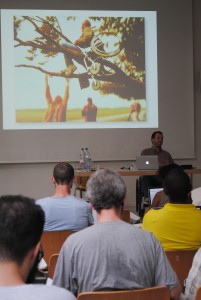
“Disabled people are never represented as normal. They are either super intelligent or they are incorporated as the villain, they are represented as either inefficient or as highly talented.”[1] The later notion of being extraordinary, intersects with attempts to produce positive images, by portraying what, say, sportsmen in wheel chairs are capable of. Showing a video ad on disabled sports, Kessler mentions that he himself, regardless of his non-sportive looks, has been asked whether he plays Basketball. Ironically, as I would add, able-bodied young Black men get asked the same question; the connecting logic perhaps being: there are certain “other“ fields, such as sports or music, in which even non-normative bodies are credited for their successful performance.
Kessler himself did not focus on the ways in which different minoritized groups are interpellated by the same norms, or excluded in different or similar ways. Neither did he engage with the ways in which different marginalized groups are being played against each other, politically and in cultural representations. Rather, concerned with determining the needs of and providing universal access to people with a variety of physical and mental impairments, his key message was: “you are not disabled everyday, you are in a disabling position depending in your environment and what concepts you meet.“ This important message also transpires in his carefully put together powerpoint presentation PPT Sébastien Kessler.
[1] However, Kessler also reminded us of the adds that depicted happy children affected by trisomy 21 (Down syndrome) in the late 1980s, in which people with disabilities are portrayed as, at least potentially, “normal” consumers.
Serena O. Dankwa
is a classical musician who became a radio journalist who became a black feminist anthropologist
https://www.zhdk.ch/?person/detail&id=201721
Invite to colloquium 5: Disability, ableism and the body: Diversifying, the politics of representation and queering art school
Friday, 3rd of July 2015
18.00h
Xavier Bouvier, Haute École de Musique (HEM)
Welcoming and introductory remarks
18.15h – 19.45h
Sébastien Kessler: Le freak, c’est chic
In his talk, Sébastien Kessler – “survivor of eugenics” or “opportunistic slacker” – embraces his visible impairment as an asset rather than a disability. What is our perspective on a population that at times is stigmatized as being vulnerable, while at other times is judged as impressive? How do you balance the conflicting and yet most normal desires to be both ordinary and extraordinary? Come listen to Sébastien and participate in a debate on the art of being freak in our contemporary society. — Freak out!
[dis]abled, Sébastien Kessler is physicist and health economist, an alderman in Lausanne’s City Council, community activist and founder of a consulting firm that specializes in universal access to the built and outdoor environments and services (www.id-geo.ch)
Venue: Haute École d’Art et de Design, HEAD, Auditoire, Boulevard James Fazy, 15, Geneva.
Global Exclusion and Diversity: Reading Migration and Gender in Art Schools
Colloquium no. 4 Friday 24th April 2015, 18.00 at ZHdK
Radical lectures delivered in less radical institutional settings tend to be opened by official welcome notes that are well-intended, but often boring or that even downplay the radical stance the lecture itself is about to propose. This was not the case on April 24th, when David Keller, head of International Affairs at ZHdK, welcomed Melissa Steyn and Marie Buscatto in Zurich. In front of a full house, Keller opened the evening by acknowledging the ambivalence of his own position, as a “super privileged, white, heterosexual man from a middle-class background,” in the context of an programme that aims to destabilise the hegemony of that very position.
Having been involved with literacy projects in development cooperation in Latin America, Keller was particularly interested in Steyn’s concept of “critical diversity literacy.” Steyn argues that “those socialized into spaces of relative disadvantage tend to be more literate in critical diversity,” than those who are born into positions of privilege. Taking this statement at face value, Keller wondered if he was invited to attend the evening in order to improve his own “diversity literacy,” hence his own capacity to read and recognize processes of discrimination, by being exposed to an experience of multiple exclusion himself (as supposeldy one of the few straight white men in the lecture hall). While this remark might have sounded a bit heavier than intended, it does speak to the spectre haunting those who are indeed comfortably occupying privileged social positions.
Without justifying those who feel pressured, threatened or even “discriminated” against when confronted with the demands of a critical diversity agenda, Keller suggested that such (defensive) responses indicate that “something powerful is coming.” Further, he held that Paulo Freire’s major work “Pedagogy of the Oppressed” should be inverted and rewritten into a ”Pedagogy for the Oppressor“ who is ready to work on his ”failed socialization“ and be educated on the injustices he did not learn to see. Keller closed his opening remarks by welcoming Melissa Steyn as the “critical friend” needed to ask provocative questions and offer her critique.
Keller was followed by Carmen Mörsch, head of the institute for Art Education, who introduced the lecturers in more detail, after assuring Keller that Art.School.Differences project considers him an ally: Keller’s attempts at reflecting on ZHdK’s process of internationalization by discussing critical theories were, she said, highly appreciated by the Art.School.Differences team.
18.15h
Melissa Steyn (Wits Centre for Diversity Studies, University of the Witwatersrand, Johannesburg)
Getting into focus for the 21st Century: Critical Diversity Literacy as an essential lens
Melissa Steyn, best known for her work on whiteness in post-Apartheid South Africa, has been developing Diversity Studies as field in Higher Education since 2001. She holds the South African National Chair in Critical Diversity Studies and is the founding director of the Wits Center for Diversity Studies, which challenges ideas about difference through research and education.
Steyn understands diversity as a mode of “being different together” that is enabling for everybody. As simple as this may sound, in reality it’s complicated. Especially since diversity has become a core trope for the world and since claims to be in favour of diversity have become standard – not least in Higher Art Education. Steyn’s framework of “Critical Diversity Literacy“ accounts for the fact that achieving true diversity is a struggle that is far from being a carnivalesque celebration and consumption of differences, as neo-liberalism tries to make us believe. This critical type of literacy is much more than a private, cognitive skill to encode and decode written texts. Rather, this literacy connotes the socially and culturally embedded capacity of reading, or, drawing on France Winddance Twine, “of receiving and responding to a social climate and prevalent structures of oppression.” [1]
Steyn defines Critical Diversity Literacy (CDL) as “an informed analytical orientation that enables a person to ‘read’ prevailing social relations as one would a text, recognizing the ways in which possibilities are being opened up or closed down for those differently positioned within“ a specific social context. For years, Steyn has been working on and extending the criteria to assess (someone’s) CDL. I will focus on three of the ten critical points she outlined in Zurich:
1. an understanding of the role of power in the construction of differences that make a difference.
Point one gets at the heart of how the social is constructed. It conveys that unequal power dynamics are the medium through which differences become salient. We first need to detect the discourses that hold centres and margins in place and determine whose life opportunities are restricted and whose are enabled as a result. This can only be done by putting power at the centre of analysis.
2. recognition of the unequal symbolic and material values of different social locations. This includes acknowledging hegemonic positionalities and concomitant identities and how these position non-hegemonic others.
Dominant groups are the ones who possess the freedom to define which differences matter. The privileged have the power of define the oppressed populations as the others. While these others may also have internalized normative understanding of themselves (as an example Steyn mentions that “good Blacks“ in South Africa perform their blackness in a way that makes whites feel comfortable), they still tend to have a better more receptive understanding of how social dynamics of exclusion are operating.
9. understanding the role of emotions, including our own emotional investments, in all of the above
As affect theory has shown, the way we feel about others and about ourselves, our emotional responses are not inevitable or “natural”, but acquired. Through socialisation we learn who we are supposed to trust and feel close to, and who we are supposed to fear. CDL requires the willingness to explore of our sense of self and to recognise our privilege or complicity. However uncomfortable this process be, becoming aware of how we have been shaped emotionally is crucial to the process in letting go routinized responses and becoming critical diversity literates.
Last but not least, as Steyn emphasizes, point ten reminds us that critical diversity literacy implies not just the capacity to read but also the capacity to (re)write the script that lead to exclusions:
10. an engagement with transformation of those oppressive systems towards deepening social justice at all levels.
While I have picked out four point that seem particularly relevant to myself, you should consult the powerpoint presentation in which Melissa Steyn names all the ten criteria she developed: Steyn_PowerPoint
Discussion:
Steyn’s insistence on a critical perspective reflects that un-critical diversity projects are part and parcel of neo-liberal agendas. The fact that diversity is a form of literacy that needs to be acquired (rather than consumed and celebrated), implies that it is crucial to focus on power dynamics. Steyn understands diversity as struggle against existing power blocks that need to be changed. Asked about the strategies of survival of those who try to enact critical diversity literacy, Steyn pointed out that it is important of being aware of how draining and “dangerous” this work can be. Comparing the Swiss situation of diversity and its study to the South African engagement with diversity, Steyn holds that it is in fact harder to persuade the “centers” (like Switzerland) to shift. In South Africa discussions concerning the need for critical diversity are held less politely and with an urgency that is perhaps necessary to make changes.
19.15
Marie Buscatto (Université Paris 1 Panthéon Sorbonne)
Art worlds as gendered worlds
Marie Buscatto is well-known for her empirical work on “artistic practices as gendered practices.” An amateur jazz musician herself, she has used both ethnographic and classical sociological methods in exploring the role of female artists in the world of jazz in particular. In her presentation at ZHdK she set out to explain why men in arts “always fare better than women in terms of becoming and remaining recognized as artists,” and why, nevertheless, increasing numbers of female artists are being successful. With regard to her binary use of gender categories (“woman” / “man”), Buscatto sent ahead that she considered “transsexuals” a recent and relatively marginal phenomenon that she did not consider in her study.
Despite the public perception about the open-minded of the art world, it is highly gendered in ways that leads to the marginalisation of female performers over time. Here’s a summary of the main points of this gradual, cumulative process:
1. as in other professional fields, female performers are overrepresented in devaluated, feminine connoted areas such as dancing and singing. In jazz this imbalance is striking – 96% of all instrumentalists are male and 65% of all singers are female – and reflects how the gendered order is naturalized in music from an early age. Boys, for instance, may be encouraged to pick up an electric guitar and allowed to explore informal (musical) environments, whereas girls are rather called into learning formal, classical instruments.
2. socializing works better for male than for female performers. Buscatto mentions that it is difficult to feel comfortable as a woman in an otherwise all male band, because the men “don’t feel comfortable with you either.” To the men feels safer to play (music) with colleagues of your own gender, and, as I would add your own race.
3. persistent stereotype about women not being powerful creators, complicates recognition as an independent female artist. When female pop musicians do become famous, it’s assumed that someone else writes their hits for them, that they are backed by powerful boyfriends, or that it is their (physical) seductiveness that makes them successful. Male seduction, however, is associated with action and creativity.
4. women struggle to articulate private and professional life not because they have children, but rather, because unlike their male who are backed by a helpful girlfriend, heterosexual female artists tend to have lovers who are themselves busy artists and less prepared to cater to their partner’s career and professional needs.
Nevertheless, a number of factors have contributed to the raising numbers in women in art, since female artists are strategically:
1. turning feminine stereotypes into an asset; women artists in particularly “feminine” and devaluated fields (such as knitting) managed to revert stigma and end up being considered original.
2. consciously or unconsciously deploying “feminine capital such as seduction” as a marketing strategy, while remaining aware that drawing on certain stereotypes is counterproductive, because it makes you a “feminine artists” and not a universal artist.
3. “compensating” exclusions by drawing on formal funding programmes and/or on their class privileges. Generally, female musicians are equipped with more cultural capital and have better access to (male) social networks.
– they tend to have higher educational degrees than men; art schools are efficient in allowing young women to practice networking and performance skills that are hard to gain in stigmatizing, informal spaces.
– public funding and projects for underprivileged youth in popular music and dance seem to have a positive effect for women.
– it has been shown that the use of screens to hire orchestra musicians has elevated the percentage of female orchestra musicians by 30%.
4. involving themselves in collective action and commercial and/or feminist initiatives organized for (or by) all-female bands and groups of artists.
Discussion:
While appreciating Buscatto’s empirical findings, her neglect of intersectional and historical works by black and queer theorists was critiqued. First, her pre-empting comment about trans*issues being a recent phenomena was interrogated on the basis that gender-queers (people transgressing gender binaries in various in/visible ways) have existed long before the term trans* gained currency. The risk of reproducing certain stereotypes (e.g. about women’s use of seduction) looms large, when gender binaries are taken for granted. This leads to an epistemological blind spot, for instance on the structuring effects of what queer theorists identified as “male homosociality” or on what disables or allows for the reversal of certain stigmatizations and not others. Further, it would be interesting to consider contemporary female performers who reject to play on their femininity (by wearing baggy clothes ect) against the background of a long history of female musicians who cross-dressed and/or passed as men in performance spaces. This “queering” of the gaze does not mean we look for “homosexuals.” It compels us, however, to consider strategies of seduction or of non-seduction by making use of interdisciplinary theories on the intertwinement of gender and sexuality.
The discussion continued the following day in the colloquium among the professors and co-researchers during the Art.School.Differences colloquium. It illuminated the challenge of communicating across disciplines and the need to connect sociological research tools to cultural theories in order to understand the many faces of exclusion.
[1] France Winddance Twine refers to reading practices in the context of what she coined as “racial literacy.”
Serena O. Dankwa
is a classical musician who became a radio journalist who became a black feminist anthropologist
https://www.zhdk.ch/?person/detail&id=201721
Colloquium no. 4
Friday 24th April, 18.00 at ZHdK
Radical lectures delivered in less radical institutional settings tend to be opened by official welcome notes that are well-intended, but often boring or that even downplay the radical stance the lecture itself is about to propose. This was not the case on April 24th, when David Keller, head of International Affairs at ZHdK, welcomed Melissa Steyn and Marie Buscatto in Zurich. In front of a full house, Keller opened the evening by acknowledging the ambivalence of his own position, as a “super privileged, white, heterosexual man from a middle-class background,” in the context of an programme that aims to destabilise the hegemony of that very position.
Having been involved with literacy projects in development cooperation in Latin America, Keller was particularly interested in Steyn’s concept of “critical diversity literacy.” Steyn argues that “those socialized into spaces of relative disadvantage tend to be more literate in critical diversity,” than those who are born into positions of privilege. Taking this statement at face value, Keller wondered if he was invited to attend the evening in order to improve his own “diversity literacy,” hence his own capacity to read and recognize processes of discrimination, by being exposed to an experience of multiple exclusion himself (as supposeldy one of the few straight white men in the lecture hall). While this remark might have sounded a bit heavier than intended, it does speak to the spectre haunting those who are indeed comfortably occupying privileged social positions.
Without justifying those who feel pressured, threatened or even “discriminated” against when confronted with the demands of a critical diversity agenda, Keller suggested that such (defensive) responses indicate that “something powerful is coming.” Further, he held that Paulo Freire’s major work “Pedagogy of the Oppressed” should be inverted and rewritten into a ”Pedagogy for the Oppressor“ who is ready to work on his ”failed socialization“ and be educated on the injustices he did not learn to see. Keller closed his opening remarks by welcoming Melissa Steyn as the “critical friend” needed to ask provocative questions and offer her critique.
Keller was followed by Carmen Mörsch, head of the institute for Art Education, who introduced the lecturers in more detail, after assuring Keller that Art.School.Differences project considers him an ally: Keller’s attempts at reflecting on ZHdK’s process of internationalization by discussing critical theories were, she said, highly appreciated by the Art.School.Differences team.
18.15h
Melissa Steyn (Wits Centre for Diversity Studies, University of the Witwatersrand, Johannesburg)
Getting into focus for the 21st Century: Critical Diversity Literacy as an essential lens
Melissa Steyn, best known for her work on whiteness in post-Apartheid South Africa, has been developing Diversity Studies as field in Higher Education since 2001. She holds the South African National Chair in Critical Diversity Studies and is the founding director of the Wits Center for Diversity Studies, which challenges ideas about difference through research and education.
Steyn understands diversity as a mode of “being different together” that is enabling for everybody. As simple as this may sound, in reality it’s complicated. Especially since diversity has become a core trope for the world and since claims to be in favour of diversity have become standard – not least in Higher Art Education. Steyn’s framework of “Critical Diversity Literacy“ accounts for the fact that achieving true diversity is a struggle that is far from being a carnivalesque celebration and consumption of differences, as neo-liberalism tries to make us believe. This critical type of literacy is much more than a private, cognitive skill to encode and decode written texts. Rather, this literacy connotes the socially and culturally embedded capacity of reading, or, drawing on France Winddance Twine, “of receiving and responding to a social climate and prevalent structures of oppression.” [1]
Steyn defines Critical Diversity Literacy (CDL) as “an informed analytical orientation that enables a person to ‘read’ prevailing social relations as one would a text, recognizing the ways in which possibilities are being opened up or closed down for those differently positioned within“ a specific social context. For years, Steyn has been working on and extending the criteria to assess (someone’s) CDL. I will focus on three of the ten critical points she outlined in Zurich:
1. an understanding of the role of power in the construction of differences that make a difference.
Point one gets at the heart of how the social is constructed. It conveys that unequal power dynamics are the medium through which differences become salient. We first need to detect the discourses that hold centres and margins in place and determine whose life opportunities are restricted and whose are enabled as a result. This can only be done by putting power at the centre of analysis.
2. recognition of the unequal symbolic and material values of different social locations. This includes acknowledging hegemonic positionalities and concomitant identities and how these position non-hegemonic others.
Dominant groups are the ones who possess the freedom to define which differences matter. The privileged have the power of define the oppressed populations as the others. While these others may also have internalized normative understanding of themselves (as an example Steyn mentions that “good Blacks“ in South Africa perform their blackness in a way that makes whites feel comfortable), they still tend to have a better more receptive understanding of how social dynamics of exclusion are operating.
9. understanding the role of emotions, including our own emotional investments, in all of the above
As affect theory has shown, the way we feel about others and about ourselves, our emotional responses are not inevitable or “natural”, but acquired. Through socialisation we learn who we are supposed to trust and feel close to, and who we are supposed to fear. CDL requires the willingness to explore of our sense of self and to recognise our privilege or complicity. However uncomfortable this process be, becoming aware of how we have been shaped emotionally is crucial to the process in letting go routinized responses and becoming critical diversity literates.
Last but not least, as Steyn emphasizes, point ten reminds us that critical diversity literacy implies not just the capacity to read but also the capacity to (re)write the script that lead to exclusions:
10. an engagement with transformation of those oppressive systems towards deepening social justice at all levels.
While I have picked out four point that seem particularly relevant to myself, you should consult the powerpoint presentation in which Melissa Steyn names all the ten criteria she developed: Steyn_PowerPoint
Discussion:
Steyn’s insistence on a critical perspective reflect that un-critical diversity projects are part and parcel of neo-liberal agendas. The fact that diversity is a form of literacy that needs to be acquired (rather than consumed and celebrated), implies that it is crucial to focus on power dynamics. Steyn understands diversity as struggle against existing power blocks that need to be changed. Asked about the strategies of survival of those who try to enact critical diversity literacy, Steyn pointed out that it is important of being aware of how draining and “dangerous” this work can be on all levels. Comparing the Swiss situation of diversity and its study to South African engagement with diversity, Steyn holds that it is in fact harder to persuade the “centers” (like Switzerland) to shift. In South Africa discussions concerning the need for critical diversity are held less politely and with more urgency that is perhaps necessary to make changes.
19.15
Marie Buscatto (Université Paris 1 Panthéon Sorbonne)
Art worlds as gendered worlds
Marie Buscatto is well-known for her empirical work on “artistic practices as gendered practices.” An amateur jazz musician herself, she has used both ethnographic and classical sociological methods in exploring the role of female artists in the world of jazz in particular. In her presentation at ZHdK she set out to explain why men in arts “always fare better than women in terms of becoming and remaining recognized as artists,” and why, nevertheless, increasing numbers of female artists are being successful. With regard to her binary use of gender categories (“woman” / “man”), Buscatto sent ahead that she considered “transsexuals” a recent and relatively marginal phenomenon that she did not consider in her study.
Despite the public perception about the open-minded of the art world, it is highly gendered in ways that leads to the marginalisation of female performers over time. Here’s a summary of the main points of this gradual, cumulative process:
1. as in other professional fields, female performers are overrepresented in devaluated, feminine connoted areas such as dancing and singing. In jazz this imbalance is striking – 96% of all instrumentalists are male and 65% of all singers are female – and reflects how the gendered order is naturalized in music from an early age. Boys, for instance, may be encouraged to pick up an electric guitar and allowed to explore informal (musical) environments, whereas girls are rather called into learning formal, classical instruments.
2. socializing works better for male than for female performers. Buscatto mentions that it is difficult to feel comfortable as a woman in an otherwise all male band, because the men “don’t feel comfortable with you either.” To the men feels safer to play (music) with colleagues of your own gender, and, as I would add your own race.
3. persistent stereotype about women not being powerful creators, complicates recognition as an independent female artist. When female pop musicians do become famous, it’s assumed that someone else writes their hits for them, that they are backed by powerful boyfriends, or that it is their (physical) seductiveness that makes them successful. Male seduction, however, is associated with action and creativity.
4. women struggle to articulate private and professional life not because they have children, but rather, because unlike their male who are backed by a helpful girlfriend, heterosexual female artists tend to have lovers who are themselves busy artists and less prepared to cater to their partner’s career and professional needs.
Nevertheless, a number of factors have contributed to the raising numbers in women in art, since female artists are strategically:
1. turning feminine stereotypes into an asset; women artists in particularly “feminine” and devaluated fields (such as knitting) managed to revert stigma and end up being considered original.
2. consciously or unconsciously deploying “feminine capital such as seduction” as a marketing strategy, while remaining aware that drawing on certain stereotypes is counterproductive, because it makes you a “feminine artists” and not a universal artist.
3. “compensating” exclusions by drawing on formal funding programmes and/or on their class privileges. Generally, female musicians are equipped with more cultural capital and have better access to (male) social networks.
– they tend to have higher educational degrees than men; art schools are efficient in allowing young women to practice networking and performance skills that are hard to gain in stigmatizing, informal spaces.
– public funding and projects for underprivileged youth in popular music and dance seem to have a positive effect for women.
– it has been shown that the use of screens to hire orchestra musicians has elevated the percentage of female orchestra musicians by 30%.
4. involving themselves in collective action and commercial and/or feminist initiatives organized for (or by) all-female bands and groups of artists.
Discussion:
While appreciating Buscatto’s empirical findings, her neglect of intersectional and historical works by black and queer theorists was critiqued. First, her pre-empting comment about trans*issues being a recent phenomena was interrogated on the basis that gender-queers (people transgressing gender binaries in various in/visible ways) have existed long before the term trans* gained currency. The risk of reproducing certain stereotypes (e.g. about women’s use of seduction) looms large, when gender binaries are taken for granted. This leads to an epistemological blind spot, for instance on the structuring effects of what queer theorists identified as “male homosociality” or on what disables or allows for the reversal of certain stigmatizations and not others. Further, it would be interesting to consider contemporary female performers who reject to play on their femininity (by wearing baggy clothes ect) against the background of a long history of female musicians who cross-dressed and/or passed as men in performance spaces. This “queering” of the gaze does not mean we look for “homosexuals.” It compels us, however, to consider strategies of seduction or of non-seduction by making use of interdisciplinary theories on the intertwinement of gender and sexuality.
The discussion continued the following day in the colloquium among the professors and co-researchers during the Art.School.Differences colloquium. It illuminated the challenge of communicating across disciplines and the need to connect sociological research tools to cultural theories in order to understand the many faces of exclusion.
[1] France Winddance Twine refers to reading practices in the context of what she coined as “racial literacy.”
Serena O. Dankwa
is a classical musician who became a radio journalist who became a black feminist anthropologist
https://www.zhdk.ch/?person/detail&id=201721
Public lecture by Jackie McManus
18.03.2015, ZHdK:
Hopes and Fears for Art: Policy and Practice in Widening Participation in Art and Design Higher Education in the UK
Jackie McManus (University of the Arts, London)
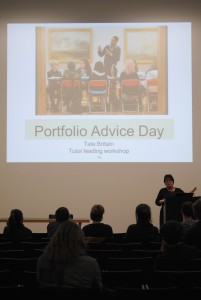
Jackie McManus’ evening lecture drew on one of the core references for Art.School.Differences: The study “Art for a Few: Exclusion and Misrecognition in Higher Art and Design Education” by Penny Jane Burke and Jackie McManus (2009). This study evaluated the British government initiative “Widening Participation” (WP) a ongoing programme that has redressed the under-representation of certain social groups in higher education since the late 1990s. While WP has become a key policy discourse (in the UK and internationally), McManus reminded us that the objective of diversifying the student body is still largely driven by economic and utilitarian aims of creating a better-educated workforce. WP’s neo-liberal motivations are paralleled and underpinned by the increasing marketization of higher education: degrees in art and design subjects are no longer eligible for government subsidy, and the reality is that that is restricting, rather than widening participation.
McManus’s presentation illuminated the insidious ways in which exclusion still operates by focusing on the admissions procedures she observed at five British art schools. In particular she examined the case of a black working-class woman, on whose admissions interview she sat in. The interview with the young woman, who was applying for a fashion design BA, was cut short after said she was influenced by hip hop and interested in designing sports tops. Before the interview took place, the interviewers had not deemed her portfolio weak. But after the interview they agreed they would say her portfolio was weak as the reason for rejecting her. In her assessment form the tutors made notes about the “unfashionable clothes” she was wearing. Moreover, the fact that the candidate intended to live with her parents while studying was read as a sign of immaturity. The “expensively dressed” English-white middle-class male candidate interviewed immediately afterwards, who intended to leave home (“because it’s all part of the experience”), and “cited famous contemporary artists”, but had “considerably poorer qualifications,” was offered a place.
Admission practices are tied up with complex operations of exclusion that privilege the habitus and “the cultural and linguistic capital of ’traditional’ students, who tend to come from white, middle-class backgrounds.” McManus’ findings confirm the observations the Art.School.Differences team made within the admissions procedures at Swiss art schools: In McManus’ words, admissions judgments tend to be “shaped by implicit, institutionalized, disciplinary and racialised perspectives of what counts as legitimate forms of experience and knowledge.” It is thus not enough to work at rendering admissions processes more “transparent;” transparency alone does not make them more “fair.” Fairness implies teaching those with the supposedly “wrong” influences and backgrounds, how to access and decipher admissions information, how to decode unspoken institutional assumptions and how to develop their own (admissions) strategies and portfolios. Often, however, art educators who work with working-class and “Black and ethnic minority” youth focus on vocational techniques (such as making handbags or printing T-shirts) rather than on imparting the discursive skills and strategies it takes to access and persist in the field of higher art education themselves.
24./25. April 2015: Global Exclusion and Diversity
PUBLIC EVENING LECTURES
Global Exclusion and Diversity: Reading Migration and Gender in Art Schools
Friday 24 April 2015, 6 pm – 8.15 pm, followed by a drink
The public twin-lecture hosted by Art.School.Differences interrogates diversity, gender and migration in the field of art and art education from a critical feminist and postcolonial perspective. The two lecturers will offer specific tools that enable us to read and critically reflect on differences. Their suggestions are highly relevant to higher education – at ZHdK and other teaching and research institutions – but also to a number of other institutional fields.
18.00h
Welcome note: David Keller, Head of International Affairs ZHdK
Introduction: Carmen Mörsch, Head of Institute for Art Education ZHdK
18.15h
Melissa Steyn (Wits Centre for Diversity Studies, University of the Witwatersrand, Johannesburg)
Getting into focus for the 21st Century: Critical Diversity Literacy as an essential lens
“The ‘Critical Diversity Literacy’ framework can be regarded as an informed analytical orientation that enables a person to ‘read’ prevailing social relations as one would a text, recognizing the ways in which possibilities are being opened up or closed down for those differently positioned within the unfolding dynamics of specific social context. The presentation will outline ten criteria for ‘Critical Diversity Literacy’.”
19.15h
Marie Buscatto (Université Paris 1 Panthéon Sorbonne)
Art worlds as gendered worlds
“Based on several empirial examples, this talk will try to describe not ony how women tend to find it more difficult to operate as artists than their male colleagues, but also resources and tools women, consciously or tno, use to transgress such gendered limiting processes in order to become and to remain artists over time, and sometimes, even to become famous worldwide arists!”
20.15: Apéro Riche
Location: Hörsaal 1, Level 3 Toni-Areal, Zurich University of the Arts (ZHdK), Pfingstweidstrasse 96, 8031 Zurich
De-Privileging Art School: antisexist and antiracist methods
Colloquium no. 3: Friday 27th February 2015, 18.00 at HEAD-Genève
“Exception is a comfortable situation, allowing elasticity and singularity in our daily work, in our daily institutional management and in our world view.” Lysianne Léchot, dean of Studies at Geneva University of Art and Design was clear in her welcome address: notions of exceptionalism are at the heart of art school and need to be rethought. “Exception can be precious when it comes to art and design: aesthetic beauties and intellectual strength are, in the very best examples, exceptional,” Léchot continued. “But exception can also be a pitfall. Especially in a public educational institution. When schools reproduce social, ethnic or gender inequalities in their daily work, in their daily management and in their world view, they should be criticised, and transformed, so as to match the democratic ambition of equal opportunity for all.”
If notions of being exceptional and therefore somehow outside or above society allow art schools to measure things with a different yardsticks and to be less transparent and less accountable, institutionalized exceptionalism is indeed a pitfall. Such art school exceptionalism undermines broader attempts to dismantle structural discrimination in tertiary education. As I see it, it inhibits the frequently invoked quest for “diversity” – the discovery of supposedly unexpected talent that can innovatively undermine the normative. Who determines who is, objectively speaking, exceptional and talented enough to be admitted into higher art education? How ‘objective’ are the supposedly objective selection criteria, when notions of who has “potential” and what potential looks like, tend to be inherently classed and racialized? What criteria can we establish to ensure that “the chosen few“ entering and completing art school come from a range of socio-economic and cultural backgrounds?
Some of these questions were discussed in the afternoon session preceding the public evening lecture evening (opened by Lysianne Léchot). The seven co-research groups, consisting of students and teachers from ZHdK, HEAD and HEM, discussed a preliminary booklet of recommendations on how to foster equality and plurality at art schools which has been compiled by Art.School.Differences. These recommendations set out the areas of conflict within the admissions process at the three schools. Among other things, they indicate the proportion of Swiss art students from migrant backgrounds, so-called ‘secondas’ and ‘secondos’, and highlight that, although gender considerations have been integrated into the admission process, they revolve around binary, hetero-normative understandings of gender; and thus ideas about the masculine or feminine characteristics of an applicant are made, without consideration of gender-queer or non-normative femininities. The recommendations also include concrete tools and criteria with which to further reflect on and make more transparent the processes of admission. The co-researchers especially welcomed the recommendation that all candidates, not least the rejected ones, should be given a feedback – even if they do not dare to ask for it. Institutional feedback would turn the admissions process into a learning experience, which is valuable especially to those who could not afford to attend foundation courses (propadeutika).
Public Lecture 1: Gender discrimination in French Art schools
Fabienne Dumont, École Européenne Supérieure d’Art de Bretagne EESAB, Quimper
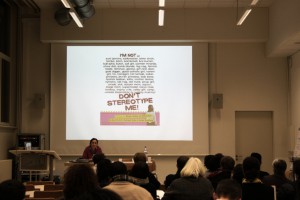
Lecture 1 by Fabienne Dumont, 27.2., at HEAD.
The first evening lecture by Fabienne Dumont, art historian, art critique, and professor for contemporary art at the “école européenne supérieure d’art de Bretagne“ focused on the marginalization of women in art schools by comparing the under-representation of women in the French art world of the 1970s and of today. She analysed gender inequality in the 1970s by looking at the small percentage of women artists represented in art exhibitions, museums and magazines. She blamed the lack of female professors and directors at Art French schools for female art students‘ internalization of limitations. Nowadays, 60% of all art students in France and a third of all art school teachers and directors are female, and the percentage of women artists in exhibitions and at biennales in France has risen to 30%. However, the fact that the number has stagnated indicates that the glass ceiling is still intact.
Speaking of her work at an art school in a marginal region of France, where many students have a limited educational background and few of them go on to pursue professional artistic careers, Dumont suggested that the curriculum should be less narrowly oriented towards the contemporary art world. More open interactive educational formats need to be integrated, without, however, privileging the attendance of male students, who are still treated as the sole future breadwinners. Dumont doubted that the charter against discrimination, currently being developed at French Art schools (mostly in response to increasing numbers of students claims of sexism and sexual harassment), will bring much change. Given that a similar policy is already in place, Dumont proposed that anti-discriminatory laws should be accompanied by the creation of “listening spaces,” which include teaching staff and administrators. The fact that female students do not receive the best marks and are less encouraged to pursue careers as professional artists, could be rectified by augmenting the numbers of female art teachers to at least 40%. “Because even if these women are not feminists, the perception of the possibility of being female artist would become more widespread amongst students.” Dumont references the “Feminist Art Program” a collective of female art students and teachers in California who rejected the idea of male genius and worked towards developing artistic criteria that legitimated “practices related to the experiences of women.” In conclusion, however, Dumont held that these women-only initiatives have lost their appeal and cannot be replicated today, but that “we obviously need programs that teach gender, postcolonial or class in the curriculum, to legitimize aspirations for greater social justice.”
GenderDiscriminationInFrenchArtSchools_FabienneDumont (Power Point Presentation)
Discussion: As Dumont did not focus much on the practical implementation of her suggestions, for example, the idea of creating a “listening space,” she was asked to explain how exactly spaces of reflection could be fostered within today’s art schools. Dumont’s personal teaching practice of forming small groups of students interested in questions of gendered inequality and empowering them by broadening their horizon, did not seem to yield the basis for a broader conversation about how to foster critical discussions on norms and inequalities across schools. Dumont’s main suggestion of fighting gender discrimination by raising the number of “women” art professors was critiqued on the grounds that it reifies “women” as a seemingly static category, and did not account for intersecting categories such as race or class. Even if “counting men and women” seemed to be the easiest way to address the complexities of gender imbalances, such an approach was problematic if it reproduced a binary construction of gender and stabilized the unmarked position of white women. Rather than reifying a male-female division and thus rendering invisible non-normative gender identifications, it might be more fruitful, discussants argued, to raise the number of teachers who inhabit a variety of “minoritized positions.”
Public Lecture 2: Decolonising Art and Education through Creative Practice
Evan Ifekoya & Rudy Loewe, interdisciplinary visual and performance artists, London
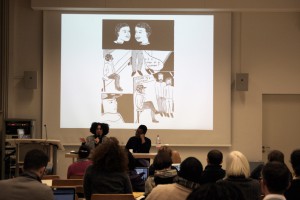
Lecture 2 by Rudy Loewe and Evan Ifekoya, 27.2. at HEAD.
The twin-presentations by Evan Ifekoya and Rudy Loewe focused on their individual work and facilitation practices as artist-activists in London, exploring anti-racist and anti-sexist methodologies by “utilising archives, contemporary culture and lived experience.” Both Ifekoya and Loewe identify as non-binary persons and prefer the gender-neutral pronoun “they” (hence also: their, them) in lieu of he or she. Both are committed to working with and making visible the (archived) works of people of colour. And both are generous in sharing their projects and ideas online, even if “this might not be a good business plan.” They like the idea of being a resource to all – while being aware, however, that the internet is not accessible to everyone either.
Evan Ifekoya’s aim of decolonising artistic practice began with re-naming themselves: Rather than using the British surname of their Nigerian father, Evan took on their mother’s maiden name Ifekoya, a name that existed prior to the insertion of British names and colonial naming practices in West Africa.
Ifekoya is part of QTIPOC, a London-based group of Queer, Trans* and Intersex People Of Colour. QTIPOC meets on a monthly basis to foster collective forms of creativity and make visible the works and histories QTIPOC. http://qtipoccollectivecreativity.tumblr.com Their homepage says: “As a collective of QTPOC artists who have all in some way felt failed by the art academy and our formal educations, this project offers up a space to critically reflect on those experiences and examine the gaps and absences in art institutions.“
Ifekoya teaches art to children who have been excluded from “normal” schools. She also takes working-class youth and children into art galleries and museums. In a school workshop taught at the Tate Modern in 2013, Ifekoya made their own body into an art project. Incited by one of the pupils who questioned Ifekoya’s sex/gender identity, Ifekoya invited all pupils to ask the visitors of the Tate, to comment on Ifekoya’s body and identity. The responses were written on stickers and posted on Ifekoya’s body. The process amounted to a way of learning about the relativeness of categorization, while also putting at center-stage a black, gender-queer body within a colonial museum space. (The Tate was built on money gained during the transatlantic slave trade.)
“Artfunshack” Ifekoya’s colourful, weekly online art show, draws on pop culture images and uses tropes of childhood such as the legendary U.S. TV program “Sesame Street” to address, in particular, children of colour. In one video, for instance, they are making bounty balls, in reference to the Bounty Bar – a popular chocolate bar in the U.K. which consists of coconut covered in chocolate. A ‘bounty bar‘ or ‘coconut‘ is also a derogatory term for a person of colour who does not conform to internalised stereotypical ideas about how a person of African or Asian decent is supposed to behave, and is thus criticised for being “white on the inside and brown on the outside,” Ifekoya’s “compulsory visibility” as black and gender-queer body, emerges as an important starting point for their playful work around questions of identity and authenticity and their search for utopian spaces.
Rudy Loewe is a visual artist, educator and storyteller who works primarily in comic and zine format. Lead by an autobiographical focus, Loewe addresses issues concerning gender, race, sexuality, trauma, and mental health.
Loewe’s prints and comics speak about “bad therapy” and about trying to access mental health services in London. They represent traumatic experiences of domestic violence and abuse through a child’s eyes , and they evoke sudden falls and accidents as pivotal moments in our lives. The latter comic, on “free falling,” explores the tension between being in a constant state of flux and fall, while having to be tough and compelled to compartmentalize psychological things in order to survive economically and emotionally. Loewe’s take on “free falling” ties in with an interest in how everyday uncertainties and physical trauma are passed down to us generation for generation, from mothers to daughters. Loewe’s focus on the impact of (mental) health issues on the lives of people of colour draws attention to the bodily impact of structural discrimination.
Trying to escape the black-white logic, Loewe “brown washes” their work. Instead of working in black and white, Loewe uses brown paper and brown colours, in order to make brown people central to their stories. As educator and facilitator, Loewe often works in public libraries with working class black and brown kids. Loewe seeks to cultivate a space in which children, who may not consider their experiences important, begin to explore their own narratives. Conversations that touch on gendered and bodily experiences are part of these sessions. While queerness and sexuality is only addressed indirectly, many conversations with black boys revolve around being “stopped and searched” by the police.
Finally, Loewe talks about their interest in making archives accessible. Loewe was commissioned to make a comic on the late black modernist artist Claude McKay, a radical queer socialist who had some fame in the 1920s but was then largely forgotten again. By highlighting and reinvigorating different parts of McKay’s subjectivity, Loewe seeks to work against the marginalization of black artists and muses who “disappear” again, as they do not seem to be part of a larger tradition or not known to young artists of colour.
Discussion: Though Loewe and Ifekoya work mostly with kids and youth outside higher art schools, their intersectional practices could be considered a response to Dumont’s paper. While Dumont’s quest to contest gender discrimination at art schools, centers around the figure of the “woman” professor, in Loewe’s and Ifekoya’s teaching practice, gender is inextricably intertwined with conversations about race and sexuality. These issues are brought into conversations by using their own bodies to interrupt ideas of what constitutes the sexual and gender identity of a black/racialized person and by prompting pupils and arts teachers to rethink preconceived notions of masculinity and femininity.
The question, however, arises to what extent they can protect themselves from the unwanted attention their openness might trigger. Making their bodies and their traumatic experiences the site for instigating conversations on mental health and on what it means “be othered,” requires certain measures of self-protection. Their work implies a weaving in and out of art, academia and community spaces and requires a constant contending with the position of being simultaneously an insider and an outsider.
Saturday February 27th, 9.00 at HEAD:
Public Displays of Accountability: Addressing Race in the Arts / Curriculum
Workshop by Evan Ifekoya and Rudy Loewe
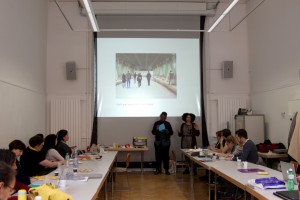
Workshop by Rudy Loewe and Evan Ifekoya, 28.2., at HEAD
The workshop elaborated on the issues Rudy Loewe and Evan Ifekoya raised in their lecture the previous evening. Besides presenting contemporary arts projects that challenge institutional frameworks (the links to these projects are listed in the PowerPoint presentation), the focus was on practical tools for addressing race and racism and on decolonizing art school teaching practices. Drawing on African-American feminist scholars and activists bell hooks and Audre Lorde, Loewe and Ifekoya advocated “the dismantling of the master house” in the art school curriculum, and hence the undermining of the “whiteness and hetero-patriarchy” of the curriculum. This implies not only engaging black teachers and professors, but teaching the writings of postcolonial scholars as part and parcel of the art school curriculum.
In terms of developing a radical pedagogy, Loewe and Ifekoya themselves have been inspired by texts such as Paulo Freire’s “Pedagogy of the Oppressed” and bell hooks’ books “Teaching Community: A Pedgagy of Hope” and “Teaching to Transgress: Education as the Practice of Freedom.” hooks thinks through “how we are as bodies” in the learning/teaching environment and focuses specifically on the ways in which we navigate the spaces we enter as learner and/or and facilitators.
The core theme of the session was accountability. “By accountability we are referring to the process by which actions and language can be questioned in a non confrontational way.” While the workshop participants did not raise any issues that might need to be addressed, Loewe and Ifekoya tested our capacity to have non-confrontational conversations by speaking about their unease upon entering the HEAD and being confronted with two posters that offended them. One of the posters advertised an art exhibition entitled Utopia/Ethiopia. Yet, none of the artists listed seemed to be of Ethiopian background or to work on Ethiopian art. Rather the poster featured a grey-haired white man, thus reproducing the white male gaze that tends to “other” subject positions such as the ones inhabited by Ifekoya or Loewe. The other poster, in black and white, featured the sentence “JE SUIS CHARLIE.” Although a comic artist herself, Loewe could not identify with the practices of the French satirical magazine Charlie Hebdo. In fact Loewe felt hurt by the magazine’s “very violent, racist, sexist and islamophobic content” contributed to “violence against people of colour on the street.” Loewe’s and Ifekoya’s statements triggered a discussion about the degree to which it is possible to critique the position of Charlie Hebdo subsequent to the attacks in Paris within the context of a Swiss French art school. It was observed that counter-discourses and positionings, such as “Je suis Ahmed” (Ahmed, was one of the policemen killed in the event) had only little exposure at the HEAD and appeared to be almost unspeakable.
In the final section participants were invited to give a visual response to the session by producing their own zine, addressing the question: What would an accountability process look like?
PublicDisplaysOfAccountability_Loewe_Ifekoya (Power Point Presentation)
By Serena O. Dankwa
Work in progress: Co-research projects of Art.School.Differences at the 3rd colloquium
The Saturday afternoon of this 3rd colloquium was fully dedicated to the seven Art.School.Differences co-research projects. Carmen Mörsch, who supervised the working session, emphasized a joint, collective and friendly, but critical questioning by the audience of each group’s presentation of their work in progress. This, on one hand, to give space to the potential arising out of the multitude of different experiences, disciplinary and working perspectives present at the colloquium, as well as, on the other, to allow questions and uncertainties of each research-group to emerge and to be addressed.
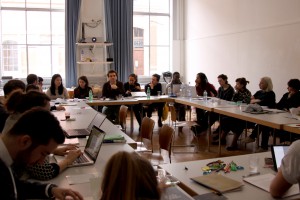
The group from Art Education at ZHdK led by Lorenz Bachofner, Laura Ferrara, Julia Kuster and Nora Schiedt focuses on the important, but contradictory role of «one’s own artistic / creative expression» in (higher) art education. On one hand, this idea is strongly related to problematic notions of talent or the genius (as well as the creatio ex nihilo). On the other, it reflects the widespread conviction that the artistic expression can be taught and learned in school. Drawing on their experience at the ZHdK, they explain that this claim was and still is not met within their own education, and go on arguing that the concept of the ‹singularity› tends to be a «Leerformel» in the sense of Ernst Topitsch. Furthermore, their research project mirrors their personal interest to break the «circle of reproduction» as they themselves are coming from high school and returning there after their studies as teachers. Methodologically, they aim at looking at the curricula («Lehrpläne») of three different high schools in the canton of Zurich and to conduct in-depth interviews with teachers while the latter are assessing their pupils’ artistic works. Possible research questions are the following: What effects do these curricula have on the individual teachers? How do teachers deal with it in their classes? How do they value work? And how do they speak about a student’s work while assessing it?
The research group from Fine Arts at ZHdK led by Romy Rüegger and Yvonne Wilhelm is interested in the question of what happens during the mentoring of a student by a teacher. These mentoring situations are of overall importance within fine arts education as working processes are individualized and have to be adapted to the interaction between teachers and students. Although this format opens up spaces for transgression and bears the overcoming of gridlocked structures inherent to teaching, it entails important moments of normativity as well as inclusion and exclusion. The research wants to address these by questioning the importance given to certain artistic values or references and canons. It also inquires the perspectives and positions taken on by speakers and how they reflect privileges. They started to collect and document research materials on an internal blog with students. To be able to overcome the challenge of their institutional positions as teachers, Romy Rüegger and Yvonne Wilhelm chose to stage a mentoring situation with students from the MA Fine Arts and from BA Kunst & Medien program and alumni at ZHdK (Onur Akyol, Martina Baldinger, Angelo Brem, Berivan Güngör, Bleta Jahaj, Patrick Kull, Rina von Burg). Some of them will take on the respective role as students and teachers while being observed by the others. Their experience and observations will be compared to the ones by the teachers themselves. The goal is to think of and establish other kinds of mentoring formats without them having to be new. While presenting their project, Romy Rüegger and Yvonne Wilhelm recalled the students group to first have been surprised about the idea of questioning the mentoring process. This suggests a strong expectation from the students that their mentors should define this situation instead of themselves. The example very well illustrates how the hierarchy of the teacher – student at art school is internalized and is reinforced in every day practice of teaching and learning.
Sarah Owen with Tingshan Cavelti and Allaina Venema from the design department at ZHdK, are researching the representations of the «ideal designer» in the educational system as well as «on the market»: Preferred are white, male, heterosexual and preferably Swiss, if not then Dutch or British subjectivities. Although abstract criteria are set up during the admission process, ideal types of designers are very prevalent. Among others, there is the maverick («Abenteurer»), lonesome wolf type, opposed to the bureaucratic designer («Gestaltungsbürokrat») type. Although both constructed ideal types differ in their narrative as well as visual representation, they nevertheless have something in common, as was pointed out in the discussion: both know the specific ‹traditions› of the design field very well: Even the one who aims to break the rules, has to know the rules beforehand. The group aims to work on questions that are interwoven with design education in Switzerland and beyond, also looking into the system of design education that is evaluated by the SERI (State Secretariat for Education, Research and Innovation) and peer reviewed every 5 years. Leading questions are: What does a designer need to know – and need to learn in order to be successful? The methodology consists in recording events and situations from everyday teaching and learning practices in which these or diverging representations of the «ideal designer» are articulated and reproduced, but also subverted. Their aim lies in constructing a sort of «counter-mythical person» in order to disrupt the relationship between a piece of work and its author.
Daniel Zea with Hyunji Lee and Andrea Nucamendi from HEAD-Genève have put their research focus on inequalities that foreign students encounter during their studies at the HEAD-Genève. They chose to especially emphasize non-European communities, as they seem to be particularly exposed. So far, they have identified a range of realms that impact equity and which they would like to touch on more in depth: Money, papers, language, artistic and conceptual references, discrimination and lack of technical lessons. As their group is composed of two foreign art students, one from Mexico and one from Korea, and is led by a Colombian teacher, their idea is to «get in contact with the subject of study, by the subjects being studied». They want to document all these inequities in video, photographs and sound recordings, in order to create a collection of material that forms an «artistic case-study» talking to students as well as teachers. Thereby, the emphasis is on how inequalities make students feel. As a final result, the group imagines an artistic piece that can have the form of a film, or an installation, or even a performance.
Martine Anderfuhren, Patricio André, Claire Bonnet, Fabio Fernandes Da Cruz and Ivan Gulizia from visual communication at HEAD-Genève are planning a series of events that, as a result, include the Otherness of students – the motto being «what you are reinforces your creativity». As a final result, their Otherness should be included into their course work and rendered productive on an overall basis instead of hampering. The planned events will at first be conducted within their own department of visual communication, such as an organizing of shared meals or quiz etc. These will enable exchanging on different professional developments, and on cultural and technical knowledge. In order for these exchanges to be fruitful, they propose to first make mini-events to create «godparent» relationships among all the students and teachers. The first of these mini-events has been planned in detail and will be announced by a «fire alarm». As they argue, it will allow for their project to start within a humoristic ambiance, as well as to have the entire school present on the same spot and to initiate the godparent relationships. However, they will keep the secret on further events and just give the advice to people that they should keep in touch with their godparents and godchildren, suggesting its helpfulness for the future. The first event is to take place mid of may.
Patrik Dasen with Soojin Lee from HEM Genève are leading a research amongst non-European students of the school with the aim of highlighting their socio-cultural and socio-economic background and current situation of studying in Geneva. This project, thus, evaluates both the music students potential needs in terms of a better integration in the general life of the institution and the potential socio-cultural added value each foreign student is, or can be, for the institution. In terms of methodology, the group first works on the a priori representation of music and students among students as well as reflected by the school, questioning Western traditional music and its symbolic power, as well as the economical, social and cultural students’ background, etc. They will conduct semi-directive interviews, starting with a few preliminary interviews with informants to establish the interview guideline. Second, they will also look into the effects of the relationship between interviewers and interviewees to reflect power relations inherent to the interview situation.
The team of Victor Cordero, Bernardo Di Marco and Micha Seidenberg works on the theoretical knowledge of music from the perspective of non-European students. Having an eliminatory function if not passed within the admissions’ process, the test of musical theory has exclusionary effects for specific student groups. It is actually highly based on competences acquired before the entry at the high school. Being given that the HEM wishes to integrate international students and thus students with a quite different knowledge from those built by the school of musical theory in Europe, a conflict of interest emerges that is the object of the research lead by this group. In order to prepare interviews with students and teachers, they are looking into the statistics made by the school for the admissions process, on, for example, the nationalities of the candidates – accepted and non-accepted – and other information gathered every year by the HEM. They also already have contacted students from non-European countries in order to exchange with them to know more about their relation to theory of music and the way it is taught at the HEM.
By Philippe Saner, Pauline Vessely, and Sophie Vögele
27./28. Feb. 2015: De-Privileging Art School
Colloquium no. 3
De-Privileging Art School: antisexist and antiracist methods, feminist, queer and postcolonial perspectives on knowledge production
Friday 27th and Saturday 28th February 2015
Haute école d’art et de design, HEAD – Geneva, Auditoire, Boulevard James Fazy 15, 1201 Geneva
Friday 27 February 2015, 6 pm – 8.15 pm, followed by a drink
The public twin-lecture held on Friday evening focuses on practices of (de-)privileging art schools and sheds light on research done on privilege and elitism from a critical feminist and postcolonial perspective.
Lecture 1: Fabienne Dumont (École Européenne Supérieure d’Art de Bretagne EESAB, Quimper)
Gender discrimination in French Art schools
This lecture will evoke the status of gender discrimination in art schools in France, from a few historical and current figures, accompanied by more qualitative analysis of the situation. This reflection will be accompanied by educational examples drawn from feminist history, especially the establishment of the Feminist Art Program in California, in order to invent solutions to fight against these discriminations.
Lecture 2: Evan Ifekoya & Rudy Loewe (performer, London)
Decolonising Art and Education through creative practice
Interdisciplinary artists Evan Ifekoya and Rudy Loewe will present individually on their artistic and facilitation practices, exploring anti racist and anti sexist methods utilising archives, contemporary culture and lived experience.
Samstag 28 February 9 am:
Workshop by Evan Ifekoya & Rudy Loewe
Public Displays of Accountability: Addressing Race in the Arts/curriculum
A zine making workshop and presentation exploring various decolonial arts/curriculum projects and accountability processes.
Round Table Moderators:
Lysianne Léchot, Professor, Dean of Studies, HEAD – Genève
Carmen Mörsch, Director, Institute of Art Education, ZHdK
Conférence
Jackie McManus (London)
Hopes and Fears for Art: policy and practice in widening participation in art and design higher education in the UK
In spite of considerable efforts to increase the social and ethnic diversity of higher education students in the UK, the academy continues to be dominated by white middle class students and is highly stratified by institution and subject area. This paper discusses the policy and practice of the project of widening participation in the UK focusing on art and design education. It draws on research undertaken with working class young people about their choice of degree subject, and on a national research project examining the admissions process in art schools in the UK. Finally, it looks at art and design widening participation programmes in London with some of the city’s poorest young people, and considers the future of this work in the context of the marketisation of higher education.
Sociologie de l’art et de l’éducation : Deuxième colloque d’Art.School.Differences, 28 et 29 novembre 2014 à la ZHdK
Le deuxième colloque d’Art.School.Differences était consacré aux concepts de la sociologie de l’art et de l’éducation. Le vendredi soir, deux conférences publiques ont été proposées par Ulf Wuggenig (Leuphana Universität Lüneburg) et Olivier Moeschler (Université de Lausanne). L’intervention de Jackie McManus, intitulée «Hopes and Fears for Art: policy and practice in widening participation in art and design higher education in the UK» a dû être malheureusement annulée à la dernière minute. Ulf Wuggenig a donc accepté de la remplacer au pied levé ce dont nous nous sommes réjouis, d’autant plus que sa communication publique faisait écho à l’atelier qu’il animait le samedi matin.
Nous fixerons dès que possible une nouvelle date pour la communication de Jackie McManus.
Dans son intervention, intitulée «Sociological Frames of References for Decision-Making in Art Schools. Value systems and their social embeddings from the perspectives of field theory, pragmatist sociology and the art worlds approach », Ulf Wuggenig s’est intéressé aux différentes applications des théories fondamentales de la sociologie de l’art. Il a ainsi proposé une introduction aux théories de « champ » forgée par Pierre Bourdieu et de « système » de Luhmanns et a également donné un aperçu de la sociologie pragmatique de Luc Boltanski et Eve Chiapello ou des Mondes de l’art d’Howard Becker. Vous pouvez accéder à la présentation d’Ulf Wuggenig en cliquant ici.
Dans son intervention «What’s the Difference? Cultural Democratization and the Social Determinants of Artistic Practices: Theoretical Considerations and a Swiss Case Study», Olivier Moeschler a quant à lui présenté quelques résultats de son étude concernant les diplômé.e.s suisses de la haute école de théâtre de Lausanne, La Manufacture (étude réalisée en collaboration avec Valérie Rolle). A travers la notion de « créacteur » (créateur – acteur), Olivier Moeschler illustre la combinaisons des exigences aujourd’hui imposées aux étudiant.e.s, qui oscillent entre qualités artistiques et facultés entrepreneuriales. Cette communication s’est également intéressée à rendre visible comment des projets ayant pour objectif la promotion « d’une diversité » peuvent renforcer involontairement des structures d’inégalité préexistantes dans l’accès à un établissement d’enseignement supérieur. Ce constat croise de près les questions de recherche au cœur d’Art.School.Differences. (Voir aussi la recension de l’étude par Marie Buscatto.)
Dans le cadre du séminaire de formation proposé le samedi matin aux groupes de co-chercheur.e.s, Ulf Wuggenig est revenu sur l’importance des théories burdieusiennes (et plus particulièrement sur les notions de champ, capital et habitus) pour Art.School.Differences. Quelques modes de fonctionnement et mécanismes d’exclusion fondamentaux du champ de l’art contemporain ont ainsi été examinés.
Le samedi après-midi a été consacré aux projets de co-recherche. Chaque groupe a pu présenter les avancées de sa réflexion et échanger avec l’équipe d’Art.School.Differences ainsi que les membres du comité scientifique international. Les présentations et les tables rondes qui ont suivi ont donné lieu à des discussions riches autour de la recherche sur les inégalités et les mécanismes normatifs dans les hautes écoles d’arts.
Pour l’équipe de recherche, ce colloque a été l’occasion d’échanges professionnels précieux avec les experts membres du comité scientifique international d’Art.School.Differences. Ainsi, Melissa Steyn (Wits School of Arts, University of the Witwatersrand, Johannesburg) a mis en perspective la question de « la démocratisation » des structures éducatives avec le cas sud-africain où une « africanisation » des institutions, c’est-à-dire une suppression des privilèges de la minorité blanche, est en marche. Ruth Sonderegger (Akademie der bildenden Künste Wien) a soulevé la problématique de l’eurocentrisme dans la compréhension et l’appréciation esthétiques lors des procédures d’admission dans les hautes écoles d’arts. Comme action concrète elle suggère d’impliquer dans les jurys d’admissions des artistes et théorcien.ne.s de l’art venant de sphères culturelles non-européennes. Enfin, Marie Buscatto (Université Paris 1 – Panthéon Sorbonne) a attiré l’attention sur les conditions de travail des étudiants en art en fonction du genre, en dehors des procédures d’admission. Il faut s’intéresser à l’organisation genrée des cursus et programmes d’enseignement ainsi qu’aux relations informelles entre les étudiant.e.s et différents acteurs de l’école d’art mais aussi en-dehors. En outre, elle souligne le rôle des institutions dans la reproduction d’une image stéréotypée de la figure romantique de l’artiste.
Communications publiques pendant le 2ème colloque le 28 Novembre à Zurich
Après le lancement de la co-recherche dans le cadre du 1er Colloque qui s’est tenu à la Haute Ecole de Musique de Genève (HEM), le 4 octobre 2014, les projets de co-recherche se poursuivent par le 2ème colloque qui aura lieu le week-end des 28 et 29 Novembre à la Haute Ecole d’Art de Zurich (ZHdK). A l’occasion de ce colloque, nous recevrons comme invité.e.s et expert.e.s, les membres du comité scientifique international d’Art.School.Differences. Seront au programme de ces journées la sociologie de l’éducation et la sociologie de l’art.
Pour clôturer ce deuxième colloque d’Art.School.Differences, nous souhaitons inviter toute personne intéressée le vendredi 28 novembre à partir de 18.00 heures à deux conférences publiques dans l’amphithéâtre 1 du Toni-Areals. Les deux intervenants, Jackie McManus de l’University of Arts of London et Olivier Moeschler de l’Université de Lausanne, questionneront la dimension institutionnelle d’une démocratisation des écoles supérieures des beaux-arts et de la politique culturelle en Grande-Bretagne et en Suisse.
Tous les intervenants et participants sont invités, à l’issue de la soirée, à un Apéro-riche dans le hall devant l’amphithéâtre 1.
Début de la co-recherche: 1er colloque le 4 octobre à Genève
Samedi 4 octobre 2014, à la Haute Ecole de Musique de Genève, a lieu le 1er colloque qui inaugure le programme de co-recherche proposé dans le cadre d’Art.School.Differences.
Ce premier échange entre l’équipe d’Art.School.Differences et les enseignant-e-s et étudiant-e-s co-chercheurs vise principalement à mieux se connaître et sera l’occasion d’un premier échange autour des différents projets proposés. Des expert-e-s et invité-e-s prendront part à cette journée : Carmen Mörsch en tant que superviseur du projet Art.School.Differences, Nana Adusei-Poku et Eva Visser de l’école d’art Willem de Kooning de Rotterdam ainsi que Ruth Sonderegger et Günay Özayli de l’école d’Art de Vienne.
Tandis que Carmen Mörsch décrira le concept et les objectifs de la co-recherche, nos invitées de Vienne et de Rotterdam présenteront leurs propres travaux sous forme de courtes conférences. L’après-midi, discussions de textes, réflexions et discussions communes des premières idées de projets de co-recherche seront au programme.
